Thorstein Veblen
description: an American economist and sociologist, famous for introducing the term 'conspicuous consumption'
214 results

The Theory of the Leisure Class
by
Thorstein Veblen
Published 10 Oct 2007
Critical Studies Banta, Martha, Taylored Lives: Narrative Productions in the Age of Taylor, Veblen, and Ford (Chicago, 1993). Brown, Doug (ed.), Thorstein Veblen in the Twenty-First Century: A Commemoration of The Theory of the Leisure Class (1899–1999) (Cheltenham, 1998). Daugert, Stanley Matthew, The Philosophy of Thorstein Veblen (New York, 2002). Diggins, John F., The Bard of Savagery: Thorstein Veblen and Modern Social Theory (New York, 1978). Dorfman, Joseph, Thorstein Veblen and His America (New York, 1961). Dowd, Douglas F. (ed.), Thorstein Veblen, A Critical Reappraisal: Lectures and Essays Commemorating The Hundredth Anniversary of Veblen’s Birth (Ithaca, NY, 1958).
…
Eby, Clare Virginia, Dreiser and Veblen: Saboteurs of the Status Quo (Columbia, Mo., 1998). Mestrovic, Stjepan Gabriel, Thorstein Veblen on Culture and Society (London, 2003). Patsouras, Louis, Thorstein Veblen and the American Way of Life (Montreal, 2004). Riesman, David, Thorstein Veblen: A Critical Interpretation (New York, 1953). Rosenberg, Bernard, The Values of Veblen: A Critical Appraisal (Washington, DC, 1956). Schneider, Louis, The Freudian Psychology and Veblen’s Social Theory (New York, 1948). Seckler, David, Thorstein Veblen and the Institutionalists: A Study in the Social Philosophy of Economics (Boulder, Colo., 1975).
…
Iam fides et pax … Audet: ‘now neglected faith and peace, and ancient honour and shame, dares to return’ (Horace, ‘Carmen Saeculare’). 1 Joseph Dorfman, Thorstein Veblen and His America (New York, 1961), 422. 2 Bernard Rosenberg, Thorstein Veblen (New York, 1963), 1. It is heady to realize that dealing with Veblen’s career prompts paying attention to the disparate work of (among others) Lester Ward, Jacques Loeb, William James, William McDougall, James Frazer, Franz Boas, Margaret Mead, Ruth Benedict, Edward Tylor, Lewis Mumford, Max Weber, Karl Marx, Sigmund Freud, John Maynard Keynes, Charles S. Peirce, George Mead, and John Dewey. Rick Tilman’s The Intellectual Legacy of Thorstein Veblen: Unresolved Issues (Westport, Conn., 1996) makes this point very well, since ‘legacy’ is the key word when it comes to assessing Veblen’s influence over the developing fields of biology, sociology, evolutionary psychology, physiology, political science, and anthropology. 3 The following comments from the Yale Review and the Journal of Political Economy are cited in Dorfman’s Thorstein Veblen and His America, 191–2. 4 Adorno, ‘Veblen’s Attack on Culture’ (1941), cited in Rick Tilman and Jo Lo Simich (eds.), Thorstein Veblen: A Reference Guide (Boston, 1985), 50. 5 After Veblen’s death in 1929, a tabulation of the sales of his ten books over his lifetime revealed that only 40,000 copies were ever sold.
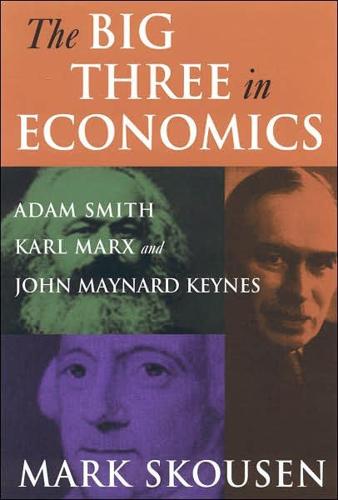
Big Three in Economics: Adam Smith, Karl Marx, and John Maynard Keynes
by
Mark Skousen
Published 22 Dec 2006
It was time to take a second look, and it fell upon the shoulders of two social economists (today they would be known as sociologists) to examine in detail the meaning of the new structure. 2. Oddly enough, while Henry George was largely an advocate of laissez-faire, his land tax scheme encouraged many of his listeners, including George Bernard Shaw and Sydney Webb, to become socialists. See Skousen (2001, 229-30). They are the American Thorstein Veblen (1857-1929) and the German Max Weber (1864-1920). Thorstein Veblen: The Voice of Dissent Veblen was the principal faultfinder and censor of the new theoretical capitalism. Having taught at ten institutions, including the University of Chicago and Stanford, he had little use for the rational-abstract-deduc-tive approach of the neoclassical model.
…
Max Weber: A Spirited Defense of "Rational" Capitalism Fortunately, Thorstein Veblen was not the only social commentator on capitalism at the turn of the century. His chief antagonist came from across the Atlantic—the German sociologist and economist Max Weber, author of the famous book The Protestant Ethic and the Spirit of Capitalism. Weber's views on capitalism were more in the spirit of Adam Smith than Veblen. As John Patrick Diggins states, "No two social theorists could be more intellectually and temperamentally opposed than Thorstein Veblen and Max Weber" (1999, 111). Both Veblen and Weber were obsessed with the meaning of contemporary industrial society—the issues of power, management, and surplus wealth.
…
New York: Verso. Dewey, Donald. 1987. "John Bates Clark." In The New Palgrave: A Dictionary of Economics. Vol. 1, 428-31. London: Macmillan. Diggins, John Patrick. 1996. Max Weber: Politics and the Spirit of Tragedy. New York: Basic Books. . 1999. Thorstein Veblen, Theorist of the Leisure Class. Princeton, NJ: Princeton University Press. Dorfman, Joseph. 1934. Thorstein Veblen and His America. New York: Augustus M. Kelley. Downs, Robert B. 1983. Books That Changed the World. 2d ed. New York: Penguin. D'Souza, Dinesh. 2005. "How Capitalism Civilizes Greed." www.dineshdsouza. com/articles/civilizinggreed.html.
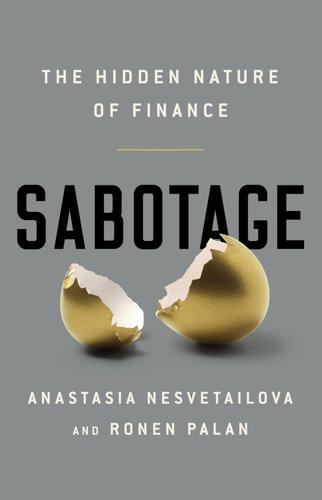
Sabotage: The Financial System's Nasty Business
by
Anastasia Nesvetailova
and
Ronen Palan
Published 28 Jan 2020
So [sabotage] has come to describe any manoeuvre of slowing-down, inefficiency, bungling, obstruction.’2 By the late nineteenth century the meaning of sabotage was used more widely in American popular parlance: to cover all such peaceable or surreptitious manoeuvres of delay, obstruction, friction, and defeat, whether employed by the workmen to enforce their claims, or by the employers to defeat their employees, or by competitive business concerns to get the better of their business rivals or to secure their own advantage.3 Veblen believed that in this expanded meaning the term ‘sabotage’ captured an important dimension of modern business. Thorstein Veblen is a controversial figure in the history of economic thought. His writing style is archaic, quite convoluted and always political. His legacy is mostly associated with The Theory of the Leisure Class, a critique of consumerism and social divisions in capitalism which he published in 1899. Today, Veblen’s theories are rarely taught in university programmes; global search engines yield many more results for ‘John Maynard Keynes’ and ‘John Commons’ than they do for ‘Thorstein Veblen’. Yet in the wake of the 2007–9 crisis, and in light of the revelations of the Panama and Paradise dossiers and the like, one unavoidably begins to ponder whether Veblen’s theory of sabotage is relevant for making sense of the many apparent crises in the capitalist organization.
…
SABOTAGE It is quite difficult to make sense of finance today by relying on textbook approaches, wherever their intellectual or political affinities may lie. To understand the remarkable persistence and prevalence of rogue behaviour, in this book we return to the ideas of a school of thought, often ignored nowadays, known as the old institutional economics (OIE). Most famously associated with the works of Thorstein Veblen and John R. Commons, this body of scholarship developed in the early years of the twentieth century in the USA, a time when American capitalism was undergoing major finance-driven changes. Observing the type of economy taking hold in the late nineteenth-century USA, and which has spread around the world since, Veblen concluded, first, that the economic system of his time was defined by the figure of the businessmen and not the entrepreneur or the capitalist.
…
‘I don’t like the word “sabotage”,’ a former Goldman Sachs trader admitted. ‘It’s just harsh… Though, frankly, how else do you make money in this business… I mean, real money…?’ Could we have found a euphemism for ‘sabotage’, then? A less offensive term to describe a core technique of moneymaking in finance? We suggest not. It was Thorstein Veblen, a father of an important school of thought in economics,1 who first introduced sabotage as a core economic concept. ‘Sabotage,’ he noted, ‘is a derivative of “sabot,” which is French for a wooden shoe. It means going slow, with a dragging, clumsy movement, such as that manner of footgear may be expected to bring on.

Capitalism and Its Critics: A History: From the Industrial Revolution to AI
by
John Cassidy
Published 12 May 2025
Ross, “The Causes of Race Superiority,” The Annals of the American Academy of Political and Social Science 18 (July 1901), 67–89. 22. Thorstein Veblen, “Review of Misère de la Philosophie by Karl Marx, and of Socialisme et Science Positive by Enrico Ferri,” Journal of Political Economy 5, no. 1 (December 1896), 100, https://www.jstor.org/stable/1817518?seq=4, reprinted in Charles Camic and Geoffrey M. Hodgson, eds., The Essential Writings of Thorstein Veblen (New York: Routledge, 2011); see also Emilie J. Raymer, “A Man of His Time: Thorstein Veblen and the University of Chicago Darwinists,” Journal of the History of Biology 46 (2013), 669–98. 23.
…
“This is the lesson of the centuries. Unless its foundations be laid in justice the social structure cannot stand.”80 11 “The ideal pecuniary man is like the ideal delinquent” Thorstein Veblen and the Captains of Industry It was Mark Twain and his coauthor Charles Dudley Warner, in their 1873 novel The Gilded Age, who gave a label to an American era characterized by political corruption and vulgar displays of wealth.1 And it was the economist Thorstein Veblen, in his 1899 book The Theory of the Leisure Class, who coined some of the most memorable terms to describe the sociology of that era, including “conspicuous consumption” and “the leisure class” itself.
…
“1897 Sears, Roebuck and Incorporated Consumers Guide,” no. 104, https://www.google.com/books/edition/1897_Sears_Roebuck_Co_Catalogue/_gdrCgAAQBAJ?hl=en&gbpv=1&pg=PA1&printsec=frontcover. 28. Thorstein Veblen, “The Economic Theory of Woman’s Dress,” The Popular Science Monthly, no. 46 (1894), 198–205, http://www.modetheorie.de/fileadmin/Texte/v/Veblen-The_Economic_Theory_of_Fashion_1894.pdf. 29. Thorstein B. Veblen, “The Socialist Economics of Karl Marx and His Followers II: The Later Marxism,” The Quarterly Journal of Economics 21, no. 1 (February 1907), 299–322, 304; see also Camic, Veblen, 319. 30. Thorstein Veblen, “Why Is Economics Not an Evolutionary Science?,” The Quarterly Journal of Economics 12, no. 4 (July 1898), 373–97. 31.
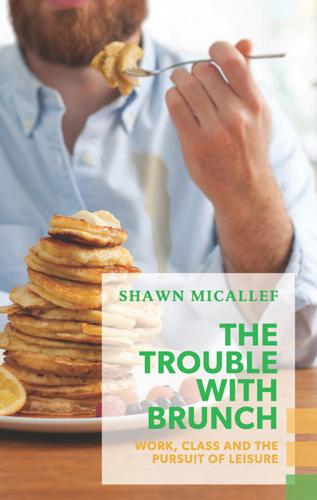
The Trouble With Brunch: Work, Class and the Pursuit of Leisure
by
Shawn Micallef
Published 10 Jun 2014
In some ways, brunch and other forms of conspicuous consumption have blinded us to ever-more-precarious employment conditions. For award-winning writer and urbanist Shawn Micallef, brunch is a way to look more closely at the nature of work itself and a catalyst for solidarity among the so-called creative class. Drawing on theories from Thorstein Veblen to Richard Florida, Micallef traces his own journey from the rust belt to a cosmopolitan city where the evolving middle class he joined was oblivious to its own instability and insularity. The Trouble with Brunch is a provocative analysis of foodie obsession and status anxiety, but it’s also a call to reset our class consciousness.
…
We need to start talking about this to figure out a way to install some kind of order or system – a true hierarchy might be antithetical in a truly egalitarian creative economy – that prevents us from giving away our time and work so easily. The notion of a middle class that incorporated leisure into its identity was first coined as such by Thorstein Veblen, a curious sociologist and economist who put out his most well-known work, The Theory of the Leisure Class, in 1899. Taking nearly a decade of his life to produce, Veblen’s critique of social and economic behaviour describes the evolution of what he called ‘conspicuous leisure’ and ‘conspicuous consumption,’ two behaviours that had permeated modern life as he saw it.
…
They say, This is a real experience, connected and rooted, not concocted. Physicality is important; it provides connections to people who did things and to actual objects that age and alter. It’s a strange kind of ju-jitsu – a rejection of the trappings of middle-class life in favour of a more expensive and cleaner simulation of working-class life. Thorstein Veblen goes into detail about the desirability of a hand-wrought spoon, just as serviceable as one made by the machines of his day, but the effort put into it makes the spoon beautiful and ‘some one-hundred times more valuable’ than a more common spoon. ‘The case of the spoon is typical,’ he writes.
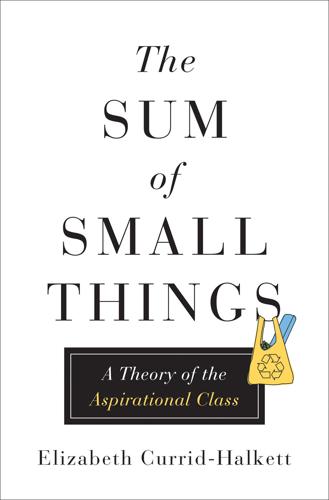
The Sum of Small Things: A Theory of the Aspirational Class
by
Elizabeth Currid-Halkett
Published 14 May 2017
It may not even be more serviceable … One of the chief uses, if not the chief use, of the costlier spoon is ignored; the hand-wrought spoon gratifies our taste, our sense of the beautiful … the material of the hand-wrought spoon is some one hundred times more valuable than the baser metal, without very greatly excelling the latter in intrinsic beauty of grain or color, and without being in any appreciable degree superior in point of mechanical serviceability. —Thorstein Veblen, The Theory of the Leisure Class (1899) In the 1920s, Muriel Bristol attended a summer’s afternoon tea party in Cambridge, UK. A number of professors and their spouses were also in attendance. On this particular occasion, the host poured Bristol a cup of tea and poured in the milk thereafter.
…
Just as our work or family structure cultivates who we are, so does what we buy and the norms of behavior we learn. We must see consumption as appropriated to signal things much deeper than what is simply visible.5 THE THEORY OF THE LEISURE CLASS Perhaps no one captured and articulated the social significance of consumption better than the social critic and economist Thorstein Veblen. Written in the late 1800s, Veblen’s polemic treatise The Theory of the Leisure Class is the defining text that precisely expresses the relationship between material goods and status. At the peak of the Gilded Age, and in the wake of the triumphs of the Industrial Revolution, Veblen’s work was very much a sign of the times he lived in.
…
CHAPTER 2 Conspicuous Consumption in the Twenty-first Century It is from our disposition to admire, and consequently to imitate, the rich and the great, that they are enabled to set, or to lead what is called the fashion. Their dress is the fashionable dress; the language of their conversation, the fashionable style; their air and deportment, the fashionable behaviour. Even their vices and follies are fashionable. —Adam Smith The Theory of Moral Sentiments (1790) In The Theory of the Leisure Class, Thorstein Veblen observed that conspicuous consumption was also practiced among those outside of the rich, or what he called the “impecunious classes.” These poorer strata of society spent on nonessentials—maybe not as much as the leisure class with their silver spoons and games of croquet, but as he pointed out, from hunter and gatherer societies to the present day, most human beings have a desire to fit in and we often rely on social constructs to do so.

The Myth of the Rational Market: A History of Risk, Reward, and Delusion on Wall Street
by
Justin Fox
Published 29 May 2009
To assert that it will continue to repeat implies subscribing to some theory of why.7 Ever since then, most sciences have been swinging back and forth between the poles of deduction and induction. At the turn of the twentieth century, economics in the United States appeared due for a turn in the latter direction, the direction of the institutionalists. The institutionalist of most durable fame was Thorstein Veblen, author of acid critiques of capitalism that are still in print and coiner of such durable terms as “conspicuous consumption” and “technocracy.” Veblen had studied with William Graham Sumner at Yale just as Irving Fisher had, but he seems to have taken different lecture notes. He excoriated neoclassical economics as abstract noodling with no connection to reality.
…
Most of the lasting economic innovations of the early Roosevelt years—from the founding of the Securities and Exchange Commission to the revamping of the Federal Reserve System—were the work of lawyers, bankers, and other practical sorts, not economists. The institutional economists envisioned themselves as technocrats, the business engineers that Thorstein Veblen argued would steer the economy more rationally than profit-driven “absentee owners” could.14 It’s hard to run a technocracy without a technology, though. While united by skepticism of the grand theories of neoclassical economics, the institutionalists had no grand theory of their own to explain economic behavior.
…
Instead they went by the name “Keynesians,” after John Maynard Keynes, the English speculator, political polemicist, art collector, and all-around bon vivant who would become the most famous economist of the twentieth century. What was this Keynesianism? In part, it was a critique of free market verities that surpassed even Thorstein Veblen’s in its stinging mockery. “Professional investment,” Keynes wrote in a famous passage of his 1936 classic, The General Theory of Employment, Interest, and Money, may be likened to those newspaper competitions in which the competitors have to pick out the six prettiest faces from a hundred photographs, the prize being awarded to the competitor whose choice most nearly corresponds to the average preferences of the competitors as a whole; so that each competitor has to pick, not those faces which he himself finds prettiest, but those which he thinks likely to catch the fancy of the other competitors, all of whom are looking at the problem from the same point of view.

Turing's Cathedral
by
George Dyson
Published 6 Mar 2012
Determined to secure a better future in America, the Veblens sent all their children to college, including their four daughters and two subsequently distinguished sons. Andrew Veblen became a professor of mathematics and physics at the University of Iowa, while Thorstein Veblen, born in 1857, became an influential social theorist, best known for coining the phrase “conspicuous consumption” in his 1899 masterpiece The Theory of the Leisure Class. Thorstein Veblen had a Darwinian eye, sharpened by growing up on the edge of the wilderness, for the coevolution of corporations, financial instruments, and machines. Although respected as an economist, he struggled financially for much of his life, and his only significant personal investments, in the California raisin business, failed.
…
Alan Mathison Turing (1912–1954): British logician and cryptologist; author of “On Computable Numbers” (1936). Françoise (née Aron) Ulam (1918–2011): French American editor and journalist; wife of Stanislaw Ulam. Stanislaw Marcin Ulam (1909–1984): Polish American mathematician and protégé of John von Neumann. Oswald Veblen (1880–1960): American mathematician, nephew of Thorstein Veblen, and first professor appointed to the IAS in 1932. Theodore von Kármán (1881–1963): Hungarian American aerodynamicist, founder of Jet Propulsion Laboratory (JPL). John von Neumann (born Neumann János; 1903–1957): Hungarian American mathematician; fourth professor appointed to the IAS, in 1933; founder of the IAS ECP.
…
The Aberdeen of 1918, its makeshift roads a sea of mud, was a precursor to the Los Alamos of 1943. Its mission was to enlist American science and industry against the German war machine, but by the time the Proving Ground was operational, the war in Europe was drawing to a close. According to Thorstein Veblen, the United States had entered the war, belatedly, only to ensure that the transnational interests of the industrialists would be protected against any social upheavals that peace in Europe might unleash. Oswald Veblen, a sharpshooter at heart, had no doubts about how to help, and improving the accuracy of guns raised none of the moral questions that would later be raised by the development of atomic bombs.
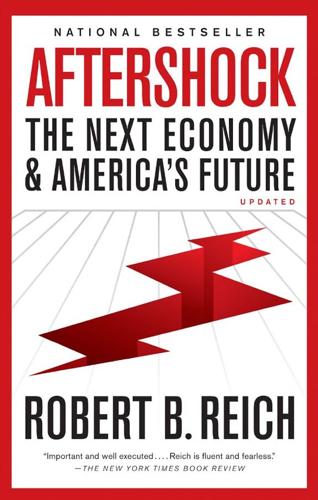
Aftershock: The Next Economy and America's Future
by
Robert B. Reich
Published 21 Sep 2010
Layard, “Human Satisfactions and Public Policy,” Economic Journal 90, no. 360 (December 1980): 737–50. 4 Adam Smith defined necessities: See Adam Smith, An Enquiry into the Nature and Causes of Wealth and Nations (London: Methuen, 1776), Book 5, Chapter 2. 5 In 1899, the economist-sociologist Thorstein Veblen: Thorstein Veblen, The Theory of the Leisure Class (New York: Macmillan, 1899). See Ken McCormick, “Veblen and Duesenberry: The Demonstration Effect Revisited,” Journal of Economic Issues 17, no. 4 (December 1983): 1125–29. 6 More than a half century later: James Duesenberry, Income, Saving and the Theory of Consumer Behavior, Harvard Economic Studies, 1967.
…
In most of eighteenth-century Europe, a linen shirt was not strictly speaking a necessity, but Smith noted that a common laborer would be ashamed to appear in public without one, “the want of which would be supposed to denote that disgraceful degree of poverty, which, it is presumed, nobody can well fall into without extreme bad conduct.” Leather shoes were a “necessity” in England for both men and women, he wrote, but only for men in Scotland, and for neither in France. In 1899, the economist-sociologist Thorstein Veblen noted that people take their cues from those above them and seek to match their living standards with the “conspicuous consumption” of the very rich. More than a half century later, economist James Duesenberry recognized that the demand for many products has more to do with the social standing they give their purchasers than with any intrinsic value.

A Little History of Economics
by
Niall Kishtainy
Published 15 Jan 2017
Prices with real meaning come from the actions of businesspeople as they try to make a profit, not from economists fiddling with equations. Therefore, Mises said, capitalism is the only rational economic system. CHAPTER 17 Flashing Your Cash On a small farm in Wisconsin a boy was raised who became one of the most unconventional economic thinkers America ever produced, the closest it had to a Karl Marx. Unlike Marx, Thorstein Veblen (1857–1929) didn’t attract bands of revolutionaries. But like Marx, he was an outsider, a critical observer of the fast-changing society that he found himself living in, but wasn’t wholly part of. Marx, a German of Jewish descent, observed from Victorian London the progress of the Industrial Revolution.
…
According to Schumpeter, the fruits of modern capitalism – the vast array of goods on offer and the new technologies used to produce them – are created by heroic figures who are modern-day versions of the swashbuckling knights of old. They’re entrepreneurs, men like the railway owner Cornelius Vanderbilt, or Andrew Carnegie, who amassed a huge fortune through expanding the American steel industry. Thorstein Veblen had seen Vanderbilt and his type as throwbacks to ancient societies of violent barbarians, ‘robber barons’ whose aggression made them rich but didn’t benefit society as a whole. But Schumpeter said that it was because they’d channelled their excess energy into industry instead of battle that they’d become society’s wealth creators.
…
(If you study economics at university you’ll spend a lot of time learning how to apply the principles of rationality and choice, rather than learning about how, for example, the American or Japanese economies actually work.) Then there’s the question of how powerful the economic method really is. When we met the economist Thorstein Veblen in Chapter 17 we saw that he rejected economists’ standard theories of rationality and choice. Unconventional economists like him say that economics needs to incorporate richer models of human behaviour that go beyond calculations of costs and benefits. And many economists now believe that shopkeepers managing their stock are in fact far from rational, let alone people cooking dinner at home (see Chapter 36).

Made to Break: Technology and Obsolescence in America
by
Giles Slade
Published 14 Apr 2006
Gilfi lan, and Abbott Payton Usher, developed theories of technological progress that rested heavily on Darwinian thought.3 The advertising cliché “New and improved” dates from the earliest years of the new century and captures the idea that products advance in response to changing market competition, much as species evolve in response to changing habitats. With a frequency that was alarming to old-fashioned inventors like Henry Ford, machines, like species, were becoming suddenly extinct. After Thorstein Veblen published his Theory of the Leisure Class in 1899, this technological extinction became popularly known as “obsolescence,” a word that Veblen particularly liked to use.4 Beginning with General Electric, manufacturers invested in research and development departments whose express mission was to produce “the next best thing,” and in the process—inevitably—hasten product extinction.
…
The other side of this pride and self-presentation equation is shame, or more precisely the anxiety about feeling shamed that creates a state of watchfulness in American consumers for whatever is new. The basic idea in shame-based advertising is that the desire not to lose face can be manipulated to produce conspicuous consumption. This idea is as old as the sumptuary laws that became the basis for the emergent seventeenth-century fashion industry. Thorstein Veblen firs formulated what would become known as conspicuous consumption in 1899. It is important to remember, however, that Veblen’s formula concerned the “vicarious” consumption of the leisure class. In Veblen’s model, aristocratic men created wealth, which their wives consumed and displayed. In a society based on vicarious consumption, the wealth producer is distanced from the shame the consumer (his wife) experiences whenever she appears unfashionable in society.30 But by 1920 Americans were confronted with such an abundance of goods that conspicuous consumption could not remain vicarious.
…
And like the criticisms of the technocrats, MacLeish’s acute criticisms of the industrial system were unaccompanied by specifi recommendations about what to do (though he did commend “the share-the-work movement for rationing the residuum of employment among the employed and the unemployed by the introduction of the fi e-day week”).29 In the fall of 1932 when MacLeish’s Fortune article appeared, the technocracy movement’s short-lived popularity was at its peak. Although its earliest origins were in a group called the Technical Alliance led by Thorstein Veblen’s protégé, Howard Scott,tech- nocracy really began in May of 1932 when an ad hoc group, the Industrial Experimenters Association, met briefl at the invitation of Walter Rautenstrauch, a professor of engineering at Columbia University.30 Rautenstrauch was convinced that the ultimate cause of the Depression was the profi motive—the inability of businessmen to curb their quest for profi in the interest of social harmony.
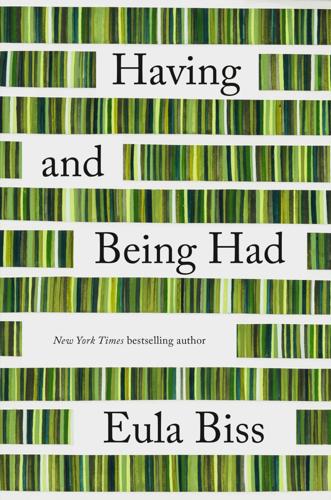
Having and Being Had
by
Eula Biss
Published 15 Jan 2020
To be at leisure, to live a life of study and contemplation, was to enjoy true freedom. But that freedom depended on the work of women and slaves. And, as Aristotle remarked, “There is no leisure for slaves.” When time is money, as it is now, free time is never free. It’s expensive. In The Theory of the Leisure Class, Thorstein Veblen writes that leisure is a form of conspicuous consumption, with time being what is consumed. The upper class is exempt from ordinary employment under capitalism, he observes, just as the aristocracy is exempt from manual labor under feudalism. Leisure is how a class that doesn’t have to work displays its status.
…
On leisure, Kalimtzis writes, “Leisure is not preparation but an end possessed, and in fact the very word scholê, according to some scholars, may be derived from the verb echein which means to have or to possess.” Politics, Aristotle, translated by Benjamin Jowett. Digireads.com Publishing, 2017. The Theory of the Leisure Class, Thorstein Veblen. Oxford University Press, 2007. First published 1899. The Affluent Society, John Kenneth Galbraith. Mariner Books, 1998. First published 1958. THE PROTESTANT ETHIC The Protestant Ethic and the Spirit of Capitalism, Max Weber, translated by Stephen Kalberg. Oxford University Press, 2010.
…
“Children’s Risky Play from an Evolutionary Perspective: The Anti-Phobic Effects of Thrilling Experiences,” Ellen Beate Hansen Sandseter, Leif Edward Ottesen Kennair. Evolutionary Psychology, April 1, 2011. ART “Two Tramps in Mud Time,” Robert Frost. The Complete Poems of Robert Frost. Henry Holt & Co., 1949. WORK The Theory of the Leisure Class, Thorstein Veblen. Oxford University Press, 2007. First published 1899. 1493: Uncovering the New World Columbus Created, Charles C. Mann. Vintage, 2012. BARTLEBY “Bartleby the Scrivener: A Story of Wall-Street,” Herman Melville. The Piazza Tales. Dix & Edwards, 1856. “Preferring Not To: The Paradox of Passive Resistance in Herman Melville’s ‘Bartleby,’” Jane Desmarais.
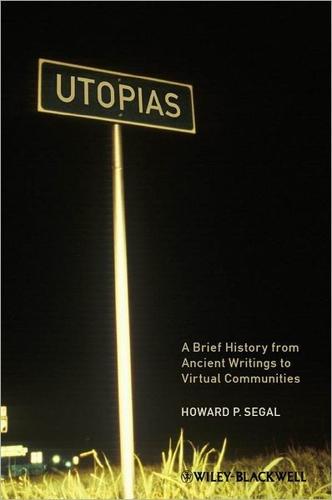
Utopias: A Brief History From Ancient Writings to Virtual Communities
by
Howard P. Segal
Published 20 May 2012
The great expectations thus raised were never met, and the present-day equation of a “technocracy” with a distinctly unutopian society reflects the movement’s dismal legacy. The origins of Technocracy are shrouded in controversy, but most of its future leaders were apparently inspired by their association between 1919 and 1921 with the social critic Thorstein Veblen, then teaching at New York City’s New School for Social Research. Veblen offered a strategy, spelled out in The Engineers and the Price System (1921), for ridding American society of the waste Growing Expectations of Realizing Utopia 97 and extravagance that he and other reformers had long condemned.
…
For elaboration of the discussion about Technocracy in this and the following paragraphs, see my new introduction to the reprint of Harold Loeb, Life in a Technocracy: What It Might Be Like (Syracuse, NY: Syracuse University Press, 1996 [1933]). “Technocracy—Bloom, Blight, or Bunk?” Literary Digest, 114 (December 31, 1932), 5. Thorstein Veblen, The Engineers and the Price System (New York: Viking, 1933), 135. Anna-K. Mayer, “Reluctant Technocrats: Science Promotion in the Neglect-of-Science Debate of 1916–1918,” History of Science, 43 (2005), 139–159. See Frederic Cople Jaher, Doubters and Dissenters: Cataclysmic Thought in America, 1885–1918 (New York: Free Press, 1964).
…
What may be a utopia to many administrators and students is a dystopia to most faculty. The steady loss of faculty autonomy in curriculum development that stems from embracing a student-centered consumer culture is matched by an equally intense desire to please business and industry and to promote that marriage as made in heaven— or a secular utopia. This development recalls Thorstein Veblen’s The Higher Learning in America (1918), the pioneering and, by now, classic critique “of business control in practically every aspect of the modern university.”58 (Veblen, as noted, was the intellectual mentor of the Technocracy movement.) As in Veblen’s day, so here: such pandering to business and industry goes far beyond wishing to cultivate the financial and political support of the private sector amid the declining financial and political assistance offered by most states and national governments in recent decades.

Who Rules the World?
by
Noam Chomsky
But there is little reason to expect that the advice will be heeded, as the Pentagon’s planned trillion-dollar enhancement of nuclear weapons systems proceeds apace, while lesser powers take their own steps towards Armageddon.5 The foregoing remarks seem to me to sketch a fair approximation to the cast of primary characters. The chapters that follow seek to explore the question of who rules the world, how they proceed in their efforts, and where these lead—and how the “underlying populations,” to borrow Thorstein Veblen’s useful phrase, may hope to overcome the power of business and nationalist doctrine and become, in his words, “alive and fit to live.” There is not much time. 1 The Responsibility of Intellectuals, Redux Before thinking about the responsibility of intellectuals, it is worth clarifying to whom we are referring.
…
Notable figures such as Bertrand Russell, Eugene Debs, Rosa Luxemburg, and Karl Liebknecht were, like Zola, sentenced to prison. Debs was punished with particular severity—a ten-year prison term for raising questions about President Wilson’s “war for democracy and human rights.” Wilson refused him amnesty after the war ended, though President Harding finally relented. Some dissidents, such as Thorstein Veblen, were chastised but treated less harshly; Veblen was fired from his position in the Food Administration after preparing a report showing that the shortage of farm labor could be overcome by ending Wilson’s brutal persecution of unions, specifically the Industrial Workers of the World. Randolph Bourne was dropped by the progressive journals after criticizing the “league of benevolently imperialistic nations” and their exalted endeavors.6 The pattern of praise and punishment is a familiar one throughout history: those who line up in the service of the state are typically praised by the general intellectual community, and those who refuse to line up in service of the state are punished.
…
Huge efforts have been devoted since to inculcating the New Spirit of the Age. Major industries are devoted to the task: public relations, advertising, and marketing generally, all of which add up to a very large component of the gross domestic product. They are dedicated to what the great political economist Thorstein Veblen called “fabricating wants.”14 In the words of business leaders themselves, the task is to direct people to “the superficial things” of life, like “fashionable consumption.” That way people can be atomized, separated from one another, seeking personal gain alone, diverted from dangerous efforts to think for themselves and challenge authority.

The Finance Curse: How Global Finance Is Making Us All Poorer
by
Nicholas Shaxson
Published 10 Oct 2018
This was based on an earlier document, John Christensen and Nicholas Shaxson, ‘The Finance Curse: how oversized financial centres attack democracy and corrupt economies’, Tax Justice Network, May 2013. 1 Sabotage 1. Nils Gilman, ‘Thorstein Veblen’s neglected feminism’, Journal of Economic Issues, September 1999. 2. Cited in Sidney Plotkin and Rick Tilman, The Political ideas of Thorstein Veblen, p.16. The friend was a professor called Jacob Warshaw. 3. As Matthew Watson of Warwick University put it, Leisure Class was in a sense merely a scene-setter for Business Enterprise: ‘It might very well be described as one of the subject field’s most important forgotten books; it raises barely a stir in the collective consciousness of contemporary economists.’
…
And this book contains a tremendous piece of good news: that prize is well within our grasp. 1 Sabotage Some economists behave like aliens who sit in spaceships high above the earth, watching us through powerful telescopes. They record all the scurrying back and forth, then build theories and mathematical models about what we’re up to, without accounting for folly, cruelty, sex, friendship, credulity and the general rough and tumble of our crazy lives. The renegade economist and thinker Thorstein Veblen was an extraterrestrial of a different kind. He too perched himself outside the normal range of human experience, but this enabled him to sit far enough back from humanity to be able to observe our foibles clearly, so as to use them as a starting point for properly understanding the world of money and business.
…
As Matthew Watson of Warwick University put it, Leisure Class was in a sense merely a scene-setter for Business Enterprise: ‘It might very well be described as one of the subject field’s most important forgotten books; it raises barely a stir in the collective consciousness of contemporary economists.’ Watson sent me these comments via email, 2016. See also Matthew Watson, ‘Thorstein Veblen, The Thinker Who Saw Through the Competitiveness Agenda’, foolsgold.international, 29 February 2016, to be posted on financecurse.org. 4. William Heath Robinson was a cartoonist famous for drawing ridiculously complicated machines for achieving simple goals. 5. As Watson put it, ‘A repeated theme throughout pretty much every chapter of the 900-page Wealth of Nations is that productive labour is good and should be encouraged, whereas unproductive labour is bad and should be discouraged.
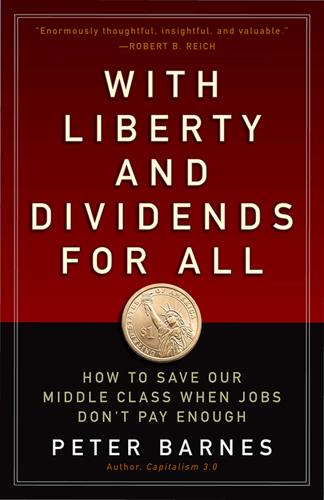
With Liberty and Dividends for All: How to Save Our Middle Class When Jobs Don't Pay Enough
by
Peter Barnes
Published 31 Jul 2014
Then, over the years, you paid down the mortgage to, say, $200,000. When you sold the house for $400,000, you paid off the mortgage and kept $200,000. So, for an initial investment of $30,000, you walked away with a net gain of $170,000. That’s a 467 percent return for buying and selling a piece of property. A century ago, the American economist Thorstein Veblen called it “something for nothing.”1 A similar sort of leverage kicks in when founders of a private company go public. This might be called equity leverage (as opposed to debt leverage), and its effect can be even more spectacular. Equity leverage works by incorporating anticipated future earnings into present asset prices, thereby enabling stock sellers to get a lump sum now for a potential stream of future profits that may or may not materialize.
…
FDR quote on payroll taxes: History site of the Social Security Administration, http://www.ssa.gov/history/Gulick.html. 9. Report of the Committee on Economic Security, Social Security Administration, Washington, DC, 1934, http://www.ssa.gov/history/reports/ces5.html. Chapter 4: Extracted Rent 1. Thorstein Veblen, Absentee Ownership (New York: B. W. Huebsch, 1923). Citation is from Beacon Paperback edition (Boston, 1967), 13. 2. “The Richest People in America, 2013,”Forbes, http://www.forbes.com/forbes-400/list/. 3. Janet Lowe, Warren Buffett Speaks: Wit and Wisdom from the World’s Greatest Investor (New York: John Wiley & Sons, 1997), 164. 4.

The Wisdom of Frugality: Why Less Is More - More or Less
by
Emrys Westacott
Published 14 Apr 2016
In some cases, it just seems fantastically self-indulgent, as when Marie Antoinette had an entire village built purely in order for her to play at being a milkmaid, or when Michael Jackson had a private amusement park constructed on his estate. In others the extravagance seems to be motivated by a desire to flaunt one’s wealth: that, presumably, is the point of wearing a Rolex watch with diamond inlays and other such items known as “Veblen goods” (named after Thorstein Veblen, the economist who introduced the term “conspicuous consumption”), the main purpose of which is to demonstrate superior status. Sometimes the spending itself can be part of the display, as when some billionaires outbid all comers to secure an artwork they know little about or a star player for the soccer team they own.
…
But can it be argued that when people of ample means are extravagant, they in fact do cause harm to others? Two arguments to support this idea suggest themselves. One way extravagance may do harm is through its detrimental knock-on effect. The spectacle of some people being extravagant is one of the most important factors encouraging extravagance in others, a process famously described by Thorstein Veblen in The Theory of the Leisure Class.7 People spend money to raise their social status: this is the ulterior motivation behind all sorts of spending, whether on things (houses, cars, clothes, technology, gadgets), experiences (vacations, sports), or events (weddings, parties). And as Juliet Schor argues in The Overspent American, keeping up with the Joneses who live down the street has gradually given way to trying to keep up with the usually much richer people seen on television, in commercials, and in other media.
…
“Stop Saving Now!” Newsweek, March 13, 2009. 4. Scott Shane, “Start Up Failure Rates: The Definitive Numbers,” Small Business Trends, December 17, 2012. 5. See Phil Izzo, “Congratulations to the Class of 2014, Most Indebted Ever,” Wall Street Journal, May 16, 2014. 6. Proverbs 19:10. 7. Thorstein Veblen, The Theory of the Leisure Class: An Economic Study of Institutions (New York: Dover, 1994), chap. 4. 8. Schor, The Overspent American. 9. Peter Singer, “The Singer Solution to World Poverty,” New York Times, September 5, 1999. 10. According to the US Bureau of Labor Statistics, Report 1042, April 2013, consumer units whose income placed them in the lowest 20 percent spent on average $3,547 in 2011 on food, which averages out to $296 per month. http://www.bls.gov/cex/csxann11.pdf. 11.
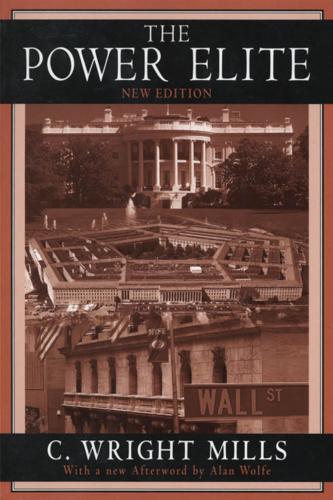
The Power Elite
by
C. Wright Mills
and
Alan Wolfe
Published 1 Jan 1956
If the prestige of elite circles contains a large element of moral reputation, they can keep it even if they lose considerable power; if they have prestige with but little reputation, their prestige can be destroyed by even a temporary and relative decline of power. Perhaps that is what has happened to the local societies and metropolitan 400’s of the United States. In his theory of American prestige, Thorstein Veblen, being more interested in psychological gratification, tended to overlook the social function of much of what he described. But prestige is not merely social nonsense that gratifies the individual ego: it serves, first of all, a unifying function. Many of the social phenomena with which Veblen had so much fun—in fact most ‘status behavior’—serve to mediate between the elite of various hierarchies and regions.
…
Holland, ‘Social Register,’ American Mercury, June 1932. On the volumes of The Social Register published up to 1925, see Wecter, op. cit. p. 233. 14. Wecter, op. cit. p. 234. 15. As of 1940. Cf. Baltzell Jr., op. cit. Table 2. 16. See ibid. Table 14, pp. 89 ff. 17. Wecter, op. cit. pp. 235, 234. 18. Thorstein Veblen, The Theory of the Leisure Class, 1899 (New York: New American Library, Mentor Edition, 1953), p. 162. Cf. also my Introduction to that edition for a fuller criticism of Veblen’s theory. 19. Time, 26 October 1953. 20. See ‘Boston,’ Fortune, February 1933, p. 27. 21. Business Week, 5 June 1954, pp. 92–3. 22.
…
See also ‘Corporation Life Gets a Literature,’ Business Week, 5 June 1954, p. 79. 32. Gustave Le Bon, The Crowd, 1896 (London: Ernest Benn, 1952), pp. 129, 130, 131. 33. In this section, I have drawn upon Harold Nicolson’s The Meaning of Prestige (Cambridge, England: Cambridge University Press, 1937). 34. Gustave Le Bon, op. cit. p. 140. 35. Cf. Thorstein Veblen, The Theory of the Leisure Class, 1899 (New York: New American Library, Mentor Edition, 1953). 36. Cf. John Adams, Discourses on Davila (Boston: Russell and Cutler, 1805), especially pp. 26–7, 30–34, 48–9. The subsequent quotations are from pp. 40, 28–9, and 18. 37. But see Rene Sedillot, ‘Now Medals for Civilians, Too,’ The New York Times Magazine, 24 April 1955, pp. 22 ff., for recent attempts to have honor more officially recognized. 38.

Because We Say So
by
Noam Chomsky
In one of his many examples throughtout the book, he points to the efforts of the financial elite and their marketing machines to atomize people so they will be complicit in the destruction of the commons. Drawing on his expansive understanding of history, Chomsky cites the political economist Thorstein Veblen’s emphasis on “fabricating wants” in order to not only manufacture ignorance but also define consumption as the major force in shaping their needs. For Chomsky, historical memory and individual and social agency are under attack, and this is as much a pedagogical as a political issue. One of Chomsky’s most insistent themes focuses on how state power functions in various forms as a mode of terrorism inflicting violence, misery and hardship, often as a function of class warfare and American global imperialism, and how people are often complicit with such acts of barbarism.
…
But the doctrine has force if we accept its unstated premise: that humans are blindly driven by what American workers, at the dawn of the industrial revolution, called “the New Spirit of the Age, Gain Wealth forgetting all but Self”—a doctrine they bitterly condemned as demeaning and destructive, an assault on the very nature of free people. Huge efforts have been devoted since to inculcating the New Spirit of the Age. Major industries are dedicated to what political economist Thorstein Veblen called “fabricating wants”—directing people to “the superficial things” of life, like “fashionable consumption,” in the words of Columbia University marketing professor Paul Nystrom. That way people can be atomized, seeking personal gain alone and diverted from dangerous efforts to think for themselves, act in concert and challenge authority.
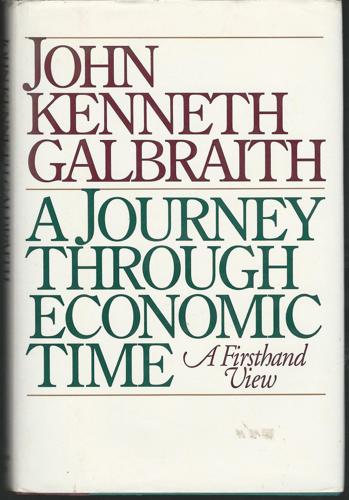
World Economy Since the Wars: A Personal View
by
John Kenneth Galbraith
Published 14 May 1994
In the last seventy-five years, he has been mentioned only as a curiosity—an early American economist who had the fortitude to disagree with Ricardo on rent and with Adam Smith on the virtues of free trade. II The two other distinctively American figures had more enduring influence. These were Henry George and Thorstein Veblen. But so far from manifesting the exuberant attitudes of the frontier, both were prophets of a gloom that was, in some respects, more profound than that of Ricardo. Henry George (1839–1897) was, like Marx, the founder of a faith, and the faithful still assemble to do honor to their prophet. Like Adam Smith, he made clear his view of the social prospect in the title of his remarkable book: Progress and Poverty.
…
III In the tradition of American popular radicalism, there were other influential figures besides Henry George—Henry Demarest Lloyd and Edward Bellamy come especially to mind as important figures of the latter decades of the last century. Their conclusions, however, were broadly similar: great inequality and great poverty were inevitable in the absence of great reform. And unlike Henry George, their words mostly died with them. There remains, however, the man whom many regard as the uniquely American economist, Thorstein Veblen (1857–1929).5 For the eager search for reassurance that followed the Ricardian gloom, Veblen substituted a grandiloquent iconoclasm. Ricardo had forecast a disagreeable fate for most of mankind. His followers hoped against hope that it might not be. Veblen took a position above the debate. The fate of man was something with which, at least for purposes of posture, he chose not to identify himself.
…
However, Patten, a singularly interesting and original figure, has joined Carey in the neglect reserved for American heretics. Commons and Mitchell, as a matter of principle or method, largely avoided any overall theoretical formulation of man's economic prospect and hence contributed little to the attitudes with which we are here concerned. [back] *** 6 Thorstein Veblen, The Theory of Business Enterprise, 1932 ed. (New York: Scribner), P. 234. [back] *** 7 The conclusions sketched above are principally developed in The Theory of Business Enterprise. The quote is on p. 183. [back] *** 8 Originally published in 1899. There is a later edition, to which I contributed an introduction, published in 1973 (Boston: Houghton Mifflin).

Unsustainable Inequalities: Social Justice and the Environment
by
Lucas Chancel
Published 15 Jan 2020
Considering the United States today, the Israeli economist Ori Heffetz has shown that the greater one’s income, the larger the share of disposable income that is devoted to buying socially visible goods.39 The workings of this mechanism were penetratingly analyzed more than a century ago by the American economic sociologist Thorstein Veblen.40 In The Theory of the Leisure Class, Veblen argued that each social class seeks to imitate the consumption habits of the one above it in order to distance itself from the one beneath it. This idea of the invidious nature of consumption had been anticipated by Adam Smith’s notion of a human need for recognition; later it was to be echoed by the English economist Fred Hirsch’s concept of positional competition, and by the French sociologist and philosopher Jean Baudrillard’s concept of differentiation.41 Marketing specialists are very familiar with this effect.
…
Rajam, Fault Lines: How Hidden Fractures Still Threaten the World Economy, rev. ed. (Princeton, NJ: Princeton University Press, 2011). 39. Ori Heffetz, “A Test of Conspicuous Consumption: Visibility and Income Elasticities,” Review of Economics and Statistics 93, no. 4 (2010): 1101–1117. 40. Thorstein Veblen, The Theory of the Leisure Class (1899; repr., New York: Penguin, 1994). 41. Adam Smith, The Theory of Moral Sentiments (1759; repr., London: Penguin, 2009); Fred Hirsch, The Social Limits to Growth, rev. ed. (London: Routledge, 1995); Jean Baudrillard, The Consumer Society: Myths and Structures (1970; repr., London: Sage, 1998). 42.
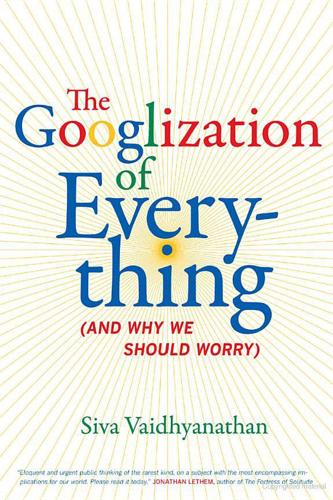
The Googlization of Everything:
by
Siva Vaidhyanathan
Published 1 Jan 2010
It has always been the sort of place where those devoted to solving some of the biggest challenges in logic, mathematics, and linguistics can find a supportive yet challenging environment.41 It’s the paradigm of the sort of practice that has emerged quickly over the past twenty years and that now dominates the scientific agenda in many fields: entrepreneurial science—the intersection of academic “pure” science and industrial technoscience.42 This technocratic mode of organization is anything but new. In The Engineers and the Price System, a book published in 1921 that fell into 68 G O OG LE’S WAYS AND MEA NS immediate obscurity, the iconoclastic economist Thorstein Veblen identified a new class of what we now call knowledge workers. In the late years of the American Industrial Revolution, Veblen saw that the increase in efficiency of the production and distribution of goods was creating tremendous wealth for the class that owned the means of production yet who were unable to do the mathematics necessary to understand the systems that enriched them.
…
We must build systems that can serve us better, regardless of which companies and technologies thrive in the next decade. Most important, we should learn to beware of false idols and empty promises. The future of knowledge—and thus the future of the species—depends on getting this right. ACKNOWLEDGMENTS The words of Thorstein Veblen sounded in my head as I researched and composed this book. Believe me: that was daunting and weird. I kept saying to myself as I wrote, “What would Veblen think of this?” The summer before I proposed doing a book on Google, I tried to read everything Veblen ever published. In a strange way, this whole project emerged from that experiment.
…
John Paczkowski, “Google and the Evolution of Search, I: Human Evaluators,” Digital Daily, June 3, 2009, http://digitaldaily.allthingsd.com. 41. Randall E. Stross, Planet Google: One Company’s Audacious Plan to Organize Everything We Know (New York: Free Press, 2008). 42. Steven Shapin, The Scientific Life: A Moral History of a Late Modern Vocation (Chicago: University of Chicago Press, 2008). 43. Thorstein Veblen, The Engineers and the Price System (New Brunswick, NJ: Transaction Books, 1983). 44. Walter Kirn, “Life, Liberty and the Pursuit of Aptitude,” New York Times Magazine, July 5, 2009. 232 NOTES TO PAGES 69–77 45. Kevin J. Delaney, “Google Adjusts Hiring Process as Needs Grow,” Wall Street Journal, October 23, 2006. 46.
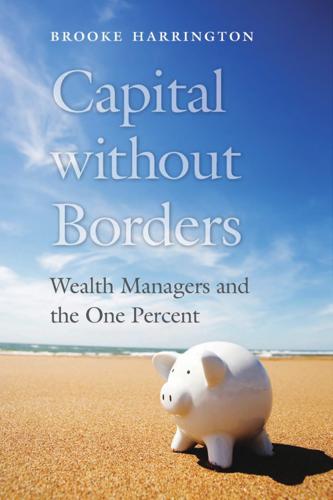
Capital Without Borders
by
Brooke Harrington
Published 11 Sep 2016
In the defense of this wealth, knightly service through the skillful deployment of arms gave way to legal maneuvering, which became increasingly complex and innovative as industrial capital supplanted land as the primary form taken by family fortunes. By the end of the nineteenth century, the economist Thorstein Veblen was moved to observe the swift transition that had taken place during his lifetime, not only in the foundations of wealth but also in the means of keeping and growing it: “The economic basis of the leisure class, then as later, was the possession of wealth; but the methods of accumulating wealth, and the gifts required for holding it, have changed.… Simple aggression and unrestrained violence in great measure gave place to shrewd practice and chicanery, as the best approved method of accumulating wealth.”4 These changes were driven in part by the growing significance of wealth managers during the Gilded Age, and undoubtedly contributed to their advancement as a profession.
…
On “irreplaceable” actors, see Palan, Murphy, and Chavagneux, Tax Havens, 12. 28. Karen Ho, Liquidated: An Ethnography of Wall Street (Durham, NC: Duke University Press, 2009). See also Mitchel Abolafia, Making Markets: Opportunism and Restraint on Wall Street (Cambridge, MA: Harvard University Press, 1996). 29. Thorstein Veblen, The Theory of the Leisure Class (New York: Penguin, 1994 [1899]). 30. Jonathan Dunlop, “Healthy Competition,” STEP Journal, April 2008, 31. 31. Cap-Gemini, World Wealth Report. 32. William Robinson, “Social Theory and Globalization: The Rise of a Transnational State,” Theory and Society 30 (2001): 165. 33.
…
Jürgen Habermas, The Theory of Communicative Action, vol. 2, Lifeworld and System: A Critique of Functionalist Reason (Boston: Beacon Press, 1985). 2. Katherine Rehl, “Help Your Clients Preserve Values, Tell Life Stories and Share the Voice of Their Hearts through Ethical Wills,” Journal of Practical Estate Planning 5 (2003): 17. 3. Norman Peagam, “Nine Centres Worth Finding on the Map,” Euromoney, May 1989, 4–10. 4. Thorstein Veblen, The Theory of the Leisure Class (Oxford, UK: Oxford University Press, 2009 [1899]), 155. 5. Zygmunt Bauman, Community: Seeking Security in an Insecure World (Cambridge, UK: Polity, 2000). 6. Greta Krippner, “The Financialization of the American Economy,” Socio-Economic Review 3 (2005): 173–208.

The New Class War: Saving Democracy From the Metropolitan Elite
by
Michael Lind
Published 20 Feb 2020
In his memoir A Life in Our Times (1981), Galbraith wrote: “James Burnham, partly because he was a stalwart right-winger well out of the political mainstream and partly because he was not a certified academician, never got full credit for his contribution. In early editions of The New Industrial State I was among those in default.”6 While Burnham and Galbraith included engineers and scientists in the new elite, they were not describing a technocracy like the utopian “soviet of technicians” hoped for by the maverick economist Thorstein Veblen.7 The most important managers are private and public bureaucrats who run large national and global corporations, government agencies, and nonprofit organizations. They exercise disproportionate influence in politics and society by virtue of their institutional positions in large, powerful bureaucracies.
…
James Burnham, The Managerial Revolution: What Is Happening in the World (Westport, CT: Greenwood Press, 1972 [1941]), p. 72. 5. George Orwell, “Second Thoughts on James Burnham,” Polemic, May 1946. 6. John Kenneth Galbraith, A Life in Our Times (Boston: Houghton Mifflin Harcourt, 1981), p. 362. 7. Thorstein Veblen, The Engineers and the Price System (New York: B. W. Huebsch, 1921), chapter vi, “A Memorandum on a Practicable Soviet of Technicians,” pp. 138–69. 8. Mark Bovens and Anchrit Wille, Diploma Democracy: The Rise of Political Meritocracy (New York: Oxford University Press, 2017), p. 5. 9.

Consumed: How Markets Corrupt Children, Infantilize Adults, and Swallow Citizens Whole
by
Benjamin R. Barber
Published 1 Jan 2007
Jenn Shreve adds: “[T]raditional teaching methods simply can’t compete with the appeal of a commercial world of games that makes children heroes or puts the fate of Harry Potter in their hands.”36 In high-school classrooms across America, this commercialization is supported by outfits like Channel One Network that offer in-school soft “news” television complete with hard advertisements that sell at rates which rival such prime-time specials as the American football Super Bowl.37 In higher education, colleges and universities that once acted as a counterpoint to commercial culture today have gone prostrate before corporate sponsors of research that academic administrators have neither the will nor the independent funding to oppose. Higher education has always been prone to the forces of vocationalism (Thorstein Veblen wrote an angry critique in 1918). Its decline into the multiversity “knowledge factory” Clark Kerr wrote about in the 1960s only marked the beginning of its modern corporatization—about which Stanley Aronowitz on the left and Allan Bloom on the right have in their own ways vociferously complained, and about which I will comment below in my discussion of privatization.38 Today’s new higher-ed corruption comes from treating students themselves not as autonomous learners but as free consumers and not yet committed brand-shoppers—clients of educational services.
…
At Woolworth’s it would always be for a predictable nickel or dime. Ford made a better car. Western Union offered more reliable communication. Baldwin made better pianos, but Chickering or Brewster made them cheaper. Sears Roebuck had more goods at better prices than Montgomery Ward (or vice versa). A critical change was underway. Thorstein Veblen saw in these developments “one of the most significant mutations in man’s history” in which industrial capital was being superceded by business capital where investment for gain overtook “commitment to industry and workmanship.”20 The Protestant ethos was morphing before the astonished eyes of newly “empowered” consumers.
…
Channel One Network, originally founded by Chris Whittle (bought by 3M Corporation and owned today [2006] by Primedia), leases telecommunications equipment to more than 12,000 high schools throughout the United States. In return, it gains the right to show its soft news programming (nine minutes of teen-slanted soft “educational” news with three minutes of hard advertising) with students obliged to watch during regular class time hours. See www.channelone.com. 38. Thorstein Veblen, The Higher Learning in America (1918; reprint, with a new introduction by Ivar Berg, New Brunswick, N.J.: Transaction Books, 1993); Clark Kerr, The Uses of the University (Cambridge, Mass.: Harvard University Press, 1963); Allan Bloom, The Closing of the American Mind: How Higher Education Has Failed Democracy and Impoverished the Souls of Today’s Students (New York: Simon & Schuster, 1987); Stanley Aronowitz, The Knowledge Factory: Dismantling the Corporate University and Creating True Higher Learning (Boston: Beacon Press, 2000).
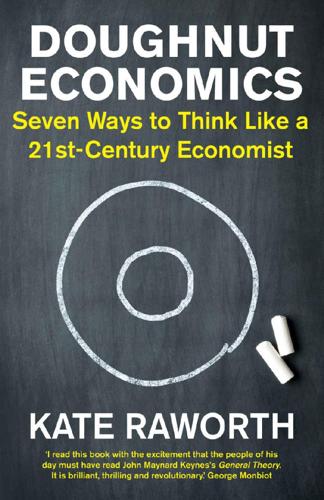
Doughnut Economics: Seven Ways to Think Like a 21st-Century Economist
by
Kate Raworth
Published 22 Mar 2017
That is why the market’s power must be wisely embedded within public regulations, and within the wider economy, in order to define and delimit its terrain. It is also why, whenever I hear someone praising the ‘free market’, I beg them to take me there, because I’ve never seen it at work in any country that I have visited. Institutional economists – from Thorstein Veblen to Karl Polanyi – have long pointed out that markets (and hence their prices) are strongly shaped by a society’s context of laws, institutions, regulations, policies and culture. As Ha-Joon Chang writes, ‘A market looks free only because we so unconditionally accept its underlying restrictions that we fail to see them.’36 From passports to medicines and AK-47s, many things cannot be legally bought or sold without official licence.
…
From isolated to interdependent Depicting rational economic man as an isolated individual – unaffected by the choices of others – proved highly convenient for modelling the economy, but it was long questioned even from within the discipline. At the end of the nineteenth century, the sociologist and economist Thorstein Veblen berated economic theory for depicting man as a ‘self-contained globule of desire’, while the French polymath Henri Poincaré pointed out that it overlooked ‘people’s tendency to act like sheep’.31 He was right: we are not so different from herds as we might like to imagine. We follow social norms, typically preferring to do what we expect others will do and, especially if filled with fear or doubt, we tend to go with the crowd.
…
Jevons himself had a hunch that economic analysis should be dynamic but, lacking the mathematics to do it, he settled for comparative statics, which compares snapshots of two points in time: it was an unfortunate compromise because it led him away from, rather than towards, the insight he ultimately sought.13 In the 1860s, Karl Marx described how the relative income shares of workers and capitalists would continually rise and fall, due to self-perpetuating cycles of output and employment.14 By the end of the nineteenth century, Thorstein Veblen was criticising economics for being ‘helplessly behind the times in not being evolutionary’ and therefore unable to explain change or development,15 while Alfred Marshall argued against mechanical metaphors and, instead, for seeing economics as ‘a branch of biology, broadly interpreted’.16 Twentieth-century attempts to recognise the economy’s inherent dynamism were likewise made by deeply opposing schools of thought but even they couldn’t dislodge equilibrium thinking.
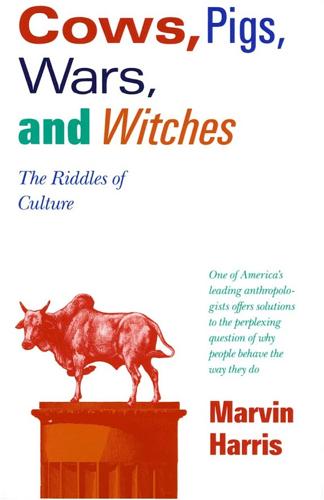
Cows, Pigs, Wars, and Witches: The Riddles of Culture
by
Marvin Harris
Published 1 Dec 1974
Many Americans seem to spend their entire lives trying to climb further up the social pyramid simply in order to impress each other. We seem to be more interested in working in order to get people to admire us for our wealth than in the actual wealth itself, which often enough consists of chromium baubles and burdensome or useless objects. It is amazing how much effort people are willing to spend to obtain what Thorstein Veblen described as the vicarious thrill of being mistaken for members of a class that doesn’t have to work. Veblen’s mordant phrases “conspicuous consumption” and “conspicuous waste” aptly convey a sense of the peculiarly intense desire for “keeping up with the Joneses” that lies behind the ceaseless cosmetic alterations in the automotive, appliance, and clothing industries.
…
. • Betty J. Meggers, Amazonia: Man and Culture in a Counterfeit Paradise. Chicago: Aldine (1971). • Jane Boss and Eric Ross, unpublished papers and personal communications. • Some of the ideas in this chapter were first published in my column in Natural History magazine in May 1972. POTLATCH Thorstein Veblen, The Theory of the Leisure Class. New York: Modern Library (1934). • Franz Boas, “The Social Organization of the Kwakiutl.” American Anthropologist 22 (1920), pp. 111–126. • Ruth Benedict, Patterns of Culture. New York: Mentor (1946). • Douglas Oliver. A Solomon Islands Society. Cambridge: Harvard University Press (1955). • Ian Hogbin, A Guadalcanal Society: The Kaoka Speakers.

Shadow Work: The Unpaid, Unseen Jobs That Fill Your Day
by
Craig Lambert
Published 30 Apr 2015
“Clinton seems to always be in a hurry,” The Boston Globe reported, noting that “she requested ‘prestaged’ group photos so she wouldn’t have to wait ‘for these folks to get their act together.’ The former first lady ‘doesn’t like to stand around waiting for people,’ UCLA was told.” Then there is the social prestige of conspicuous consumption, identified by sociologist Thorstein Veblen in his 1899 masterpiece The Theory of the Leisure Class. The flaunting of wealth and leisure that he defined as conspicuous consumption includes the status symbol of servants, as the wealthy have always known. The DNY lifestyle embraces an ideal that dates to the pharaohs. In his 1970 book The Harried Leisure Class, Swedish economist Staffan Burenstam Linder explains how domestic help can facilitate increased consumption: “The average person can afford no more personal services than he could in the Stone Age.
…
In 2014, Elizabeth Kolbert published a thoughtful essay in The New Yorker that reflected on Keynes’ forecasts in a review of Overwhelmed: Work, Love, and Play When No One Has the Time by Brigid Schulte, a book, Kolbert wrote, that “explores why it is that twenty-first-century Americans feel so swamped.” Schulte advances several theories to explain the disappearance of leisure. One is that leisure has lost its cachet. In The Theory of the Leisure Class (1899), sociologist Thorstein Veblen argued that conspicuous leisure, like conspicuous consumption, allowed the privileged to establish, confirm, and announce their elite status. Just as lawns were originally a status symbol proving that a landowner was prosperous enough to devote acreage to merely scenic plantings, conspicuous leisure advertised the fact that the aristocrat could expend hours, even days and weeks, on nonproductive activities like fox hunting.
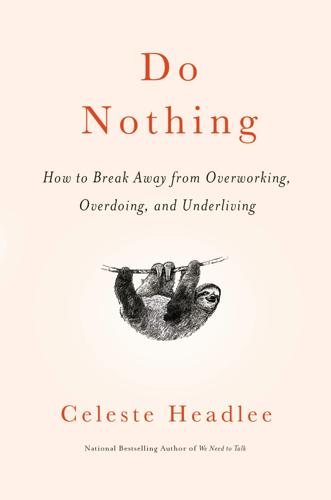
Do Nothing: How to Break Away From Overworking, Overdoing, and Underliving
by
Celeste Headlee
Published 10 Mar 2020
This is not just anecdotal evidence collected from one woman on one day riding one train. Complaining about how little time we have has become one of the most common activities of the late 1990s and early 2000s. Researchers noted the change years ago and began investigating the phenomenon of busyness as status symbol. In 1899, the economist and sociologist Thorstein Veblen published his hugely influential book The Theory of the Leisure Class. In it, he remarked that one of the most powerful indicators of personal success was “conspicuous abstention from labor.” Veblen might be very surprised to see that over the ensuing one hundred years, idleness came to mean not success but poverty.
…
“The biggest gift that the United States could get”: Larry Light, “Why Holiday Shopping Is So Important for the U.S. Economy,” CBS News, November 28, 2016. “The answer to America’s economic problems”: Roger Simmermaker, “Why Buying American Can Save the U.S. Economy,” New York Times, September 16, 2011. “conspicuous abstention from labor”: Thorstein Veblen, The Theory of the Leisure Class: An Economic Study of Institutions (1899; repr., Oxford: Oxford University Press, 2007), ch. 3, “Conspicuous Leisure,” p. 30. someone wearing a Bluetooth headset: Silvia Bellezza, Neeru Paharia, and Anat Keinan, “Conspicuous Consumption of Time: When Busyness and Lack of Leisure Time Become a Status Symbol,” Journal of Consumer Research, June 2017.
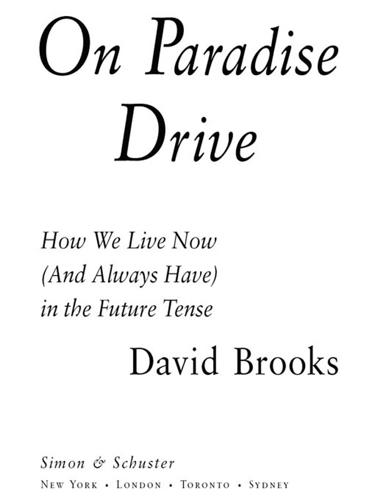
On Paradise Drive: How We Live Now (And Always Have) in the Future Tense
by
David Brooks
Published 2 Jun 2004
Finally, there are instruction articles reminding you that every month brings new and better watches, new challenges for the watch aspirant, new trends to master and excellences to achieve, for why on earth would you want a grade-5 titanium case that is only 90 percent titanium, when you could have a grade-1 case (99 percent titanium) and live confident in the knowledge that if your arm is ever run over by a Boeing 747, your timepiece at least would emerge unscathed. Sacramental Longing Many people have commented on the luxification of American life. It’s not enough to have a twenty-two-foot powerboat; a forty-six-foot inboard cruiser with sleeping cabins and bathrooms is better. The explanation for the trend is the one Thorstein Veblen sketched out in The Theory of the Leisure Class: People want to show off. But consider a boat nut, a person who subscribes to boating magazines, cares about boats, and gets a glow of self-validation from the knowledge that he has achieved boating excellence. Of course, such a person is going to spend his decades realizing his ever higher boating capacities.
…
We are oriented toward the ideal the way a moth is oriented toward light. Anticipatory Hedonism If you study people as they shop, you quickly perceive that the economists’ model of human behavior—in which rational actors calculate costs and benefits—doesn’t explain the crucial choices. (Why do some people fall in love with Jaguars but not Corvettes?) Nor does Thorstein Veblen’s model, in which consumers are involved in a status race to keep up with the Joneses. (Do you really think that’s how you select your purchases? And if you don’t, what makes you think everyone else is more shallow and status-crazed than you are? Furthermore, in a decentralizing world, which Joneses are you supposed to keep up with, anyway?)

Competition Overdose: How Free Market Mythology Transformed Us From Citizen Kings to Market Servants
by
Maurice E. Stucke
and
Ariel Ezrachi
Published 14 May 2020
Why do they invariably gravitate to the same set of selective colleges even though they, their parents, and their high school college counselors decry the application process? The rankings competition among colleges is supposed to benefit students, not hurt them. When it doesn’t, one would expect the intended beneficiaries to simply walk away. One possible explanation is status. Status competition, the economist Thorstein Veblen observed in 1899, has long preoccupied the leisure class. Wherever prep school families congregate, one generally sees large dogs, Nantucket Reds, and European cars. Though bumper stickers are considered lowbrow in these settings and are therefore rare among such families, another kind of signifier is quite common: banners in the rear windows of their vehicles that proclaim their offspring’s progression through elite educational institutions beginning with prep school through to college and graduate school.
…
But if that were the case, personal savings, investments, and frugality would be a lot higher and consumption much lower than they currently are around the world. Instead, what counts is evidence of our wealth relative to our peers. To win this game, we must not only outearn our peers, but outspend them as well through conspicuous leisure and consumption. As the economist Thorstein Veblen observed in his classic book The Theory of the Leisure Class, “wealth or power must be put in evidence, for esteem is awarded only on evidence.”61 In recent years, social networks have upped the stakes in our status competition. We no longer try to keep up with the Joneses next door. Thanks to Facebook, Instagram, and other ubiquitous forms of social media, we’re now engaged in a competition with smiling acquaintances around the globe who seem to make more money, work at dream jobs, own fancier cars, go on better vacations, live in nicer homes, and have kids who seem to attend more prestigious schools than our own.
…
Den Nieuwenboer and Muel Kaptein, “Spiraling Down into Corruption: A Dynamic Analysis of the Social Identity Processes That Cause Corruption in Organizations to Grow,” Journal of Business Ethics 83, no. 2 (December 2008): 133, 138–39, https://doi.org/10.1007/s10551-007-9617-8 (discussing how “performing well through corruption will automatically increase the threat to identity, starting a self-perpetuating spiral of increasing pressures to commit corruption” and a “cross-level field study among 187 employees from 35 groups in 20 organizations . . . showed that the level of corruption exhibited by an individual was positively related to the level of corruption exhibited by their co-workers”). 61.Thorstein Veblen, The Theory of the Leisure Class (1899; repr., New York: Penguin Books, 1994), 36. Indeed, Veblen predicted that as communities become larger and have greater turnover as mobility increases, then the utility of conspicuous consumption will increase relative to conspicuous leisure. 62.Veblen, The Theory of the Leisure Class, 32 (“[S]ince the struggle is substantially a race for reputability on the basis of an invidious comparison, no approach to a definitive attainment is possible”). 63.T.
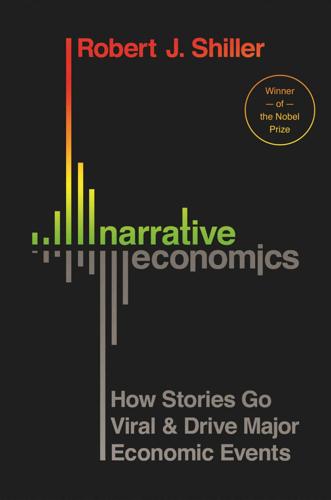
Narrative Economics: How Stories Go Viral and Drive Major Economic Events
by
Robert J. Shiller
Published 14 Oct 2019
Less than one-tenth of 1% of ProQuest News & Newspapers hits for American Dream since King’s “I Have a Dream” speech mention James Truslow Adams, but 3% mention Martin Luther King, Jr. Ultimately, the generally accepted narrative of the American Dream includes a wish for prosperity for everyone, framing it in a way that makes it seem not commercial or selfish. It turns upside down Thorstein Veblen’s idea of conspicuous consumption undertaken solely to prove one’s superiority. As a result, the American Dream became extremely useful in pitches for consumer products that encourage potential purchasers to feel better about their purchases, such as a new home or a second car. In fact, ProQuest News & Newspapers shows that more than half the use of the phrase American Dream has occurred in advertisements rather than articles.
…
This new narrative became associated with two new words that left ordinary people out of the economic picture: technocracy, a society that is commanded by technicians, and technocrat, one of these now-powerful technicians. These words weren’t new to the 1930s. They had been used occasionally in the 1920s to refer to a theory that the government should be run by scientists who could assure world peace. Thorstein Veblen had written a book, The Engineers and the Price System, during the previous depression, 1920–21, that envisioned a world run by a “soviet of technicians.” But the words took on a new meaning with the explosion and duration of unemployment by the early 1930s. A Columbia University group with revolutionary pretensions called itself “Technocracy.”
…
Instead, he seems to think just the opposite, for he says, if inequality is someday reduced: “With this abolition of want and the fear of want, the admiration of riches would decay, and men would seek the respect and approbation of their fellows in other modes than by the acquisition and display of wealth” (George, 1886 [1879], chap. 4). One might also expect to see some recognition of moderation, in the extended depression of the 1890s, in Thorstein Veblen’s influential 1899 book The Theory of the Leisure Class, the book that coined the term “conspicuous consumption.” But a new modesty with that depression is not mentioned. Indeed, the panic of 1893 and the ensuing depression are not even mentioned in that book. Veblen, too, seems to think just the opposite, writing, “Freedom from scruple, from sympathy, honesty and regard for life, may, within fairly wide limits, be said to further the success of the individual in the pecuniary culture” (Veblen, 1899, chap. 9). 2.

Vulture Capitalism: Corporate Crimes, Backdoor Bailouts, and the Death of Freedom
by
Grace Blakeley
Published 11 Mar 2024
While citizens are assumed to be capable of voting in democratic elections, when they arrive at work they become the “subjects of a despotic corporate government”24—and the only alternative to obedience is destitution. While some may argue that they are constrained by democratic processes, today’s megacorporations are in fact extremely well placed to overcome these pressures and influence state policy in their favor. As Thorstein Veblen observed decades ago, the competitive process naturally creates incentives to try to change the rules to one’s own advantage.25 So, over time, the rules of the market game we’re all supposed to be playing come to favor the interests of the powerful. The next question on your lips might be “So what?”
…
Bosses have authority over workers—sometimes significant authority—and the only threat a worker can wield in response is to withdraw their labor, a threat that in much of the world is illegal or tightly regulated.68 Large corporations are also able to exert substantial amounts of power within the state. They can lobby within the state for the adoption of certain policies, donate to particular political parties to shape the outcomes of elections, and even develop and promulgate their own systems of private law and regulation.69 What’s more, as Thorstein Veblen observed, competition itself encourages “alliance” and “conspiracy” among individual capitalists.70 It is the very pressure of competition that encourages those subject to it to form alliances to strengthen their own position relative to other competitors. These alliance blocs are, in turn, better able to defeat their competitors and dominate the markets in which they operate.
…
See, for example, Michael Hudson, Killing the Host: How Financial Parasites and Debt Bondage Destroy the Global Economy (NP: ISLET, 2015); Katharina Pistor, The Code of Capital: How the Law Creates Wealth and Inequality (Princeton, NJ: Princeton University Press, 2020). 24. Ferreras, Firms as Political Entities. 25. Michael Hudson and Ahmet Oncu, Absentee Ownership and Its Discontents: Critical Essays on the Legacy of Thorstein Veblen (NP: ISLET, 2016). 26. Martin Beddeleem, “Recoding Liberalism: Philosophy and Sociology of Science against Planning,” in Quinn Slobodian, Dieter Plehwe, and Philip Mirowski (eds.), Nine Lives of Neoliberalism (London: Verso, 2020). 27. See Geoff Mann, In the Long Run We Are All Dead: Keynesianism, Political Economy, and Revolution (London: Verso, 2017). 28.
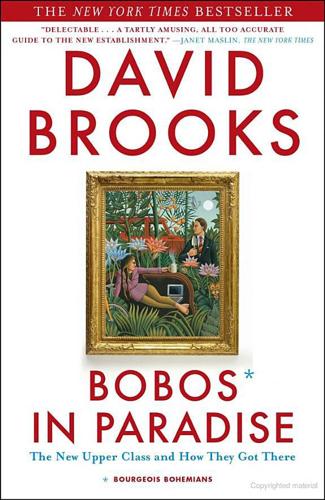
Bobos in Paradise: The New Upper Class and How They Got There
by
David Brooks
Published 1 Jan 2000
He picked up twelve men from the bottom ranks of business and forced them into an organization that conquered the world.” In 1926 bookstores sold more copies of The Man Nobody Knows than of any other nonfiction book. On the other hand, there was a literary assault on bourgeois values and a flourishing bohemian alternative in Greenwich Village and elsewhere. During this period such writers as Sinclair Lewis, Thorstein Veblen, John O’Hara, John Dos Passos, Ernest Hemingway, and Gertrude Stein rejected bourgeois values, going off to Paris or Moscow, engaging in radical politics, or otherwise railing against the rise of provincial Babbittry. Malcolm Cowley, a Greenwich Village habitué who was also a writer and editor, summarized the priorities of early-20th-century American bohemians in his 1934 book, Exile’s Return.
…
This new set of codes organizes the consumption patterns of the educated class, encouraging some kinds of spending, which are deemed virtuous, and discouraging others that seem vulgar or elitist. They redefine what it means to be a cultured person. Taken as a whole, this set of rules make it clear that the Thorstein Veblen era is over. Maybe off in Vegas there are still some rich peasants trying to conspicuously consume, buying big limousines, powerboats, and sports franchises and piling up possessions to demonstrate their net worth. But the Bobo renounces accumulation and embraces cultivation. He must show, in the way he spends his money, that he is conscientious and not crass.
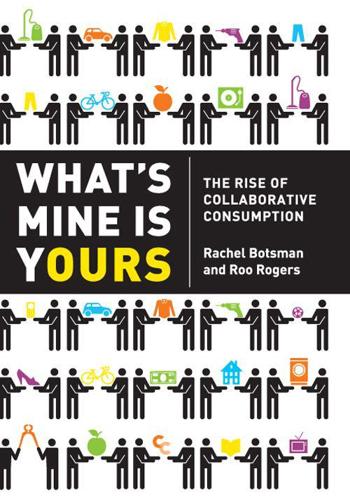
What's Mine Is Yours: How Collaborative Consumption Is Changing the Way We Live
by
Rachel Botsman
and
Roo Rogers
Published 2 Jan 2010
Law enforcers have not yet concluded the Damour manslaughter case, but reports indicate that there were “so many contributing causes to this tragedy” that it will be difficult to assign individual blame. No matter who is to blame for the incident, Damour’s terrible end is a sad and chilling metaphor for our culture at large—a crowd of exhausted consumers knocking down the doors and plowing down people simply to buy more stuff. Hyper-Consumption Thorstein Veblen, a Norwegian economist and sociologist, first coined the term “conspicuous consumption” in 1899.1 He used the term to describe the nouveau riche, a class emerging during the nineteenth century made up of people eager to display their wealth and social power. They spent lavishly on visible goods such as jewelry and clothing to show they were prosperous and to differentiate themselves from the masses.
…
The notion of “having driving up the wanting” is discussed in Clive Hamilton, Growth Fetish (Allen & Unwin, 2003). 46. Susan Fournier and Michael Guiry, “An Emerald Green Jaguar, a House on Nantucket and an African Safari: Wish Lists and Consumption Dreams in Materialist Society,” Advances in Consumer Research 20 (1993), 352–358. 1. Thorstein Veblen, The Theory of the Leisure Class (The Macmillan Company, 1899). 2. Robert Lane, The Loss of Happiness in Market Democracies (Yale University Press, 2000), 176. 3. Clive Hamilton, “The Social Roots of the Environmental Crisis,” www.uri.edu/artsci/ecn/starkey/ECN398%20-Ecology,%20Economy,%20Society/Starkey_Micro_2e_c10.pdf 4.
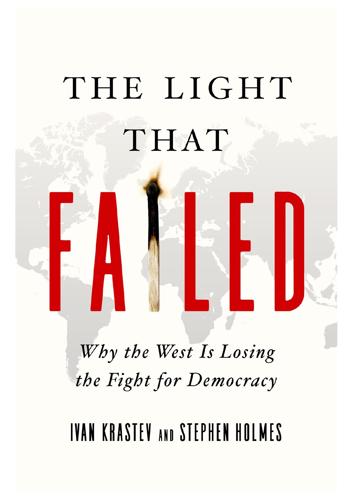
The Light That Failed: A Reckoning
by
Ivan Krastev
and
Stephen Holmes
Published 31 Oct 2019
We need to distinguish, as already suggested, between the full-scale imitation of a single orthodox model, monitored (not imposed) by judgemental foreigners, and the ordinary learning by which states vicariously profit from each other’s experiences.24 The former engenders resentment, while the latter, usually ascribed to the demonstration effect of perceived successes and failures, does not. Second, and even more importantly, we should separate the imitation of means from the imitation of goals. We call the former borrowing rather than imitation. A classic formulation of this distinction was articulated by the great economic sociologist Thorstein Veblen, who wrote at the beginning of the twentieth century that the Japanese had borrowed ‘the industrial arts’ of the West but not the West’s ‘spiritual outlook’ or its ‘principles of conduct and ethical values’.25 Borrowing technical means does not affect identity, at least not in the short term, while imitating moral ends cuts deeper and can initiate a much more radically transformative process, veering close to a ‘conversion experience’.
…
Not only can the imitative impulse coexist with inventiveness, as Tarde concedes, but under ordinary circumstances imitation can make an important contribution to creativity and originality. Cf. Kal Raustiala and Christopher Sprigman, The Knockoff Economy: How Imitation Sparks Innovation (Oxford University Press, 2012). 24. Wade Jacoby, Imitation and Politics: Redesigning Modern Germany (Cornell University Press, 2000). 25. Thorstein Veblen, ‘The Opportunity of Japan’, Journal of Race Development 6:1 (July 1915), pp. 23–38. 26. Trapped in its economics-centred understanding of politics, Brussels finds messianic provincialism in Budapest and Warsaw easy to ridicule but almost impossible to understand. For European bureaucrats, the fact that Poland and Hungary are among the greatest net beneficiaries of EU funding has made their revolt against the EU seem totally irrational.
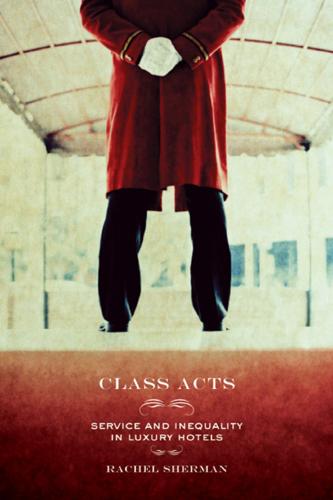
Class Acts: Service and Inequality in Luxury Hotels
by
Rachel Sherman
Published 18 Dec 2006
Customized contacts with workers are a major part of what clients are paying for in many luxury sites, including high-end hotels, restaurants, spas, resorts, retail shops, and first-class airline cabins. However, the limited sociological literature on hotels and other service industry organizations has rarely focused on luxury.2 And few sociologists since Thorstein Veblen, over a century ago, have investigated the luxury sector at all, let alone luxury service specifically.3 To understand luxury service, I decided I needed to participate in its production, which led me to conduct twelve months of ethnography in two luxury hotels. Based on the data I gathered and on interviews I conducted, this book looks at how managers, guests, and interactive workers negotiated unequal entitlement to resources, recognition, and labor as they produced and consumed luxury service.
…
Again, the guest is given the sense of unlimited entitlement in the fulfillment of her needs. “Pampering”: Displays of Labor Another key element of luxury service, though it is not explicitly acknowledged as such either in the industry or among hotel guests, is the guest’s entitlement to workers’ physical labor—what some guests refer to as “pampering.” Thorstein Veblen saw both abstention from labor and consumption of the labor of others as markers of the leisure class.36 He would not have been surprised to find that guests in the luxury hotel are entitled both to avoid working themselves and to benefit from the unlimited labor of workers. But this available labor is not only physical; it also has an emotional dimension, indicating “care” to guests, just as a mother’s preparation of dinner indicates love for her family.37 I call these offerings “displays of labor”; they can involve visible human work or simply markers of labor.
…
She contrasted herself to her ex-husband, who had been raised with money but had never found a way to enjoy it, whereas she had grown up in a poor family. Christina, a young leisure traveler, said her husband always stayed at the Ritz-Carlton, in a suite; she told me, “He just wants it because he grew up staying in Holiday Inns, and he likes the fact that he can do it.” Thorstein Veblen might have seen luxury hotels as sites of “conspicuous consumption” and “conspicuous leisure,” in which individuals parade their consumption and their free time in order to obtain status.6 But guests seemed to prefer not to see them that way.7 Contradicting the idea that they were pursuing status rewards, several leisure travelers I interviewed claimed they did not always tell their friends or families which hotels they had chosen, for fear they would find spending on such hotels excessively extravagant.
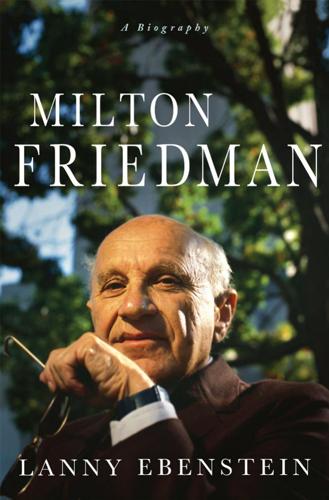
Milton Friedman: A Biography
by
Lanny Ebenstein
Published 23 Jan 2007
He must have felt that he had truly arrived. The original head of what was then the Department of Political Economy at Chicago (now the Department of Economics) was James Laurence Laughlin, a staunch economic conservative and follower of John Stuart Mill. Laughlin presided over a diverse and eclectic department. Thorstein Veblen—perhaps the most famous American economist (and possibly the most famous economist in the world) in the first quarter of the twentieth century—had been at Chicago first as a fellow and then as a member of the faculty. Wesley Mitchell, a student and then a young faculty member at Chicago, called its early Department of Political Economy “perhaps the most stimulating group of scholars in the country, certainly the group with the most varied traditions.”2 The transition of the name of the department at Chicago, which occurred early in the twentieth century and reflected a broader trend at other colleges and universities, indicates the changing conception that economists had of their discipline.
…
“In the history of economics,” John Kenneth Galbraith wrote, “the age of John Maynard Keynes gave way to the age of Milton Friedman.”1 It is an indication of the tendency of paradigms and views of the world to change and even to collapse that two economists who would have been considered in absolutely the first tier for half of the twentieth century (from about 1900 to 1930 and from 1950 to 1970), Thorstein Veblen and Galbraith, are now considered very differently. Though it is as certain as certain can be that the future will look on the present very differently than the present looks on itself, this is, for whatever reasons, among the most difficult of lessons to learn and to internalize. It is nonetheless among the most important.
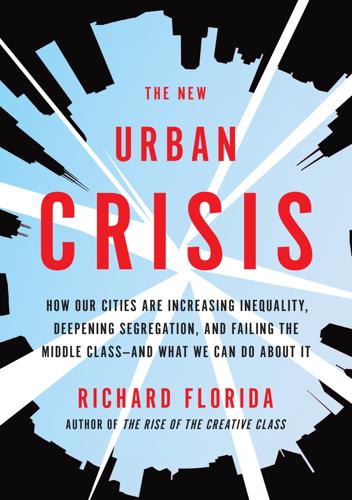
The New Urban Crisis: How Our Cities Are Increasing Inequality, Deepening Segregation, and Failing the Middle Class?and What We Can Do About It
by
Richard Florida
Published 9 May 2016
They aren’t looking for places to raise their families or to do productive work. Instead, they’re looking for safe places to park their money. If luxury real estate was the most obvious way to measure and display wealth as “conspicuous consumption” around the turn of the twentieth century, when Thorstein Veblen coined the term, it has become something more mundane today—a new class of economic asset used to store and grow wealth.10 The broader evidence indicates that New York and London do have considerable shares of the world’s wealthiest people, the former leading in the location of billionaires, the latter in the location of multimillionaires.
…
Housing News Report, September 2015, https://issuu.com/ftmagazine/docs/housingnewsreport_sept; Saskia Sassen, “Who Owns Our Cities—and Why This Urban Takeover Should Concern Us All,” The Guardian, November 24, 2015, www.theguardian.com/cities/2015/nov/24/who-owns-our-cities-and-why-this-urban-takeover-should-concern-us-all. 10. Thorstein Veblen, The Theory of the Leisure Class: An Economic Study of Institutions (Mineola, NY: Dover Publications, 1994 [1899]). 11. Richard Florida, Charlotta Mellander, and Isabel Ritchie, The Geography of the Global Super-Rich (Toronto: Martin Prosperity Institute, Rotman School of Management, University of Toronto, 2016), http://martinprosperity.org/media/The-Geography-of-the-Global-Super-Rich.pdf.
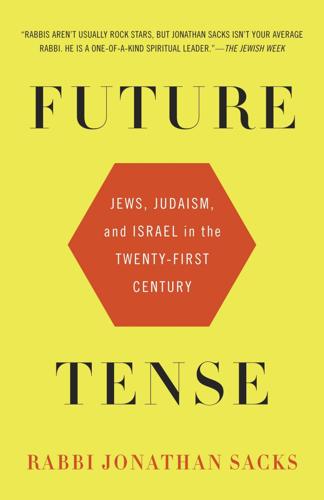
Future Tense: Jews, Judaism, and Israel in the Twenty-First Century
by
Jonathan Sacks
Published 19 Apr 2010
Heinrich Heine called baptism his ‘entrance-ticket to European culture’. Jewish intellectuals in the age of antisemitism were, in effect, secular Marranos. They hid their identity. In some cases—again Marx and Wittgenstein are examples—they overcompensated by developing attitudes that were hardly less than antisemitic. In an essay published in 1919, Thorstein Veblen wrote about the intellectually gifted Jew that he (or she) achieved intellectual independence ‘only at the cost of losing his secure place in the scheme of conventions into which he has been born, and at the cost, also, of finding no similarly secure place in that scheme of gentile conventions into which he is thrown’.
…
Chapter 10: Torah and Wisdom: Judaism and the World 1 See Paul R. Mendes-Flohr and Jehuda Reinharz (eds.), The Jew in the Modern World: A Documentary History, New York, Oxford University Press, 1980, pp. 252–3. 2 William Rees-Mogg, The Reigning Error: The Crisis of World Inflation, London, Hamilton, 1974, p. 11. 3 Thorstein Veblen, ‘The intellectual preeminence of Jews in modern Europe’, Political Science Quarterly, vol. 34, no. 1, March 1919, pp. 33–42. 4 Yirmiyahu Yovel, Spinoza and Other Heretics, Princeton, NJ, Princeton University Press, 1989. 5 See Alasdair MacIntyre, Against the Self-Images of the Age: Essays on Ideology and Philosophy, Notre Dame, Ind., University of Notre Dame Press, 1971. 6 J.
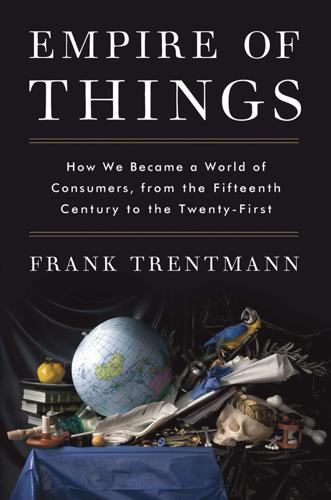
Empire of Things: How We Became a World of Consumers, From the Fifteenth Century to the Twenty-First
by
Frank Trentmann
Published 1 Dec 2015
Particular kinds of clothes and other goods simultaneously signal that an individual belongs to one group and keep others at a distance. This is a very old view, going back to the ancients, but perhaps its most influential version today is the notion of ‘conspicuous consumption’, a term made famous just over a century ago by Thorstein Veblen in his critique of the American rich and their flashy display of luxury.21 Since people want to be loved and admired, such luxury enjoyed by the few causes envy and emulation by the many, triggering a race in which no one wants to be left behind. This view of human behaviour remains the single most dominant strand in popular debates about affluence, shopping binges and debt.
…
Like Marshall, Hobson believed that people would not just consume more, but better. Gambling, racecourses and the ‘flash music-hall’ were the cultural byproducts of imperialism and inequality. The lower classes aped the manners of financiers and aristocrats; Hobson admired the American economist Thorstein Veblen, who who had attacked the luxurious lifestyles of the American rich as a form of social waste, and would meet him in Washington, DC, in 1925. Together, Hobson hoped, social welfare and free trade would purify the air. Ordinary Britons would ‘begin to demand better commodities, more delicate, highly finished and harmonious’.
…
Unlike for many later critics of ‘consumerism’, for Taut the problem was not that of a ‘throwaway society’. It was that people were not throwing away enough. One person’s attic became another one’s living room. The diffusion of goods around 1900 disrupted established codes of status. Accumulation and display were a way to reassert social hierarchies. In 1899, the heterodox Chicago economist Thorstein Veblen christened this phenomenon ‘conspicuous consumption’. In his Theory of the Leisure Class, he focused primarily on the super-rich and their use of costly entertainments and fine arts to distinguish themselves from those below. For the elite, ‘vicarious consumption’ was a way to assert their high station in life at a time when goods were becoming available to the many.18 The pivotal figure in this competitive game was the lady of the house.

The Meritocracy Trap: How America's Foundational Myth Feeds Inequality, Dismantles the Middle Class, and Devours the Elite
by
Daniel Markovits
Published 14 Sep 2019
War on Poverty: See, e.g., “Johnson State of Union Address Provides Budget $97.9 Billion, War on Poverty, Atomic Cutback,” New York Times, January 9, 1964, accessed August 11, 2018, www.nytimes.com/1964/01/09/archives/johnson-state-of-union-address-provides-budget-of-979-billion-war.html. Thorstein Veblen: John Patrick Diggins, Thorstein Veblen: Theorist of the Leisure Class (Princeton, NJ: Princeton University Press, 1999), 33, 135. “are by custom exempt”: Veblen, Theory of the Leisure Class, 1. “a steady application”: Veblen, Theory of the Leisure Class, 8. “music, or diversion, or conversation”: See Benjamin Franklin, The Autobiography of Benjamin Franklin, ed.
…
Difficult, but not impossible. A clear-eyed understanding of meritocracy unmasks its claim to tie advantage to desert. The first steps on the path to understanding come from studying the working rich: who they are, and how they make their money. FROM LEISURE TO INDUSTRY The great sociologist Thorstein Veblen puts the working rich into historical context. Veblen was born in the middle of the nineteenth century and died in the summer of 1929, literally on the eve of the Great Depression, which would eventually destroy the order he so shrewdly described. He made the old elite the subject of his acidly observed sociology of wealth from the turn of the twentieth century, The Theory of the Leisure Class.
…
Hereafter cited as Voth, “The Longest Years.” exceeded fifty hours: U.S. Census Bureau, Historical Statistics of the United States, 1789–1945 (Washington, DC, 1949), 67, accessed May 24, 2018, www2.census.gov/prod2/statcomp/documents/HistoricalStatisticsoftheUnitedStates1789-1945.pdf. the elite despised industry: Thorstein Veblen, The Theory of the Leisure Class: An Economic Study of Institutions (New York: Macmillan, 1899), 19. Hereafter cited as Veblen, Theory of the Leisure Class. how hard they worked: This formulation borrows from Voth, “The Longest Years,” 1066, 1075. two generations ago: See Chapter 6. high school degree or less: See Steven F.
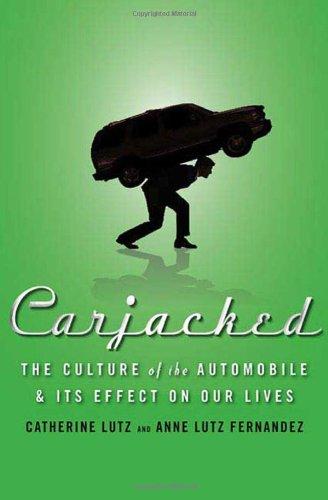
Carjacked: The Culture of the Automobile and Its Effect on Our Lives
by
Catherine Lutz
and
Anne Lutz Fernandez
Published 5 Jan 2010
In their quick and vehement answers, you will hear the power of what has come to be called identity shopping. SIGNALING SUCCESS While few car buyers like to admit that status motivates their purchases, consumer experts like marketing executive Wendy Wahl agree that “conspicuous consumption” is still alive and well in the twenty-first century. When this term was coined by social scientist Thorstein Veblen at the dawn of the twentieth century, he was describing how America’s then tiny 58 Carjacked upper class consumed “freely and of the best” products in order to telegraph their wealth and social superiority.23 But according to Wahl and other marketers, conspicuous consumption has become more pervasive in our current era of “mass affluence.”
…
Jennifer Aaker, “The Malleable Self: The Role of Self-Expression in Persuasion,” Journal of Marketing Research, 1999, 36 (1): 45–57. Ibid. Juliet B. Schor, The Overspent American: Upscaling, Downshifting, and the New Consumer (New York: Basic Books, 1998), p. 3. NOTES 22. 23. 24. 233 Ibid., p. 10. Thorstein Veblen, The Theory of the Leisure Class: An Economic Study of Institutions (New York: Penguin Classics, 1994 [1912]), p. 64. Income figures are from Emmanuel Saez, “Striking It Richer: The Evolution of Top Incomes in the United States (Update with 2007 Estimates),” August 5, 2009. http://elsa.berkeley.edu/~saez/TabFig2007.xls.

100 Years of Identity Crisis: Culture War Over Socialisation
by
Frank Furedi
Published 6 Sep 2021
. → Dowbiggin, I. (2011) The Quest For Mental Health: A Tale of Science, Medicine, Scandal, Sorrow, and Mass Society, Cambridge: Cambridge University Press. a, b Dunn, R.G. (1998) Identity Crises: A Social Critique of Postmodernity, Minneapolis: University of Minnesota Press. a, b Eby, C.V. (1994) ‘Thorstein Veblen and the rhetoric of authority’, American Quarterly, 46(2), 139 – 173. → Ecclestone, K. and Hayes, D. (2019) The Dangerous Rise of Therapeutic Education, London: Routledge. → Editorial (1963) ‘Diagnosis of a sick society’, British Medical Journal, 1(5324), 97. → Eisenstadt, S.N. (1963) ‘Archetypal patterns of youth’, in Erikson, E.H.
…
Hayek (1952) The Counter-revolution of Science: Studies on the Abuse of Reason, Glencoe: Free Press, p.87. 501 Hayek (1952) p.94. 502 Habermas [1967] (1987) pp. 75, 81. 503 Kessen (1979) p.818. 504 T.L. Haskell [1977] (2000) The Emergence of Professional Social Science: The American Social Science Association and the Nineteenth-Century Crisis of Authority, Baltimore: Johns Hopkins University Press, p.87. 505 C.V. Eby (1994) ‘Thorstein Veblen and the rhetoric of authority’, American Quarterly, 46(2), 139 – 173, at 152. 506 E.A. Ross (1906) ‘The nation’s need of moral experts’, Current Literature (1888 – 1912), vol. XLI, p.93. 507 H. Kuhlmann (2005) ‘Walden Two: a behaviorist utopia’, in Living Walden Two: B. F. Skinner’s Behaviorist Utopia and Experimental Communities, Urbana-Champaign: University of Illinois Press, p.30. 508 Chisholm (1946) p.9. 509 A.

The Sirens' Call: How Attention Became the World's Most Endangered Resource
by
Chris Hayes
Published 28 Jan 2025
To judge from the behaviour and the achievements of the wealthy classes to-day in any quarter of the world, the outlook is very depressing.[20] The challenge for the human race, as Keynes saw it, in the future of abundance he foresaw, would be one in which “man will be faced with his real, his permanent problem—how to use his freedom…how to occupy the leisure…for him, to live wisely and agreeably and well.”[21] As Keynes acknowledged, certain classes were already wrestling with this question. While industrial capitalism consigned millions to daily drudgery, it simultaneously made fortunes for a small elite, liberating people entirely from having to do anything at all, a massive new version of the “leisure class,” in Thorstein Veblen’s immortal coinage, whose “characteristic feature [is] a conspicuous exemption from all useful employment.”[22] * * * — I think it makes sense to understand the development of what we call modern media as arising to meet this need. Over the nineteenth and twentieth centuries, new technologies and lucrative attention markets grew up to solve the problem first of the leisure class and then everyone else in their hours of leisure: Where do I put my restless mind when I am not at work?
…
BACK TO NOTE REFERENCE 18 This is a decidedly nonfeminist reading of a condition Betty Friedan would take on in The Feminine Mystique thirty years later. Keynes, Essays in Persuasion, 197–98. BACK TO NOTE REFERENCE 19 Keynes, Essays in Persuasion, 198–99. BACK TO NOTE REFERENCE 20 Keynes, Essays in Persuasion, 198. BACK TO NOTE REFERENCE 21 Thorstein Veblen, Theory of the Leisure Class: An Economic Study of Institutions (New York: Vanguard Press, 1928), 40. BACK TO NOTE REFERENCE 22 Pamela Hutchinson, “A Window on Infinity: Rediscovering the Short Films of the Lumière Brothers,” Guardian, May 23, 2016, accessed March 4, 2024, www.theguardian.com/film/2016/may/23/rediscovering-lumiere-brothers-early-cinema-pioneers.
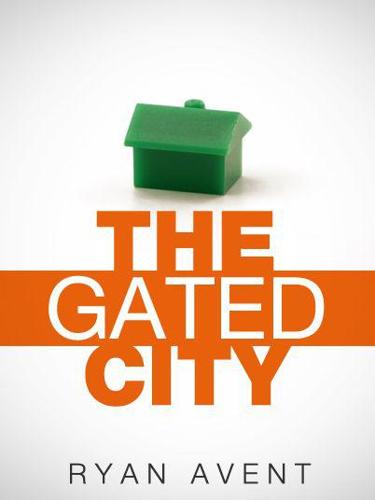
The Gated City (Kindle Single)
by
Ryan Avent
Published 30 Aug 2011
Today, the condition of being around a lot of other people adds to metropolitan expense via congestion, and the cost of competition for scarce public and private resources (the parks are crowded, and the best shows sell out quickly). What could possibly make city life worth the expense? Maybe it’s all for show. It could be that cities are what economists call Veblen goods, after economist Thorstein Veblen. A Veblen good has an unusual property -- as its price rises, demand for it also rises. Why? Because it functions as a status symbol. Wealthy Americans could choose to pay high prices for city life because city life is like a Rolex watch or a $10,000 bottle of wine: it shows that you've got money.
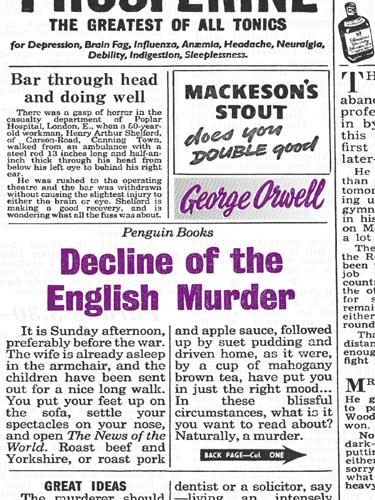
Decline of the English Murder
by
George Orwell
Published 24 Jul 2009
Seneca On the Shortness of Life Marcus Aurelius Meditations St Augustine Confessions of a Sinner Thomas à Kempis The Inner Life Niccolò Machiavelli The Prince Michel de Montaigne On Friendship Jonathan Swift A Tale of a Tub Jean-Jacques Rousseau The Social Contract Edward Gibbon The Christians and the Fall of Rome Thomas Paine Common Sense Mary Wollstonecraft A Vindication of the Rights of Woman William Hazlitt On the Pleasure of Hating Karl Marx & Friedrich Engels The Communist Manifesto Arthur Schopenhauer On the Suffering of the World John Ruskin On Art and Life Charles Darwin On Natural Selection Friedrich Nietzsche Why I am So Wise Virginia Woolf A Room of One’s Own Sigmund Freud Civilization and Its Discontents George Orwell Why I Write Confucius The First Ten Books Sun-tzu The Art of War Plato The Symposium Lucretius Sensation and Sex Cicero An Attack on an Enemy of Freedom The Revelation of St John the Divine and The Book of Job Marco Polo Travels in the Land of Kubilai Khan Christine de Pizan The City of Ladies Baldesar Castiglione How to Achieve True Greatness Francis Bacon Of Empire Thomas Hobbes Of Man Sir Thomas Browne Urne-Burial Voltaire Miracles and Idolatry David Hume On Suicide Carl von Clausewitz On the Nature of War Søren Kierkegaard Fear and Trembling Henry David Thoreau Where I Lived, and What I Lived For Thorstein Veblen Conspicuous Consumption Albert Camus The Myth of Sisyphus Hannah Arendt Eichmann and the Holocaust Plutarch In Consolation to his Wife Robert Burton Some Anatomies of Melancholy Blaise Pascal Human Happiness Adam Smith The Invisible Hand Edmund Burke The Evils of Revolution Ralph Waldo Emerson Nature Søren Kierkegaard The Sickness unto Death John Ruskin The Lamp of Memory Friedrich Nietzsche Man Alone with Himself Leo Tolstoy A Confession William Morris Useful Work v.

The End of Growth: Adapting to Our New Economic Reality
by
Richard Heinberg
Published 1 Jun 2011
Henry George (1839–1897) has been called America’s most important home-grown economist; his writings explored the implications of the principle that each person should own what he or she creates, but that everything found in nature, most importantly land, should belong equally to all humanity.38 Economist Thorstein Veblen (1857–1929) criticized the wastefulness of consumption for status.39 More recently, the book Small Is Beautiful by German-British economist E. F. Schumacher (1911–1977) inspired Bob Swann (an American pioneer of land trusts) to found the E. F. Schumacher Society, which is now the New Economics Institute, one of several US organizations that promote a basic restructuring of the economy according to ecological principles.40 If growth is impossible to sustain, what alternative goal should economies pursue?
…
Henry David Thoreau, Walden (Boston, 1854); Scott Nearing and Helen Nearing, Living the Good Life (New York: Schocken Books, 1970). 37. Duane Elgin, Voluntary Simplicity (New York: HarperCollins, 1981); Joe Dominguez and Vicki Robin, Your Money or Your Life (New York: Viking Penguin, 1992). 38. Henry George, Progress and Poverty (New York: Doubleday, 1879); The Henry George Institute. 39. Thorstein Veblen, The Theory of the Leisure Class: An Economic Study of Institutions (New York: Macmillan, 1899). 40. Some other organizations and websites include the New Economics Institute, Capital Institute, New Economics Foundation, Third Millennium Economy, Real World Economics, paecon.net/PAEReview/, and ethicalmarkets.com. 41.
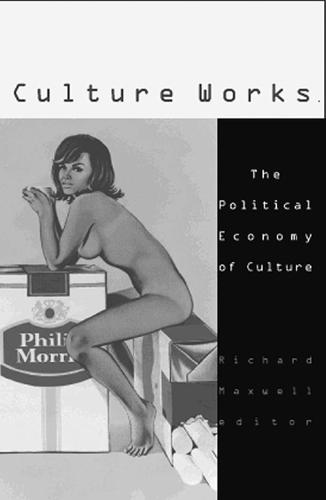
Culture works: the political economy of culture
by
Richard Maxwell
Published 15 Jan 2001
For a discussion on the rise of corporations in America, see, for example, William G. Roy, Socializing Capital: The Rise of the Large Industrial Corporation in America (Princeton, N.J.: Princeton University Press, 1997). 7. The classic statement remains Thorstein Veblen, The Engineers and the Price System (New York: Viking Press, 1938), first published in 1921, and Thorstein Veblen, Absentee Ownership and Business Enterprise in Recent Times: The Case of America (New York: Viking Press, 1954), first published in 1923. See also Paul A. Baran and Paul M. Sweezy, Monopoly Capital (New York: Monthly Review Press, 1966), and Merle Curti, “The Changing Concept of Human Nature in the Literature of American Advertising,” Business History Review 41:4 (winter 1967): 346; Matthew P.
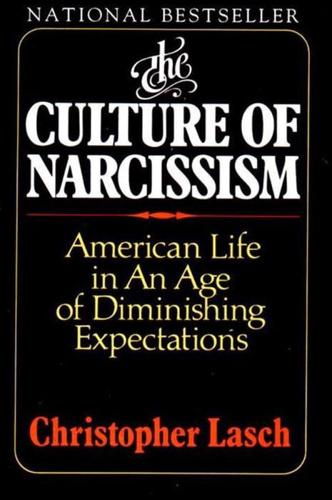
The Culture of Narcissism: American Life in an Age of Diminishing Expectations
by
Christopher Lasch
Published 1 Jan 1978
Luke Rhinehart, The Dice Man (1971), quoted in Cohen and Taylor, Escape nineteenth-century campaign against popular amusements Robert W. Malcolmson Popular Recreations in English Society 1750-1850 (Cambridge: Cambridge University Press, 1973), p. 70. Lee Benson The Concept ofJacksonian Democracy (New York: Atheneum , " Ill , , , 1964) p. 201. Attempts, p. 184. , 112 Thorstein Veblen The Theory of the Leisure Class (New York: Modern Library, 1934 [1899]), p. 256. 112 Goodhart and Chataway War vnthout Weapons pp. 4-5, 28-29. "In most countries the 'Bourgeoisie' . . . major portion of your energies 113 . Challenge without , 226-27, 233, 238, 240. V , , Morris Dickstein, Gates cfEden (New York: Basic Books, 1977), pp. 219-20,
…
Smith American Youth Culture: Group Life in Teenage Society (Glencoe: Free Press, 1962); Henry, Culture against Man, chs. 6 7. , , 139 Thomas Jefferson, Notes on the State of Virginia (New York: Harper Torch- debates on educational policy in the 1950s Spring, Sorting Machine chs. 1-3. 140 "When we wrote at school . . . nonverbally communicate Joyce MaymTd, Looking Back (New York: Doubleday, 1973), p. 154. , " , 131 Michael Cheval ier. Society, Manners, and Politics in the United States: Letters on 133 North America (New York: Doubleday, 1961 [1838]), ch. 34. Veblen on industrial discipline 141 Frederick Exley, A Fan's Notes (New York: Random House 1968), pp. 6-7. 142 Kenneth B. Clark et al. Thorstein Veblen, The Theory of Business Enterprise (New York: Scribner's, " 1904), ch. 9, "The Cultural Incidence of the Machine Process. Eastman, NAM on industrial education . , books, 1964 [1785]), pp. 139-40, 142. 134 Spring, Tbe Sorting Machine: National Educational Policy since 194! (New York: David McKay 1976), pp. 18-21.

A Pelican Introduction Economics: A User's Guide
by
Ha-Joon Chang
Published 26 May 2014
This group of economists are known as the Institutionalist school – or the Old Institutional Economics (OIE), in recognition of the emergence of the so-called New Institutional Economics (NIE) since the 1980s. Individuals are shaped by society: the rise of the Institutionalist school The emergence of the Institutionalist school can be traced back to Thorstein Veblen (1857–1929), who made his name for questioning the notion of the rational, self-seeking individual. He argued that humans have layers of motivations behind their behaviours – instinct, habit, belief and, only finally, reason. Veblen also emphasized that human rationality cannot be defined as a timeless thing but is shaped by the social environment, made up of institutions – formal rules (e.g., laws, internal rules of companies) and informal rules (e.g., social customs, conventions in business dealings) – that surround the particular individuals that we are observing.
…
* Thereby reducing its Gini coefficient to o, as it will be a perfectly equal society – of one person. * Poverty rates were 6.4 per cent in Iceland, 7.2 per cent in Luxembourg and 7.3 per cent in Finland. They were 17.4 per cent in the US, 16.0 per cent in Japan and 15.4 per cent in Spain. * The term has become famous in economics thanks to The Theory of the Leisure Class by Thorstein Veblen (whom we met in Chapter 4), a savage critique of what he called conspicuous consumption (consumption to show off one’s wealth, rather than for the pleasure of it). * The ILO defines child labour as children under the age of fifteen (or twelve, for some jobs) doing jobs that hamper their physical development and education, thereby excluding cases such as children helping with domestic chores or doing paper rounds

Human Compatible: Artificial Intelligence and the Problem of Control
by
Stuart Russell
Published 7 Oct 2019
“Not at all,” replied the farmer. “I’m pretty happy because my damned neighbor has lost his wife and all his children too!” The economic analysis of pride and envy—particularly in the context of social status and conspicuous consumption—came to the fore in the work of the American sociologist Thorstein Veblen, whose 1899 book, The Theory of the Leisure Class, explained the toxic consequences of these attitudes.32 In 1977, the British economist Fred Hirsch published The Social Limits to Growth,33 in which he introduced the idea of positional goods. A positional good is anything—it could be a car, a house, an Olympic medal, an education, an income, or an accent—that derives its perceived value not just from its intrinsic benefits but also from its relative properties, including the properties of scarcity and being superior to someone else’s.
…
In reality, pride and envy typically apply not to differences in well-being but to differences in visible aspects thereof, such as status and possessions. Bob’s hard toil in acquiring his possessions (which lowers his overall well-being) may not be visible to Alice. This can lead to the self-defeating behaviors that go under the heading of “keeping up with the Joneses.” 32. On the sociology of conspicuous consumption: Thorstein Veblen, The Theory of the Leisure Class: An Economic Study of Institutions (Macmillan, 1899). 33. Fred Hirsch, The Social Limits to Growth (Routledge & Kegan Paul, 1977). 34. I am indebted to Ziyad Marar for pointing me to social identity theory and its importance in understanding human motivation and behavior.

A World Without Work: Technology, Automation, and How We Should Respond
by
Daniel Susskind
Published 14 Jan 2020
It seemed to him that the leisure class “contributed nearly the whole of what we call civilisation … Without the leisure class, mankind would never have emerged from barbarism.”38 He thought no one should be obliged to work more than four hours a day, leaving people free to devote themselves to the arts, sciences, literature, and economics. The problem is that looking at the lifestyles of the well-to-do is not particularly revealing. For one thing, there is a tendency to romanticize how wisely they actually spent (or spend) their days. Thorstein Veblen, whose theory of conspicuous consumption mocked how prosperous people in Victorian Britain spent their money (“in order to be reputable it must be wasteful”), also poked fun at how they occupied their free time—what he called “conspicuous leisure.”39 For them, it was not enough to be seen wasting income on garish superfluities; they had to be seen wasting their time as well.
…
,” prepared for the “Work in the Future” symposium, 6 February 2018, organized by Robert Skidelsky. 36. Keynes, Essays in Persuasion, p. 368. 37. Leontief, “National Perspective,” p. 7. 38. Bertrand Russell, In Praise of Idleness and Other Essays (New York: Routledge, 2004), pp. 3 and 13. 39. Thorstein Veblen, The Theory of the Leisure Class (New York: Dover Thrift Editions, 1994). 40. G. A. Cohen, If You’re an Egalitarian, How Come You’re So Rich? (London: Harvard University Press, 2001). 41. See http://www.english-heritage.org.uk/learn/story-of-england/victorian/religion/ (accessed 24 April 2018). 42.

Capitalism, Alone: The Future of the System That Rules the World
by
Branko Milanovic
Published 23 Sep 2019
This is indeed one of the important differences between, on the one hand, classical and social-democratic capitalisms, and on the other, liberal meritocratic capitalism (see Table 2.1, row 4). The perception and reality of classical capitalism was that capitalists (what I call here capital-abundant individuals) were all very rich but typically did not receive much income from labor; in the extreme case, they received no income from labor at all. It is no accident that Thorstein Veblen labeled them the “leisure class.” Correspondingly, laborers received no income from capital at all. Their income came entirely from labor.7 In this case there was a perfect division of society into capitalists and workers, with both sides receiving zero income from the other factor of production.
…
The structuralists in Latin America have been arguing since the 1960s that one of the reasons why the savings rate in Latin American countries is low is that the rich are unwilling to save lest their consumption pattern be seen as falling below that of their (richer) North American counterparts. Thorstein Veblen made a similar point in his writings about conspicuous consumption of luxury goods—that the wastefulness of consumption deflected the funds from more productive uses, but that wastefulness itself was the objective sought after.35 Much further back, Machiavelli zeroed in on the same idea, namely, that relations with richer neighbors stimulate corruption: The goodness is the more to be admired in these days in that it is so rare.
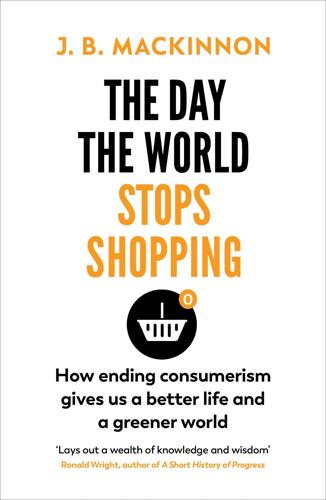
The Day the World Stops Shopping
by
J. B. MacKinnon
Published 14 May 2021
“A lower-consumption lifestyle—you avoid lots of problems,” one woman told me. “You don’t have to worry about what to wear, whether your car is up to date, whether your house is up to date.” This sense of relief is one of the most important psychological shifts in a world without shopping. In 1899, Thorstein Veblen, a Norwegian-American social and economic theorist, wrote The Theory of the Leisure Class, a coolly observant book about the behaviour of the upper classes. In it, Veblen coined the term “conspicuous consumption” to describe consumption that serves its purpose mainly when it is plainly visible to others.
…
Already wealthy, they looked down on those who needed to make money, even as self-made merchants, traders and business people became richer than they were. Their anti-materialism certainly wasn’t motivated by environmental responsibility or ideals of simple living—it was a form of snobbery used to maintain their status and privilege. Yet their way of life points to the different forms that richness can take. When Thorstein Veblen mocked the late nineteenth-century rich, he aimed much of his ire at their privilege to enjoy leisure and leave unpleasant work to lower classes. While he argued that conspicuously wasteful spending was one way the rich make their status known, this didn’t have to involve endlessly consuming more—the same purpose could be served by buying expensive goods that are no more useful than cheaper ones.
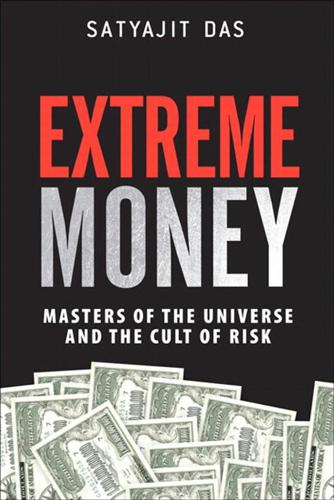
Extreme Money: Masters of the Universe and the Cult of Risk
by
Satyajit Das
Published 14 Oct 2011
For a small group, wealth provided social acceptance, power, and influence. It became a means for self-expression, a statement of status and selfhood. As F. Scott Fitzgerald observed: “Let me tell you about the very rich. They are different from you and me. They have more money.”2 In his 1899 book The Theory of the Leisure Class, Thorstein Veblen, a Norwegian-born American economist, created the term conspicuous consumption, meaning the waste of money or resources by people to establish higher status. Conspicuous leisure was the waste of time by people to achieve the same thing. By the late twentieth century, it was unnecessary even to spend money on useless things and wasteful pursuits.
…
In a quiet steady voice, she explained the hardships that the loss had caused. She wanted to know “whether there was any chance she would see any of her money before her life ended.” 3. Business of Business In 1922 U.S. President Calvin Coolidge famously observed: “The business of America is business.” The economist Thorstein Veblen saw a clear difference between industry, producing things, and business, making money from producing things. In the age of capital, business rapidly financialized. Originally, business people invested in factories and businesses that produced and sold things. Now, in the twentieth century, business people sought to make money in ways not necessarily directly linked to the making of things.
…
Where investing in hedge funds, diversification makes no sense, earning average or worse returns. The investor pays a fee to the FoF manager (1 percent of AUM and 10 percent of performance) as well as the hedge fund manager’s fee (2 percent and 20 percent). FoF might stand for “fee-of-fees.” Skewed payoffs for the manager encourage aggressive risk taking.18 The economist Thorstein Veblen identified this: “It is always sound business to take any obtainable net gain, at any cost and at any risk to the rest of the community.” In 2007, three hedge fund managers took home more than $1 billion. At the congressional inquiry into the industry, Maryland Democratic representative Elijah Cummings reported that his neighbor asked him: “How does it feel to be going before five folks that have gotten more money than God?”
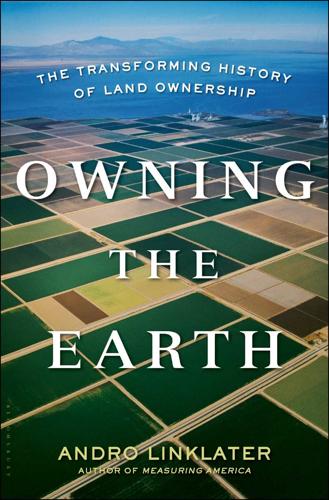
Owning the Earth: The Transforming History of Land Ownership
by
Andro Linklater
Published 12 Nov 2013
Yet at the very moment when economists were in broad agreement that government or corporate planning of the markets was the only way to solve the crisis of capitalism, another, more acceptable solution began to emerge. It depended critically upon the new, hybrid way of owning the earth. The solution was half-apparent in the phrase “conspicuous consumption” used by Thorstein Veblen in his Theory of the Leisure Class published in 1899. Veblen coined the term as a jibe against the bloated plutocrats who flaunted their wealth by their “unremitting demonstration of the ability to pay.” But even at that date, the availability of credit was enabling white-collared, half-propertied wage slaves to do much the same, albeit on a reduced scale.
…
Although muted by the 1930s depression, the economy that grew up around the home would galvanize the production of steel plants and plastic factories, transport and energy suppliers, and the provision of financial, marketing, and advertising services. By the end of the century, the consumer economy, a sector in its infancy when Harding drew attention to it, was responsible for about 70 percent of the gross domestic product of the United States. In the opinion of a stream of economic commentators, from Thorstein Veblen at the beginning of the century to J. K. Galbraith near its end, it also provided one answer to industrial capitalism’s crisis of overproduction. “When a family buys a home, the ripple effect is enormous,” President Clinton explained in 1995. “It means new homeowner consumers. They need more durable goods, like washers and dryers, refrigerators and water heaters.
…
“part of the Greater Britain”: quoted in Belchin, Replenishing the Earth, 481. “a projection of the nineteenth century’s fear”: Alan Greenspan’s defense of monopolies appeared in a paper given at the Antitrust Seminar of the National Association of Business Economists, Cleveland, September 25, 1961. “conspicuous consumption”: In Theory of the Leisure Class by Thorstein Veblen. Fairford, United Kindom: Echo, 2007, 33–36, and ch. 4 passim. “It’s part of him. . . .”: in The Grapes of Wrath by John Steinbeck. (New York: Barnes & Noble, 1997), 35. Chapter Seventeen: State Capitalism The birth of the new Prussia: German reform, see History of Germany 1780–1919: The Long Nineteenth Century by David Blackbourn (Oxford: Blackwell, 2003), 81–84.

The Price of Time: The Real Story of Interest
by
Edward Chancellor
Published 15 Aug 2022
Most of the profits made from forming trusts, however, fell to the denizens of Wall Street.8 The trick was to acquire a company on leverage, ‘water’ the stock (increase its capitalization), merge operations with other concerns and float the amalgamated business at a higher price on the stock market.9 Investors were provided with cheap stock loans to boost demand for the shares at the IPO. In his Theory of Business Enterprise (1904), Thorstein Veblen claimed that the managers of public companies had become versed in the arts of stock manipulation: the certainty of gain … seems rather more assured in the large-scale manipulation of vendible [i.e., traded] capital than in business management … Indeed, so secure and lucrative is this class of business, that it is chiefly out of gains accruing, directly and indirectly, from such traffic in vendible capital that the great modern fortunes are being accumulated.10 In an influential book, Finance Capital, published in 1910, Rudolf Hilferding came up with the concept of the ‘promoter’s profit’.
…
Corporate finance took precedence over ordinary business operations as the financial operations within firms accounted for an increasing share of profits.45 As one commentator put it, ‘the productive activities of the modern corporation are therefore incidental to the restructuring of corporate balance sheets and the making of money by buying and selling subsidiaries.’46 Thorstein Veblen would have understood what was going on. General Motors was once the epitome of US industry. As the car maker’s post-war CEO Charlie Wilson commented, ‘what was good for our country was good for General Motors.’ Half a century later, General Motors was an emblem of this financialization. Prior to the financial crisis, the Detroit car manufacturer ran a mortgage business (GMAC) that specialized in subprime lending and spent tens of billions of dollars repurchasing shares.47 A month after Lehman’s failure, GM filed for bankruptcy – an event induced as much by pension liabilities as falling car sales.
…
Hadley, ‘The relation between interest and profits’, Publications of the American Economic Association, 9 (1), January 1894. 6. J. A. Hobson, The Evolution of Modern Capitalism: A Study of Machine Production [1894] (London, 1954), p. 190. 7. George Edwards, The Evolution of Finance Capitalism (London, 1938), p. 186. 8. See Lawson, Frenzied Finance. 9. Ibid., p. 26. 10. Thorstein Veblen, The Theory of Business Enterprise (New York, 1965), pp. 82–3. 11. Rudolf Hilferding, Finance Capital: A Study in the Latest Phase of Capitalist Development [1910] (London, 2006), p. 6. 12. Brandeis, Other People’s Money, p. 113. 13. Edwards, Evolution of Finance Capitalism, p. 182. 14.
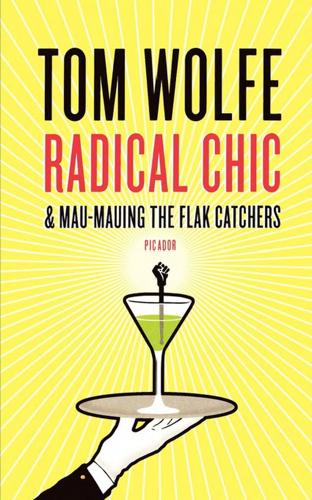
Radical Chic & Mau-Mauing the Flak Catchers
by
Tom Wolfe
Published 1 Jan 1970
In areas like Hunters Point boys didn't grow up looking up to the man who had a solid job working for some company or for the city, because there weren't enough people who had such jobs. It seemed like nobody was going to make it by working, so the king was the man who made out best by not working, by not sitting all day under the Man's bitch box. And Thorstein Veblen wrote that at the very bottom of the class system, down below the "working class" and the "honest poor," there was a "spurious aristocracy," a leisure class of bottom dogs devoted to luxury and aristocratic poses. And there you have him, the pimp. The pimp is the dude who wears the $150 Sly Stone-style vest and pants outfit from the haberdasheries on Polk and the $35 Lester Chambers-style four-inch-brim and black beaver fedora and the thin nylon socks with the vertical stripes and drives the customized sun-roof Eldorado with the Jaguar radiator cap.
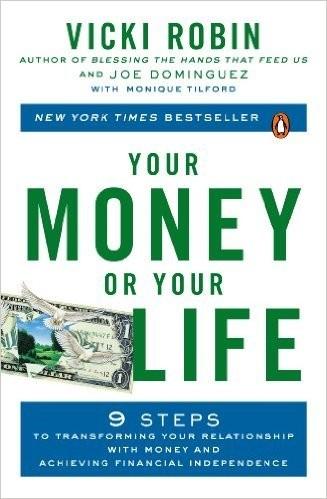
Your Money or Your Life: 9 Steps to Transforming Your Relationship With Money and Achieving Financial Independence: Revised and Updated for the 21st Century
by
Vicki Robin
,
Joe Dominguez
and
Monique Tilford
Published 31 Aug 1992
Frugality is about enjoyment, not penny-pinching ! Happy saving—or should we say happy frugaling . . . ONE SURE WAY TO SAVE MONEY Stop Trying to Impress Other People Other people are probably so busy trying to impress you that they will, at best, not notice your efforts. At worst, they will resent you for one-upping them. When Thorstein Veblen published The Theory of the Leisure Class in 1899, it didn’t make a big splash. But the term he coined, “conspicuous consumption,” has made it into the heart of our culture. In the foreword to Veblen’s book, social commentator and writer Stuart Chase summarized his thesis this way: People above the line of base subsistence, in this age and all earlier ages, do not use the surplus, which society has given them, primarily for useful purposes.
…
With ridership up, L.A.’s Metro raises fares and pushes for new tax revenue,” The Christian Science Monitor, July 18, 2008, http://www.csmonitor.com/2008/0718/p01s02-usgn.html. 2 Based on Ernest Callenbach, Living Cheaply with Style, 2nd edition (Berkeley, CA: Ronin Publishing Inc., 2000), page 167. 3 Thorstein Veblen, The Theory of the Leisure Class (NewYork: Modern Library, 1934), p. xiv. 4 “Big Spenders: As a Favored Pastime, Shopping Ranks High with Most Americans,” The Wall Street Journal, July 30, 1987. 5 Lewis H. Lapham, “An American Feast: You Are What You Buy,” The Wall Street Journal, May 13, 1988. 6 Avery Comarow, “Saving on Surgery by Going Abroad: Medical tourism or medical travel can produce discounts of 80 percent,” U.S.
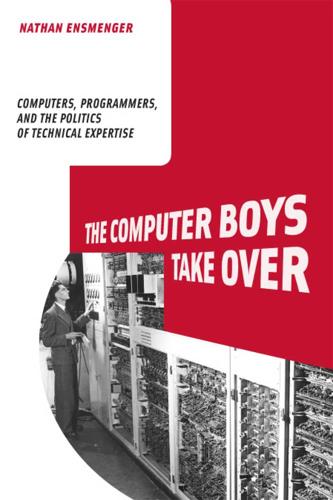
The Computer Boys Take Over: Computers, Programmers, and the Politics of Technical Expertise
by
Nathan L. Ensmenger
Published 31 Jul 2010
Like Watson and her librarians, most would have greeted the arrival of a computer-toting efficiency expert with fear and trepidation. Although Tracy imbued the character of Sumner with his trademark gruff-but-likable persona, such experts were generally seen as the harbingers of reorganization, mechanization, and what the economist Thorstein Veblen described as the “degradation of labor.”7 And as Thomas Haigh has suggested, it was no coincidence that Sumner was both an efficiency expert and a computer designer; many of the “systems men” of the early electronic computer era were efficiency experts turned computer consultants. In any case, the specter of computer-driven unemployment looms large over Desk Set, if only as the source of initial conflict between Sumner and Watson.
…
Colliers, no. 131 (1953), 58–63. 3. “Office Robots,” Fortune 45 (January 1952), 82–87, 112, 114, 116, 118. 4. Cheryl Knott Malone, “Imagining Information Retrieval in the Library: Desk Set in Historical Context,” IEEE Annals of the History of Computing 24, no. 3 (2002): 14–22. 5. Ibid. 6. Ibid. 7. Thorstein Veblen, The Theory of the Leisure Class (New York: McMillan, 1899). 8. Thomas Haigh, “The Chromium-Plated Tabulator: Institutionalizing an Electronic Revolution, 1954–1958,” IEEE Annals of the History of Computing 4, no. 23 (2001), 75–104. 9. James W. Cortada, Information Technology as Business History: Issues in the History and Management of Computers (Westport, CT: Greenwood Press, 1996). 10.
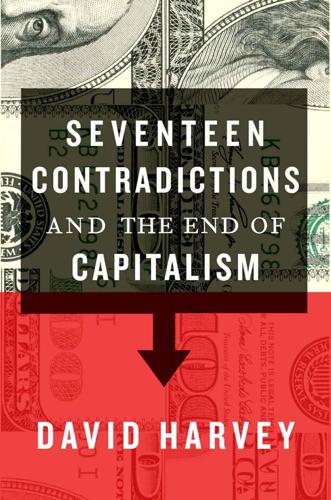
Seventeen Contradictions and the End of Capitalism
by
David Harvey
Published 3 Apr 2014
‘Economic rationality needed continually to raise the level of consumption without raising the rate of satisfaction; to push back the frontier of the sufficient, to maintain the impression that there could not be enough for everyone.’ The stratification of consumption, in which the consumerism of an affluent and parasitic leisure class called the shots and led the way, became crucial to ensuring the realisation of value. This is what Thorstein Veblen’s Theory of the Leisure Class, published back in 1899, so brilliantly exposed. But what we now know is that if such a class did not already exist it would have to be invented.8 An alienating consumerism is needed to solve the dilemma of a sagging effective demand produced by wage repressions and technologically induced unemployment for the mass of the workers.
…
See the debate in Immanuel Wallerstein, Randall Collins, Michael Mann, Georgi Derluguian and Craig Calhoun, Does Capitalism Have a Future?, Oxford, Oxford University Press, 2013. 3. André Gorz, Critique of Economic Reason, London, Verso, 1989, p. 22. 4. Ibid., p. 86. 5. Ibid., pp. 87–8. 6. Ibid., p. 100. 7. Ibid., p. 114. 8. Thorstein Veblen, The Theory of the Leisure Class, New York, Oxford University Press, 2009 edition. 9. Gorz, Critique of Economic Reason, p. 116. 10. Ibid., pp. 45–6. 11. Pope Francis, ‘Apostolic Exhortation Evangelii Gaudium of the Holy Father Francis to the Bishops, Clergy, Consecrated Persons and the Lay Faithful on the Proclamation of the Gospel in Today’s World’, National Catholic Register, 15 December 2013, paragraph 192. 12.

The Code of Capital: How the Law Creates Wealth and Inequality
by
Katharina Pistor
Published 27 May 2019
To fully appreciate the versatility of capital, we have to move beyond simple classifications and understand how capital obtains the qualities that distinguish it from other assets. Economists in the “old” institutionalist tradition have come close, but their contributions have largely been forgotten.41 Thorstein Veblen, for example, suggested that capital is an asset’s “income-yielding capacity.”42 And in his seminal book The Legal Foundations of Capitalism, John Commons defined capital as “the present value of expected beneficial behavior of other people.”43 In his account, law takes center stage in enhancing the reliability of others’ expected behavior.
…
Hodgson, How Economics Forgot History: The Problem of Historical Specificity in Social Science (London and New York: Routledge, 2001). Hodgson has kept much of their work alive. For an excellent summary of their contribution to the concept of capital, see chap. 7 of his book Conceptualizing Capitalism. 42. Thorstein Veblen, “On the Nature of Capital,” Quarterly Journal of Economics 22, no. 4 (1908):517–542. 43. John R. Commons, The Legal Foundations of Capitalism (New York: MacMillan, 1924), p. 28. 44. Commons based this analysis on the famous slaughterhouse cases. See ibid., pp. 13 and 21, where he argues that the “substance” of capitalism is “production for the use of others and acquisition for the use of self, such that the meaning of property and liberty spreads out from the expected uses of production and consumption to the expected transactions on the markets.” 45.
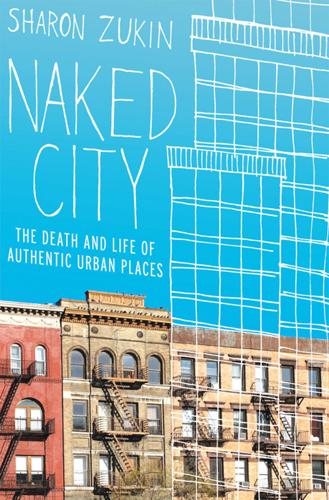
Naked City: The Death and Life of Authentic Urban Places
by
Sharon Zukin
Published 1 Dec 2009
By the same token, rundown nineteenth-century houses and small shops are appealing to many people with middle-class cultural tastes because they embody the aesthetic distinction of objects that are, on the one hand, simple, handmade tokens of craftsmanship and, on the other, living history. As Thorstein Veblen said more than a hundred years ago, these quirky marks of distinction are cast into relief by the sameness of mass production. And as the journalist David Brooks says today, the “gentry” don’t want “opulent, luxurious, … magnificent and extravagant,” they want “authentic, natural, warm, … honest, organic, … unique.”
…
Edmond Jephcott (New York: Urizen, 1978), pp. 22–29; Bourdieu, Distinction, p. 74; Theodor Adorno, The Jargon of Authenticity (1964), trans. Knut Tarnowski and Frederic Will (London: Routledge, 2003). 27. Jerrold Seigel, Bohemian Paris (New York: Viking, 1986); Robert Darnton, “Finding a Lost Prince of Bohemia,” New York Review of Books, April 3, 2008, pp. 44–48. 28. Thorstein Veblen, The Theory of the Leisure Class (1899; New York: Oxford University Press, 2008); David Brooks, Bobos in Paradise (New York: Simon and Schuster, 2000), p. 83, emphasis added. Also see David Ley, “Artists, Aestheticization and the Field of Gentrification,” Urban Studies 40 (2003): 2527–44; Mike Featherstone, “The Aestheticization of Everyday Life,” in Consumer Culture and Postmodernism (London: Sage, 1991), pp. 65–82. 29.

New Laws of Robotics: Defending Human Expertise in the Age of AI
by
Frank Pasquale
Published 14 May 2020
Alien intelligence also suggests the distance of global technology company bureaucrats from the real world consequences of their algorithms. These managers may release a service in a country whose language is unknown not merely to them, but also to anyone several reporting levels down. They follow in the worst tradition of what Thorstein Veblen called “absentee ownership”: distant controllers poorly understanding their business’s context and impact.91 When a massive firm buys a store thousands of miles away from its headquarters, it tends to assess its performance in crude terms, with little interest in the community in which the store is embedded.
…
Rachael Revesz, “Steve Bannon’s Data Firm in Talks for Lucrative White House Contracts,” Independent, November 23, 2016, http://www.independent.co.uk/news/world/americas/cambridge-analytica-steve-bannon-robert-rebekah-mercer-donald-trump-conflicts-of-interest-white-a7435536.html; Josh Feldman, “CIA Concluded Russia Intervened in Election to Help Trump, WaPo Reports,” Mediaite, December 9, 2016, http://www.mediaite.com/online/cia-concluded-russia-intervened-in-election-to-help-trump-wapo-reports/. 90. Will Oremus, “The Prose of the Machines,” Slate, July 14, 2014, http://www.slate.com/articles/technology/technology/2014/07/automated_insights_to_write_ap_earnings_reports_why_robots_can_t_take_journalists.html. 91. Thorstein Veblen, Absentee Ownership and Business Enterprise in Recent Times (London: George Allen & Unwin, 1923); Christopher Meek, Warner Woodworth, and W. Gibb Dyer, Managing by the Numbers: Absentee Ownership and the Decline of American Industry (New York: Addison-Wesley, 1988). 92. The problem is even worse overseas.

The Ascent of Money: A Financial History of the World
by
Niall Ferguson
Published 13 Nov 2007
Andrew Lo, director of the Massachusetts Institute of Technology’s Laboratory for Financial Engineering, is in the vanguard of an effort to re-conceptualize markets as adaptive systems.19 A long-run historical analysis of the development of financial services also suggests that evolutionary forces are present in the financial world as much as they are in the natural world.20 The notion that Darwinian processes may be at work in the economy is not new, of course. Evolutionary economics is in fact a well-established sub-discipline, which has had its own dedicated journal for the past sixteen years.21 Thorstein Veblen first posed the question ‘Why is Economics Not an Evolutionary Science?’ (implying that it really should be) as long ago as 1898.22 In a famous passage in his Capitalism, Socialism and Democracy, which could equally well apply to finance, Joseph Schumpeter characterized industrial capitalism as ‘an evolutionary process’: This evolutionary character . . . is not merely due to the fact that economic life goes on in a social and natural environment which changes and by its change alters the data of economic action; this fact is important and these changes (wars, revolutions and so on) often condition industrial change, but they are not its prime movers.
…
See also John Authers, ‘Quants Adapting to a Darwinian Analysis’, Financial Times, 19 May 2008. 20 The following is partly derived from Niall Ferguson and Oliver Wyman, The Evolution of Financial Services: Making Sense of the Past, Preparing for the Future (London / New York, 2007). 21 The Journal of Evolutionary Economics. Seminal works in the field are A. A. Alchian, ‘Uncertainty, Evolution and Economic Theory’, Journal of Political Economy, 58 (1950), pp. 211-22, and R. R. Nelson and S. G. Winter, An Evolutionary Theory of Economic Change (Cambridge, MA, 1982). 22 Thorstein Veblen, ‘Why is Economics Not an Evolutionary Science?’ Quarterly Journal of Economics, 12 (1898), pp. 373-97. 23 Joseph A. Schumpeter, Capitalism, Socialism and Democracy (London, 1987 [1943]), pp. 80-4. 24 Paul Ormerod, Why Most Things Fail: Evolution, Extinction and Economics (London, 2005), pp. 180ff. 25 Jonathan Guthrie, ‘How the Old Corporate Tortoise Wins the Race’, Financial Times, 15 February 2007. 26 Leslie Hannah, ‘Marshall’s “Trees” and the Global “Forest”: Were “Giant Redwoods” Different?’
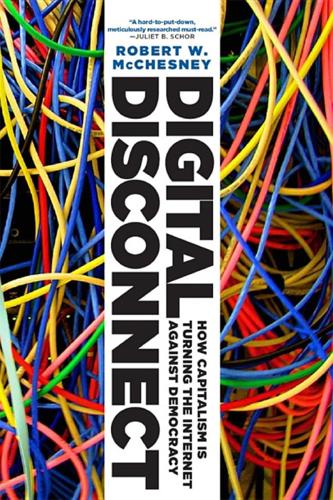
Digital Disconnect: How Capitalism Is Turning the Internet Against Democracy
by
Robert W. McChesney
Published 5 Mar 2013
Drake Bennett, “Commentary: The Inequality Delusion,” BloombergBusinessweek.com, Oct. 21, 2010; and Linda McQuaig and Neil Brooks, Billionaires’ Ball: Gluttony and Hubris in an Age of Epic Inequality (Boston: Beacon Press, 2012), 214–15. 37. Richard Wilkinson and Kate Pickett, The Spirit Level: Why Greater Equality Makes Societies Stronger (New York: Bloomsbury Press, 2009). 38. Stiglitz, Price of Inequality, 43. 39. Thorstein Veblen, arguably the most original and greatest American economist of all time, was the first to grasp this fundamental change in capitalism, though many, of course, have followed in his wake. See Thorstein Veblen, Absentee Ownership and Business Enterprise in Recent Times (New York: Augustus M. Kelley, 1964). The book was originally published in 1923 and was Veblen’s final work. 40. An industry is considered concentrated when the four largest companies account for at least 50 percent of its total shipment value.
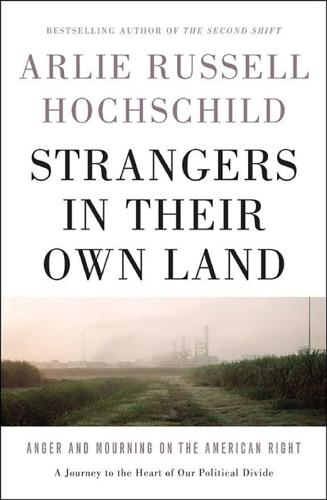
Strangers in Their Own Land: Anger and Mourning on the American Right
by
Arlie Russell Hochschild
Published 5 Sep 2016
Just as Berkeley hippies of the 1960s felt proud to be “above consumerism,” to demonstrate their higher ideals of love and world harmony—even though they often depended on the parental money they were “above”—so too Mike Schaff and other Tea Party advocates seemed to be saying, “I’m above the government and all its services” to show the world their higher ideals, even though they used a host of them. For everything else it is, the government also functions as a curious status-marking machine. The less you depend on it, the higher your status. As the sociologist Thorstein Veblen long ago observed, our distance from necessity tends to confer honor. I count all the reasons Mike disdained government. It displaced community. It took away individual freedom. It didn’t protect the citizenry. Its officials didn’t live like nuns. And the federal government was a more powerful, distant, untrustworthy version of the state government.
…
Claims of a causal relationship between nearness to industry and illness are usually hard to prove and are not accepted in court. 110but not dangerous for “children six and under” Louisiana Department of Health and Hospitals for the Agency for Toxic Substances and Disease Registry, Health Consultation: Calcasieu Estuary Sediment Sample Evaluation, Calcasieu Parish, Louisiana, EPA Facility ID: LA0002368173 (Baton Rouge, LA: Office of Public Health, 2005). 110“Analyses reported as non-detects were analyzed using method detection limits that were higher than the comparison values used as screening tools” Louisiana Department of Health and Hospitals for the Agency for Toxic Substances and Disease Registry, Public Health Assessment, Initial/Public Comment Release, Review of Data from the 2010 EPA Mossville Site Investigation (Baton Rouge, LA: Office of Public Health, 2013). 110the report was written by one set of state officials for another The protocol was prepared by the Louisiana Department of Health and Hospitals, which collaborated with the Louisiana Department of Environmental Quality, the Louisiana Department of Agriculture and Forestry, and the Louisiana Department of Wildlife and Fisheries. 110Discard “juices which contain the fat . . . to further reduce exposure” Louisiana Department of Health and Hospitals, Louisiana Department of Environmental Quality, Louisiana Department of Agriculture and Forestry, and Louisiana Department of Wildlife and Fisheries, Protocol for Issuing Public Health Advisories for Chemical Contaminants in Recreationally Caught Fish and Shellfish (Baton Rouge, LA: Office of Public Health, 2012), 24, http://www.dhh.louisiana.gov/assets/oph/Center-EH/envepi/fishadvisory/Documents/LA_Fish_Protocol_FINAL_Feb_2012_updated_links.pdf. 114our distance from necessity tends to confer honor In The Theory of the Leisure Class, Thorstein Veblen (New York: Macmillan, 1899) noted that honor, as human beings construct and imagine it, is based on their degree of detachment from economic need and usefulness. So thin women were admired the closer they came to starvation, and thus showed they didn’t fear it. In the realm of higher learning, Veblen argued, the more abstruse or useless the topic, the more honorific.

Finance and the Good Society
by
Robert J. Shiller
Published 1 Jan 2012
In much of western society, ever since ancient Greece and Rome, polygamy has been illegal or at least widely opposed. But even with those conventions, wealthy men nd it much easier to have a airs outside their marriages or to hire the most sought-after prostitutes. More concretely, the power that the rich obtain is the power to engage in what the economist Thorstein Veblen termed conspicuous consumption, which, when indulged in by men, is instinctively recognized by the general public as a possible ploy to attract the opposite sex—even if the plan is never consummated. Underlying the desire for wealth is a sexual and social-status impulse. This applies as well to women, whose desire for wealth may arise from somewhat different, though equally strong, motives.
…
As one eighteenth-century observer sized up these laws, “they are null, because luxury employs itself upon objects which the laws have not foreseen, and could not foresee.”9 The laws’ details were commonly ridiculed, and in modern times they are thought to be inconsistent with individual freedoms. They did, nevertheless, reappear again and again for thousands of years, re ecting the persistence of public disgust with the extravagance of the rich. There is an economic theory that would seem to justify something akin to sumptuary laws or taxes. The theory was described by Thorstein Veblen in his 1899 book The Theory of the Leisure Class and the economic part of the theory was expanded by George Akerlof and other economic theorists.10 Many people spend lavishly on consumption that they do not really even enjoy merely to signal to others their status—a practice called positional consumption because its value to the consumer depends on how it establishes his or her position relative to others.
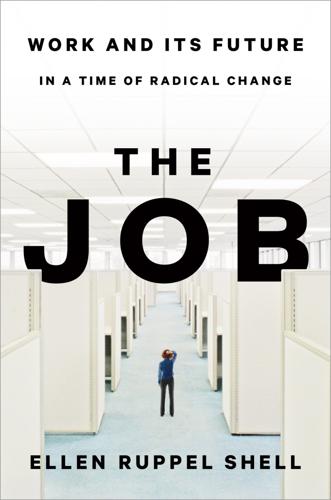
The Job: The Future of Work in the Modern Era
by
Ellen Ruppel Shell
Published 22 Oct 2018
In earlier eras slavish hours were most closely associated not with elites but with workers in low-paid jobs: clerks, factory workers, and farmhands who had little choice in the matter. The wealthy pitied the “striving classes” and relished and took pride in their leisure. Why break a sweat when you have everything you need and plenty of what you desire? As economist Thorstein Veblen wrote in The Theory of the Leisure Class, “Conspicuous abstention from labor…becomes the conventional mark of superior pecuniary achievement.” It’s hard to know just when the tables turned—that is, when working long hours became a signal of high status and power. It was almost certainly linked to the post–World War II economic boom and a rising consumerism that inclined workers to swap leisure for extra cash.
…
demanding jobs that give us no agency Erik Gonzalez-Mulé and Bethany Cockburn, “Worked to Death: The Relationships of Job Demands and Job Control with Mortality,” Personnel Psychology 70, no. 1 (2017): 73–112, http://dx.doi.org/doi:10.1111/peps.12206. “their superiors approved highly” William Hollingsworth Whyte, “How Hard Do Executives Work?,” Fortune, January 1954. “Conspicuous abstention from labor” Thorstein Veblen, The Theory of the Leisure Class (New Brunswick, NJ: Transaction, 1992), 43. “he cannot distinguish between work and the rest of his life” William Hollingsworth Whyte, The Organization Man (Philadelphia: University of Pennsylvania Press, 2002). in the case of white-collar workers David R.

Bourgeois Dignity: Why Economics Can't Explain the Modern World
by
Deirdre N. McCloskey
Published 15 Nov 2011
Samuelsonian thought describes modern economists of the so-called mainstream—modeling exclusively with “constrained maximization,” in which the only virtue acknowledged is prudence.9 Not every worthy economist is Samuelsonian. An embattled countersquad of economic thinkers, with quite varied politics, has in the twentieth century included Joseph Schumpeter, Ludwig von Mises, Friedrich Hayek, Thorstein Veblen, John R. Commons, John Maynard Keynes, John H. Clapham, Frank Knight, Eli Heckscher, Gunnar Myrdal, Antonio Gramsci, Luigi Einaudi, Joan Robinson, Kenneth Boulding, Ronald Coase, Paul Sweezy, Alexander Gerschenkron, John Kenneth Galbraith, George Shackle, Robert Heilbroner, Theodore Schultz, Albert Hirschman, Bert Hoselitz, Bruno Leoni, Noel Butlin, James Buchanan, Thomas Schelling, Robert Fogel, Amartya Sen, Elinor Ostrom, Israel Kirzner, and Vernon Smith.
…
Thus Gurcharan Das shows that the eldest of the Kauruvas in the Mahabharata, Duryodhana, is a slave to the vice of envy about his cousin Yudhishthira. The envy could be represented easily in individualistic, Max U form as “Duryodhana’s utility is a function of the worldly consumption of Duryodhana minus that of Yudhishthira.”11 Some economists, from Thorstein Veblen through Fred Hirsch (1977) down to Robert Frank (2005), have argued that “positional goods” are prevalent, making for an arms race in consumption that we must suppress by government action. But it seems dubious that social position bulks so large as a motive for consumption as to justify such use of violence-backed regulation.
…
And it was for the good of poor people that they should, because otherwise the surviving “betterments” are boondoggles for well-connected chaps, or monuments for the already rich. They are Baconian research projects of doubtful worth, destructive creation rather than creative destruction. That is what is wrong with Thorstein Veblen’s notion that engineers, not the price system, should rule. Engineers are full of bad ideas too, such as high-speed trains constructed at great expense on little-used lines—unless central-planning rationalism is indeed the ticket, which outside of wartime it usually is not. Trade-tested cooperation, competition, and conservation in the right mix is the ticket for rapid economic evolution * The economic and historical question, confronted here and in Bourgeois Dignity, is Why in Britain and why then?

The True and Only Heaven: Progress and Its Critics
by
Christopher Lasch
Published 16 Sep 1991
Matthew Arnold's familiar phrase summed up this particular conception of culture, which many progressives (unlike Arnold, who thought the "best" could be appreciated only by the few) now proposed to universalize in the expectation that this would not require any appreciable alteration of its content. The second position, advanced by Thorstein Veblen, Frank Lloyd Wright, John Dewey, Randolph Bourne, Lewis Mumford, Van Wyck Brooks, and Waldo Frank, among others, rested on a very different idea of both culture and democracy. These writers distrusted the missionary impulse they detected in the progressives' program of cultural uplift. Instead of popularizing leisure-class values, they advocated a new set of values based on the dignity of labor.
…
Three distinct traditions contributed to right-wing theorizing, and it was the right's inability to disentangle them, in part, that explained why its version of the new class turned out to be such a "muddled concept," in the words of Daniel Bell. A progressive tradition, which could be traced all the way back to Saint-Simon, considered the technical intelligentsia a class destined to play an increasingly important role in modern society by virtue of its indispensability. In the United States, Thorstein Veblen was probably the most influential exponent of this view. Veblen distinguished between the "pecuniary" culture of the leisure class and the scientific, critical, and "iconoclastic" culture of the engineers. He ridiculed the idea that the workers, reduced to automata by the modern division of labor, knew enough to expropriate and operate the industrial plant, but he had more faith in professional and managerial personnel, who valued efficiency for its own sake and cared more about industrial growth and productivity than about profits.
…
William Schneider, "JFK's Children: The Class of '74," Atlantic, March 1989, -567- 35-58, is the source of most of my information about neoliberalism, along with Paul Tsongas's uninspiring book, The Road from Here (1981), which was intended to serve as the movement's manifesto. The idea of the "new class" can be traced, in its progressive version, in the writings of exponents like Walter Lippmann, Preface to Politics (1914) and Drift and Mastery (1914); Thorstein Veblen, The Engineers and the Price System (1921); Adolph A. Berle and Gardiner C. Means, The Modern Corporation and Private Property (1932); George Soule, The ComingAmerican Revolution (1934); John Kenneth Galbraith, The New Industrial State (1967); and David Bazelon, Power in America: The Politics of the New Class (1967).
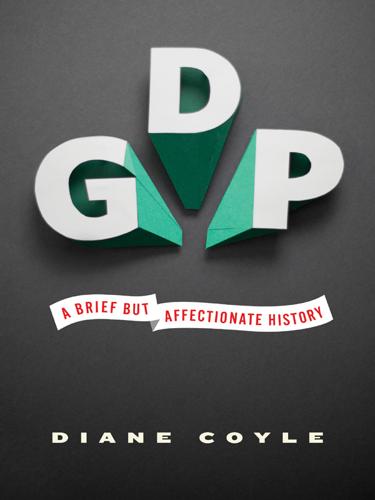
GDP: A Brief but Affectionate History
by
Diane Coyle
Published 23 Feb 2014
Consumerism is an addiction too. Psychology offers insights into the rat race and consumerism. The experimental evidence is that most people care more about status and therefore their relative income than they do about the absolute level of income. The “conspicuous consumption” first named by Thorstein Veblen is a kind of arms race of status, and one that the excesses of corporate pay have let rip in the past quarter century. What’s more, the satisfaction we get from extra income and purchases wears off quickly, leaving us, like Edmund in the story, hungry for another fix. The evocative technical term for this is the hedonic treadmill.

The Electric Kool-Aid Acid Test
by
Tom Wolfe
Published 1 Jan 1968
It was a cluster of two-room cottages with weathery wood shingles in an oak forest, only not just amid trees and greenery, but amid vines, honeysuckle tendrils, all buds and shoots and swooping tendrils and twitterings like the best of Arthur Rackham and Honey Bear. Not only that, it had true cultural cachet. Thorstein Veblen had lived there. So had two Nobel Prize winners everybody knew about though the names escaped them. The cottages rented for just $60 a month. Getting into Perry Lane was like getting into a club. Everybody who lived there had known somebody else who lived there, or they would never have gotten in, and naturally they got to know each other very closely too, and there was always something of an atmosphere of communal living.
…
A developer bought most of Perry Lane and was going to tear down the cottages and put up modern houses and the bulldozers were coming. The papers turned up to write about the last night on Perry Lane, noble old Perry Lane, and had the old cliché at the ready, End of an Era, expecting to find some deep-thinking latter-day Thorstein Veblen intellectuals on hand with sonorous bitter statements about this machine civilization devouring its own past. Instead, there were some kind of nuts out here. They were up in a tree lying on a mattress, all high as coons, and they kept offering everybody, all the reporters and photographers, some kind of venison chili, but there was something about the whole setup— and when it came time for the sentimental bitter statement, well, instead, this big guy Kesey dragged a piano out of his house and they all set about axing the hell out of it and burning it up, calling it "the oldest living thing on Perry Lane," only they were giggling and yahooing about it, high as coons, in some weird way, all of them, hard-grabbing off the stars, and it was hard as hell to make the End of an Era story come out right in the papers, with nothing but this kind of freaking Olsen & Johnson material to work with, but they managed to go back with the story they came with, End of an Era, the cliché intact, if they could only blot out the cries in their ears of Ve-ni-son Chi-li— —and none of them would have understood it, anyway, even if someone had told them what was happening.
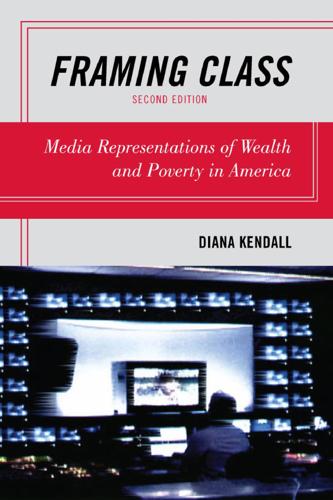
Framing Class: Media Representations of Wealth and Poverty in America
by
Diana Elizabeth Kendall
Published 27 Jul 2005
According to one journalist’s account of power lunches in New York’s finest restaurants, “[Prices] can act as a kind of velvet rope to keep out tourists and people paying their own way, allowing a big hitter to tuck in a napkin secure in the belief that no one who works for him can afford to walk in the door.”81 Price-tag framing provides “outsiders” with information about what luxury items cost, but it also establishes the notion that people in other classes are categorically excluded from many elite settings by their inability or unwillingness to pay such prices. Journalists employing price-tag framing in their stories typically use the concept of conspicuous consumption,82 formulated by economist Thorstein Veblen (who wrote at the turn of the twentieth century), to describe the excessive and extravagant purchases of the wealthy. According to Veblen, conspicuous consumption is one of many signs of the superfluous lifestyle of the rich. Although some contemporary media reports condemn them, others glorify the excessive spending and “gracious lifestyles” of the wealthy in order to gain media audiences and advertising revenue.
…
Power Lunch Menu,” The Huffington Post, November 30, 2009, http://www.huffingtonpost.com/2009/11/30/ no-recession-special-on-t_n_373681.html (accessed June 27, 2010). 80. Jared Paventi, “Expensive New York Restaurants,” GolfLink, http://www .golflink.com/list_28775_expensive-new-york-restaurants.html (accessed June 27, 2010). 81. David Carr, “The Powering Up of the Power Lunch,” New York Times, December 10, 2003, D4. 82. Thorstein Veblen, The Theory of the Leisure Class, intro. Robert Lekachman (New York: Penguin, 1994 [1899]). 83. Jan Parr and Ted Shen, “The Richest Chicagoans: Who’s Up, Who’s Down?” Chicago (February 2002): 49. 84. “Most Expensive Gated Communities in America,” Forbes.com, 2006, http:// www.forbes.com/maserati/cx_bs_1114home.html (accessed June 10, 2010). 85.
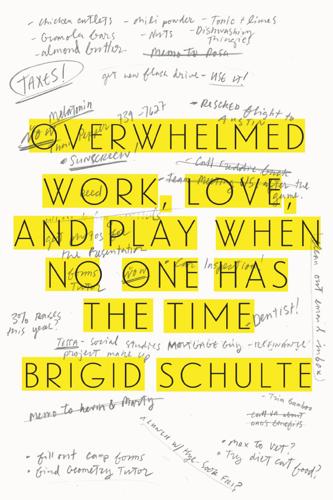
Overwhelmed: Work, Love, and Play When No One Has the Time
by
Brigid Schulte
Published 11 Mar 2014
Women,” he muses, looking up at the crystal chandelier, stroking his beard and frowning, appearing stumped by the question. Historically, he begins, women’s leisure—the ladies who lunch—was purely a reflection of the status of the men around them. “Women,” he says finally, “have always rather been in the laboring class.” Gershuny points me to the seminal work on leisure by Thorstein Veblen, who, in 1899, wrote The Theory of the Leisure Class. When I later got around to reading it, there it is, bam, right on page 2: “Manual labour, industry, whatever has to do directly with the everyday work of getting a livelihood, is the exclusive occupation of the inferior class,” Veblen wrote.
…
But there’s a reason why play is hard for women. Nadia and Sara are not just taking on America’s worship of work, productivity, achievement, speed, and busyness. The two women are pushing against the freight of human history that can be boiled down into three powerful words: Women. Don’t. Play. Remember Thorstein Veblen’s influential Theory of the Leisure Class? He dispensed with women on page 2, who, as part of the “inferior” class since at least barbarian times, were supposed to do the drudge work of society. Think of the Bible and the “good” wife of Proverbs 31: “She rises while it is yet night and provides food for her household … Her lamp does not go out … She looks well to the ways of her household, and does not eat the bread of idleness.”

Twitter and Tear Gas: The Power and Fragility of Networked Protest
by
Zeynep Tufekci
Published 14 May 2017
Should we confront a liar? We also try to signal our intentions and our capabilities. Dressing up for an interview signals being eager for the job; education and diplomas, we hope, signal our capabilities to potential employers.17 Signals are also not limited to aggressive situations. The sociologist Thorstein Veblen’s theory of “conspicuous consumption”—the idea that we buy expensive items just to show them off, not to use them—is a form of signaling theory.18 In class, I sometimes ask my college students whether, instead of expensive diamond engagement rings, they would be satisfied with chemically identical lab diamonds that possess every quality of diamonds (they are not fake diamonds, just ones created in labs that might have fewer flaws than mined ones), or whether they would consider keeping the money as a couple to use as a down payment for their first house.
…
Huttegger, “Between Cheap and Costly Signals: The Evolution of Partially Honest Communication,” Proceedings of the Royal Society B: Biological Sciences 280, no. 1750 (2012). 17. Judith Donath, “Signaling Identity,” 2007, http://smg.media.mit.edu/papers/Donath/SignalsTruthDesign/SignalingAbstracts.1.pdf. 18. Thorstein Veblen, The Theory of the Leisure Class (New York: Penguin Books, 1994). 19. Alice E. Marwick, Status Update: Celebrity, Publicity, and Branding in the Social Media Age (New Haven, Conn.: Yale University Press, 2013); Judith Donath, The Social Machine: Designs for Living Online (Cambridge, Mass.: MIT Press, 2014); and Judith Donath, “Signals in Social Supernets,” Journal of Computer-Mediated Communication 13 (2007): 231−51. 20.

Adam Smith: Father of Economics
by
Jesse Norman
Published 30 Jun 2018
In identifying the man who misses what matters in life by questing after ‘trinkets of frivolous utility’, Smith shows his awareness that markets can be driven by human passions as well as by human calculation. Today we might describe some such items as ‘Veblen goods’. Named after the great Norwegian-American economist Thorstein Veblen, Veblen goods are those of ‘conspicuous consumption’, for which demand does not lessen when the price rises, as the standard theory would predict. Instead, demand for the good increases, as consumers see the price rise as a signal of relative scarcity or status, making the good still more desirable.
…
I am very grateful to Tim Besley for this point; see especially his ‘The New Political Economy’, Economic Journal, 117.524, 2007. See also Roman Frydman and Michael D. Goldberg, Imperfect Knowledge Economics, Princeton University Press 2007 Wisdom of crowds: cf. James Surowiecki, The Wisdom of Crowds, Doubleday Books 2004 Veblen goods: see Thorstein Veblen, The Theory of the Leisure Class: An Economic Study in the Evolution of Institutions, Macmillan 1899. In his essay on the imitative arts (in EPS) Smith memorably analyses the phenomenon of topiary in Veblenian terms: ‘It was some years ago the fashion to ornament a garden with yew and holly trees, clipped into the artificial shapes of pyramids, and columns, and vases, and obelisks.
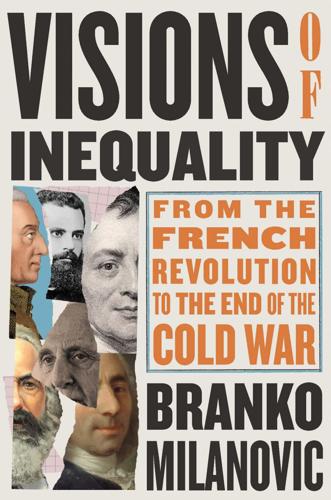
Visions of Inequality: From the French Revolution to the End of the Cold War
by
Branko Milanovic
Published 9 Oct 2023
It does not describe the author of The Theory of Moral Sentiments. 43 In The Theory of Moral Sentiments, the rich are derided for their behavior (for the “fatuity of wealth accumulation”) and for their spending patterns, but their status and wealth are not questioned. It is a perspective similar to Thorstein Veblen’s in The Theory of the Leisure Class (written a century and a half after The Theory of Moral Sentiments ), as both make fun of those who are wealthier, more fortunate, and higher in social hierarchy but never deny their right to be there—and never envisage a situation where no such hierarchy exists. 44 Despite this mocking-of-the-rich affect (or perhaps because of it, as it dodges any deeper inquiry into the origins of rich people’s power), Smith often appears in The Theory of Moral Sentiments to be not merely conservative but outright reactionary.
…
(As has been pointed out many times, The Theory of Moral Sentiments was revised by Smith after The Wealth of Nations had already been published, so there cannot be a “Young Smith” and an “Old Smith” in the way that there is a “Young Marx” and an “Old Marx.”) Rather, it arises because the two books deal with different topics and reflect the different social positions we have in our lives. 44 . Thorstein Veblen, The Theory of the Leisure Class: An Economic Study of Institutions, intro. by C. Wright Mills (New York: Macmillan, Mentor Book, 1953). 45 . Smith, Wealth of Nations, Book III, ch. 2. 46 . Smith, Wealth of Nations, Book III, ch. 2. 47 . Smith, Wealth of Nations, Book IV, ch. 5, 682–683. 48 .
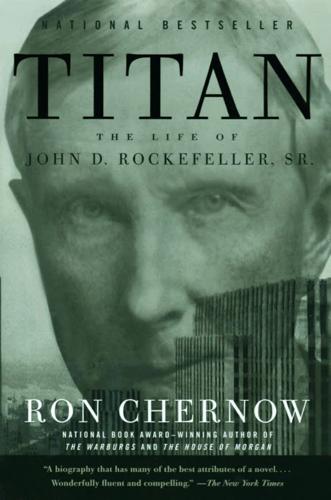
Titan: The Life of John D. Rockefeller, Sr.
by
Ron Chernow
Published 1 Jan 1997
As John Jr. remembered, “Our interests centered in the house; our friends came there almost wholly. We went rarely, practically none at all, to neighbors’ houses.”14 John Jr. hinted that the children brought to visit weren’t real companions and were mostly window dressing to gratify his parents. “We had no childhood friends, no school friends.”15 It was a far cry from Thorstein Veblen’s image of the spoiled leisure class. Convinced that struggle was the crucible of character, Rockefeller faced a delicate task in raising his children. He wanted to accumulate wealth while inculcating in them the values of his threadbare boyhood. The first step in saving them from extravagance was keeping them ignorant of their father’s affluence.
…
This nationwide talent search netted nine college presidents for the first faculty. Harper signed up John Dewey and George Herbert Mead for the philosophy department and enticed novelist Robert Herrick to join the English department, while Albion Small initiated America’s first graduate department in sociology. Another eminent recruit, economist Thorstein Veblen, came to regard Harper as the educational counterpart of capitalists such as Rockefeller and satirized him as a captain of erudition, one of a new species of empire builders in higher education. However inspired he was by Harper, Rockefeller felt sorely beset by his extravagant spending, and their relations began to fray.
…
William chided his brother for sponsoring the school: “You are getting together a lot of scribblers, a crowd of Socialists who won’t do any good.” 83 Rockefeller wrestled with the issue but believed, on balance, that “while scribblers of the worthless kind brought poison with their ink to the minds of the people, yet multitudes of others come out of these institutions of learning to strengthen the good among us. Let us so hope.”84 The University of Chicago was scarcely immune to the radical currents on campus. In 1899, while at Chicago, Thorstein Veblen published The Theory of the Leisure Class, which portrayed the new captains of industry as brutal troglodytes and exposed the primitive impulses lurking behind their gaudy consumption habits. The best-publicized controversy about Rockefeller’s role at Chicago involved the dismissal in 1895 of a young political economist, Edward Bemis, who advocated municipal gas ownership and attacked the Standard Oil–controlled United Gas Improvement Company.

Where We Are: The State of Britain Now
by
Roger Scruton
Published 16 Nov 2017
The anonymity of the global economy goes hand in hand with a certain spectral quality – a sense that the agents behind every transaction are not creatures of flesh and blood who live in communities but discarnate corporations, who take no real responsibility for producing what they sell but who merely stick their brand on it, so claiming a rent on producer and consumer alike. It is difficult to articulate this complaint, though it has been made, with varying degrees of sarcasm, by a century of writers from Thorstein Veblen to Naomi Klein – the argument advancing step by step in order to accommodate the latest move towards anonymity. This economy is not dislocated, as the nineteenth-century socialists imagined, but unlocated. Yet it is for this very reason that it troubles us. Economic activity has become detached from the building of communities.

One Less Car: Bicycling and the Politics of Automobility
by
Zack Furness
and
Zachary Mooradian Furness
Published 28 Mar 2010
Theodor W. adorno, “veblen’s attack on Culture,” in Prisms (Cambridge, Ma: MiT press, 1983), 75–76 (originally published in Studies in Philosophy and Social Science 9, no. 3 [1941]: 389–413). John Cunningham Wood offers a slightly different translation of adorno’s phrase, calling it “indirect utility” instead of “mediated utility” in Thorstein Veblen: Critical Assessments (london: routledge, 1993), 4. Chambers raises a similar point about the cachet of (sub)cultural practices in “Symbolic Equipment and the Objects of leisure images.” For example, see Michael Martin and Gabe Morford, Mash SF (Mash Transit productions, 2007); David rowe, Fast Friday (infinite Quest productions, 2008).
…
Car Mania: A Critical History of Transport. 1st English ed. london: pluto press, 1996. Wollen, peter, and Joe Kerr, eds. Autopia: Cars and Culture. london: reaktion Books, 2002. “Women in the automotive industry.” Catalyst (March 2009). available at http://www. catalyst.org/publication/235/women-in-the-automotive-industry. Wood, John Cunningham. Thorstein Veblen: Critical Assessments. london: routledge, 1993. Work, George, and laurence Malone. “Bicycles, Development, and the Third World.” Environment 25, no. 1 (1983): 41. World Bank. “China Transport Sector Study.” Washington, DC, 1985. ———. “a Decade of action in Transport: an Evaluation of World Bank assistance to the Transport Sector, 1995–2005.”

How to Change the World: Reflections on Marx and Marxism
by
Eric Hobsbawm
Published 5 Sep 2011
Nor, especially in the USA, should we underestimate the importance of a mass of immigrants from Germany, tsarist Russia and elsewhere, who often brought Marxist-influenced ideologies with them to the new world as part of their intellectual baggage.11 And nor should we underestimate the movement of resistance to ‘big business’ during this period of acute social tension and ferment in the USA, which made a number of radical thinkers receptive to, or at least interested in socialist critiques of capitalism. One thinks not only of Thorstein Veblen but of progressive, centrally placed economists like Richard Ely (1854–1943) who ‘probably exerted a greater influence upon American economics during its vital formative period than any other individual’.12 For these reasons the USA, though developing little independent Marxist 220 The Influence of Marxism 1880–1914 thinking itself, became, rather surprisingly, a significant centre for the diffusion of Marxist writings and influence.
…
Some Marxist influence, or stimulus, may perhaps be detected in the ‘institutional’ school or current of American economics then popular in the USA where, as already mentioned, the strong sympathy of many economists for ‘progressivism’ and social reform inclined them to look favourably on economic theories critical of big business (R.T. Ely, the Wisconsin school; above all Thorstein Veblen). Economics as a discipline separate from the rest of the social sciences hardly existed in Germany, where the influence of the ‘historical school’ and the concept of the Staatswissenschaften (best translated as ‘policy sciences’) was dominant. The impact of Marxism, i.e. of the massive fact of German social democracy, on economics cannot be treated in isolation.

All the Money in the World
by
Peter W. Bernstein
Published 17 Dec 2008
So these days the 400 are spending a much smaller percentage of their wealth living extremely well than a quarter of a century ago. * * * As Ira Rennert’s villa by the sea signals, the past two decades have been an era of extravagant spending by certain members of America’s superrich, a period that mimics earlier epochs of flamboyant wealth in American history. The economist and sociologist Thorstein Veblen coined the phrase conspicuous consumption to describe this type of spending. As he wrote in his 1899 book, The Theory of the Leisure Class, “To gain and to hold the esteem11 of men it is not sufficient merely to hold wealth and power. The wealth and power must be put into evidence.” Then, as now, houses were one common extravagance.
…
In 1998 Rennert tried: Munk, “Greenwich’s Outrageous Fortunes.” 9. Neighbors have called the house “arrogant”: Julia C. Mead, “At Home in Versailles on the Atlantic,” New York Times, July 4, 2004. 10. The writer Kurt Vonnegut: Ibid. Vonnegut stayed put. He died on April 11, 2007. 11. “To gain and to hold the esteem”: Thorstein Veblen, quoted in James W. Michaels, “The Mass-Market Rich,” Forbes, Oct. 9, 2000. 12. In Veblen’s day: See Arthur T. Vanderbilt II, Fortune’s Children: The Fall of the House of Vanderbilt (New York: William Morrow, 1989), for more details on the period. 13. In 2007 timber baron Tim Blixseth: Forbes.com. 14.
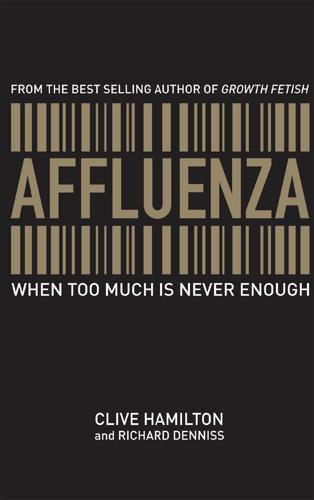
Affluenza: When Too Much Is Never Enough
by
Clive Hamilton
and
Richard Denniss
Published 31 May 2005
Luxury fever Popular folklore has always held a fascination with the profligate lifestyles of the monied classes. Sociologists have analysed how extravagance serves as a device whereby the rich differentiate themselves from the mass of the population. One of the earliest commentators on this was Thorstein Veblen, who coined the phrase ‘conspicuous consumption’ in his 1899 book The Theory of the Leisure Class. For their part, the masses watch the behaviour of the rich with a mixture of awe, envy and scorn. This attraction is the reason for the continuing popularity of magazines, newspapers and, more recently, television shows that expose the lifestyles of the rich and famous.
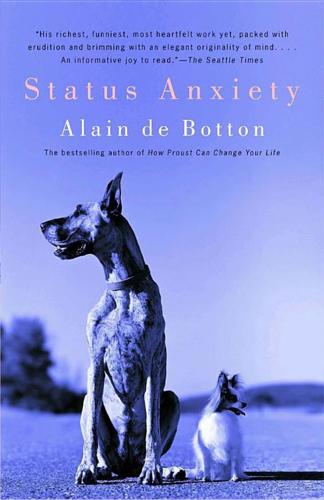
Status Anxiety
by
Alain de Botton
Published 1 Jan 2004
Furthermore, the political perspective would add, as an ideal, it is occasionally simpleminded, at times unfair and always subject to change. No aspect of this peculiar modern ideal has come under greater scrutiny than the associations it constructs between, on the one hand, wealth and virtue and, on the other, poverty and moral dubiousness. In The Theory of the Leisure Class (1899), Thorstein Veblen considered the emergence of financial worth, in the early nineteenth century, as the central and often sole criterion employed in commercial societies’evaluation of their members:“[Wealth has become] the conventional basis of esteem. Its possession has become necessary in order to have any reputable standing in the community.

Company: A Short History of a Revolutionary Idea
by
John Micklethwait
and
Adrian Wooldridge
Published 4 Mar 2003
It was their jobs that lured people from all over the world to America’s big cities; their abuses that hastened the development of labor unions and antitrust law; their indifference to the environment that meant that sunlight could hardly penetrate the smoky air of Pittsburgh and Chicago; and their capacity to produce wealth that posed questions about inequality and meritocracy. The robber barons excited awe and disgust in equal measure for their “conspicuous consumption” (a term that Thorstein Veblen first coined to describe their spending habits), in the form of mansions, parties, and art collections. Even the parsimonious Andrew Carnegie, whose writings included The Advantage of Poverty, owned a Scottish castle, Skibo, with a staff of eighty-two and a New York mansion with sixty-four rooms.5 FIRST CAME THE RAILROADS Why did these extraordinary organizations take off when they did?
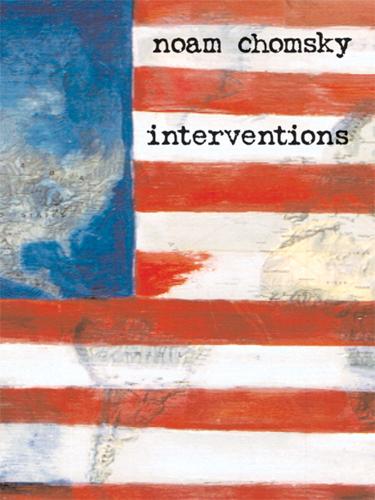
Interventions
by
Noam Chomsky
A further reason is that Social Security is of little value for the rich though it is crucial for survival for working people, the poor, their dependents, and the disabled. And as a government program, it has such low administrative costs that it offers nothing to financial institutions. It benefits only the “underlying population,” not the “substantial citizens,” to borrow Thorstein Veblen’s acid terminology. The medical system, however, works very well for the people who matter. Health care is effectively rationed by wealth, and enormous profits flow to private power thanks to management practices geared to profit, not health care. The underlying population can be treated with lectures on responsibility.
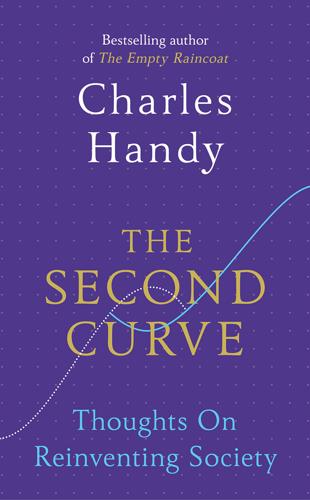
The Second Curve: Thoughts on Reinventing Society
by
Charles Handy
Published 12 Mar 2015
I am ashamed now to think that I had no idea of how I was going to earn that money or how I wanted to live, other than driving around in an absurd car, but I was no different from some of the young people I come across today – money as the presumed answer to life. The trouble is that money remains the one thing of which, it seems, you can never have enough, as the escalating (and surely unnecessary) rewards of senior executives seem to prove. Even when you have met all your needs and wants there are always the Veblen goods, so called after Thorstein Veblen’s theory of comparative goods, those aspects of conspicuous expenditure that are effectively rationed, like the membership of elite clubs, the ownership of property in an exclusive zone, or being in the top ten of some league table of corporate pay. Money is also, for some, a scorecard, unrelated to anything it can buy except a place on the Forbes List of billionaires.

Willful: How We Choose What We Do
by
Richard Robb
Published 12 Nov 2019
Before the mathematization of economics in the mid-twentieth century, it was not radical for economists to recognize that people care about the process as well as results.1 By this, the economists didn’t mean some version of what we now call cognitive bias—the manufacturer whom Alfred Marshall described in Chapter 2 as motivated more by the pursuit of victory than increasing his wealth is not making a mistake.2 Thorstein Veblen pointed out that rational choice (or “marginal utility theory,” as he called it) “offers no theory of a movement of any kind, being occupied with the adjustment of values to a given situation … For all their use of the term ‘dynamic,’ neither Mr. [John Bates] Clark nor any of his associates in this line of research have yet contributed anything at all appreciable to a theory of genesis, growth, sequence, change, process, or the like, in economic life.”3 “Genesis, growth, sequence, change, [and] process” are not minor matters; they are fundamental to our experience.

The Aristocracy of Talent: How Meritocracy Made the Modern World
by
Adrian Wooldridge
Published 2 Jun 2021
At the same time, their sense of themselves as a special people with a unique relationship with God – a sense that has been massively reinforced by millennia of persecution – has given them the self-confidence, first, to keep themselves to themselves, producing a powerful collective identity, and second, to succeed in their various callings. The two sides of Jewish identity have driven them to make intellectual breakthroughs. Thorstein Veblen argued that the archetypal Jewish intellectual ‘becomes a disturber of the intellectual peace, but only at the cost of becoming an intellectual wayfaring man, a wanderer in the intellectual no-man’s-land, seeking another place to rest, further along the road, somewhere over the horizon’.6 The argument of this chapter is that the Jewish people played a prominent role in developing the meritocratic idea.
…
THE CHOSEN PEOPLE 1 George Gilder, The Israel Test (New York, Richard Vigilante Books, 2009), p. 33 2 David Brooks, ‘The Tel Aviv Cluster’, The New York Times, 12 January 2010 3 Yuri Slezkine, The Jewish Century (Princeton, Princeton University Press, 2004), p. 225 4 Ibid., p. 52 5 Ibid., p. 53 6 Thorstein Veblen, ‘The Intellectual Pre-eminence of Jews in Modern Europe’, Political Science Quarterly 34 (1) (March 1919), p. 39 7 Hans Eysenck, Know Your Own IQ (London, Penguin, 1962) and Check Your Own IQ (London, Penguin, 1966); Nathan Glazer, Affirmative Discrimination: Ethnic Inequality and Public Policy (Cambridge, Mass., Harvard University Press, 1987) 8 Slezkine, The Jewish Century, p. 1 9 Paul Johnson, A History of the Jews (London, Weidenfeld Nicolson, 1987), p. 287 10 Ibid., p. 190 11 Norman Lebrecht, Genius and Anxiety: How Jews Changed the World 1847–1947 (London, Oneworld, 2019), p. 186 12 Werner Sombart, The Jews and Modern Capitalism (London, T.
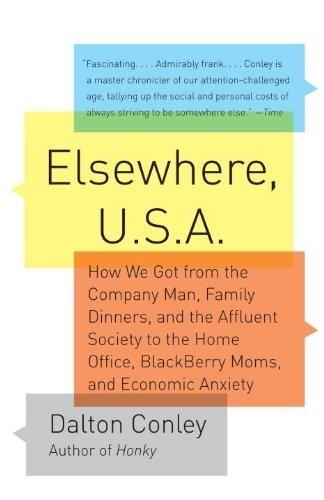
Elsewhere, U.S.A: How We Got From the Company Man, Family Dinners, and the Affluent Society to the Home Office, BlackBerry Moms,and Economic Anxiety
by
Dalton Conley
Published 27 Dec 2008
These robber barons of the Gilded Age conveyed a public image of heft—befitting their chosen sectors—as well as grumpiness. (J. P. Morgan would assault anyone who dared try to take his photo on account of suffering from the skin disease rosacea; and he claimed that he “owed the public nothing.”) The nineteenth-century economist Thorstein Veblen wrote that these businessmen were akin to barbarians who gained their riches by raping and pillaging rather than by producing it themselves. When it came time for them to leave their mark, their philanthropy became associated with colossal buildings such as Rockefeller Center, the New York Public Library, and Carnegie Hall.

Pity the Billionaire: The Unexpected Resurgence of the American Right
by
Thomas Frank
Published 16 Aug 2011
The Aggs, Oggs, and Acks: Dagny Taggart, Judge Narragansett, Owen Kellogg, Hugh Akston. 3. The Hard Aitches: Richard Halley, Lawrence Hammond, Dr. Hendricks. * At one point in the novel, Rand has John Galt, the leader of the strike, assert that capitalists “have never been on strike in human history.” But as the economist Thorstein Veblen pointed out in 1921, sabotage and malingering are in fact precisely how capitalism works in most industries. Were manufacturing plants simply to run all the time at full blast, for example, prices could not be maintained at profitable levels; overproduction would soon put the manufacturer in question out of business.

Utopia for Realists: The Case for a Universal Basic Income, Open Borders, and a 15-Hour Workweek
by
Rutger Bregman
Published 13 Sep 2014
We’re even willing to trade in precious purchasing power for more free time.49 It is worth noting, however, that the line between work and leisure has blurred in recent times. Work is now often perceived as a kind of hobby, or even as the very crux of our identity. In his classic book The Theory of the Leisure Class (1899), the sociologist Thorstein Veblen still described leisure as the badge of the elite. But things that used to be categorized as leisure (art, sports, science, care, philanthropy) are now classed as work. Clearly, our modern Land of Plenty still features plenty of badly paid, crummy jobs. And the jobs that do pay well are often viewed as not being particularly useful.
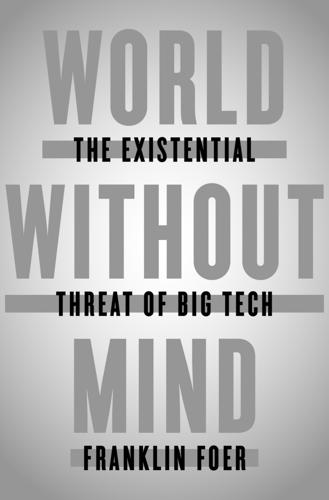
World Without Mind: The Existential Threat of Big Tech
by
Franklin Foer
Published 31 Aug 2017
To split the difference, they proposed a form of technocracy—engineers and assorted technicians would rule with beneficent disinterestedness. Engineers would strip the old order of its power, while governing in the spirit of science. They would impose rationality and order. This dream has captivated intellectuals ever since, especially Americans. The great sociologist Thorstein Veblen was obsessed with installing engineers in power and, in 1921, wrote a book making his case. His vision briefly became a reality. In the aftermath of World War I, American elites were aghast at all the irrational impulses unleashed by that conflict—the xenophobia, the racism, the urge to lynch and riot.

Different: Escaping the Competitive Herd
by
Youngme Moon
Published 5 Apr 2010
Hotels al ow guests to watch cable television for free, but retain the bizarrely archaic practice of charging a fee for local phone cal s. The soap in the bathroom is there for the taking, but the soda in the minibar is not. I’m not saying that this should be any other way; I’m merely saying that it is odd that it is precisely this way, with so little competitive deviation, down to this level of granularity. Thorstein Veblen was a turn-of-the-century economist whose legacy included the origination of the phrase “conspicuous consumption.” In his most wel -known book, The Theory of the Leisure Class, he contended that modern consumption was becoming an empty exercise in which al anyone ever cared about anymore was keeping up with the Joneses.
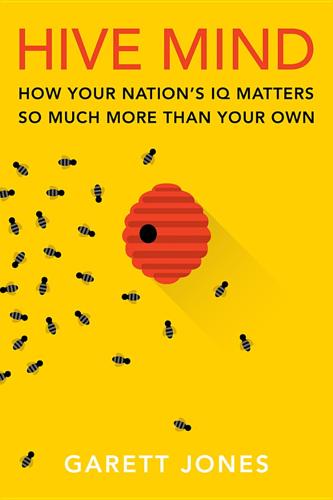
Hive Mind: How Your Nation’s IQ Matters So Much More Than Your Own
by
Garett Jones
Published 15 Feb 2015
A lot of this goes on subconsciously, to be sure: most people probably swear a little more around their high school friends than around their grandmothers, even if they’re not consciously trying to conform. In economics, the view that people’s consumer spending habits are driven by social comparisons is often known as the Veblen Effect after the clever satirist, sociologist, and economist Thorstein Veblen. Veblen focused in particular on conspicuous consumption, on buying things that your neighbors can see, and buying items—or perhaps vacations to exotic locales—that demonstrate your social status. Cornell economist Robert Frank and Harvard economist Juliet Schor are modern proponents of the view that consumer spending is socially driven.
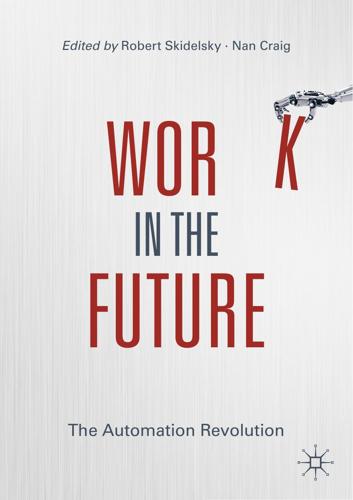
Work in the Future The Automation Revolution-Palgrave MacMillan (2019)
by
Robert Skidelsky Nan Craig
Published 15 Mar 2020
Hunting is a joy for these tribes-people (Donkin 2010). Somewhere in our past, the definition of work was transformed from something to accomplish an aim into a more modern definition of something we would rather not be doing. How did that happen when the past two centuries have been awash with labour-saving technologies? Thorstein Veblen’s idea of the leisure society was trampled somewhere under the theories of Smith, Marx and Keynes. Work is the protein, interacting with other resources, feeding our seemingly insatiable growth economies that, to our peril, ignore the wellbeing of both the planet and other species. As internet technologies transform our working patterns through self- organised platforms, often collectively described as Uberisation and the gig economy, there seems to be a yearning for greater understanding of our past, a need for clues that may lead us in to a sustainable future.

This Is Not Normal: The Collapse of Liberal Britain
by
William Davies
Published 28 Sep 2020
The extreme manifestation of this nostalgic nihilism is Arron Banks, who is the decaying face of Harry Enfield’s Thatcherite ‘loadsamoney’ character, now living off the proceeds of his previous investments, while continuing to troll people about how little he cares about society. The financial troll uses his money to smash things up, as a type of conspicuous consumption: a way, as Thorstein Veblen argued, of showing how much money you can afford to waste, and how insulated you are from the consequences of your actions.7 For men such as Tim Martin, boss of Wetherspoons, backing ‘no deal’ is a way of signalling that you’re rich enough to take a haircut of a few million off your assets. What of the remaining 70 per cent of the population, who are firmly opposed to an ultra-hard or ‘no-deal’ Brexit?
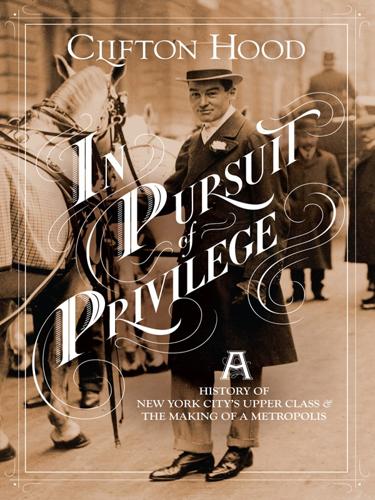
In Pursuit of Privilege: A History of New York City's Upper Class and the Making of a Metropolis
by
Clifton Hood
Published 1 Nov 2016
ECHOES While an upper class has been in existence in New York City for more than three centuries, it is the Gilded Age upper class that has captivated the scholarly community and the general public alike. For many people, the Gilded Age upper class is the upper class. One sign of this enduring interest are the landmark studies that have been made of it, starting with Thorstein Veblen’s famous The Theory of the Leisure Class (1899). In portraying earlier leisure classes as arising from “barbarism” and in criticizing their “predatory habits,” Veblen gave voice to the awe and revulsion with which he and many of his contemporaries reacted to the lavish expenditures and economic muscle of the nouveaux riches of their day.108 The Theory of the Leisure Class is a sweeping work that begins in the feudal period and investigates the development of conspicuous consumption and conspicuous leisure on a national and even a global scale, but there was significant overlap between his American leisure class and the New York City upper class of this period.
…
Shaun Whiteside (Stanford, Calif.: Stanford University Press, 1990), 1–10. 106. Di Cesnola to Dodge, October 17, 1892, MMA; Metropolitan Museum of Art, Twenty-Second Annual Report, 500–02; and New York Times, December 12, 1882 and June 8, 1895. 107. “Report Re Consequences of Sunday opening,” MMA. 108. Thorstein Veblen, The Theory of the Leisure Class (New York: Macmillan, 1899; repr., New York: New American Library, 1953), 21, 28. 109. Gustavus Myers, History of the Great American Fortunes (Chicago: Kerr, 1909; repr., New York: Modern Library, 1936), 696–712; and Matthew Josephson, The Robber Barons: The Great American Capitalists, 1861–1901 (New York: Harcourt, Brace, 1934; repr., New York: Harcourt, Brace & World, 1962), 3–31. 110.

Never Let a Serious Crisis Go to Waste: How Neoliberalism Survived the Financial Meltdown
by
Philip Mirowski
Published 24 Jun 2013
Through this guilty pleasure, people of modest means are ushered into the vicarious experience of what it feels like to be extravagantly rich in an era of decline. For a brief moment, the working class can empathize with the imperious creditor, even though they lack the assets to maintain the charade. In a sense, one might approach this phenomenon as an elaboration of Thorstein Veblen’s basic insight in his Theory of the Leisure Class: “An invidious comparison is a process of valuation of persons in respect to worth.”68 The theater of cruelty becomes an emporium of conspicuous consumption. But beyond a little virtual reality, the normalization of everyday sadism fulfills deeper functions as well.
…
Latter-day followers of Galbraith bring various counterexamples to the table, such as the recent policy to suppress cigarette advertising in the United States, but to no avail.86 Curiously enough, given that it bulks so large in everyday life, the average person still ardently believes that all that expenditure and all that effort to manage their desires is essentially impotent, and by implication, wasted. Neoliberals, as one might expect, have come to concoct a much more plausible justification of the phenomenon. They have carefully read and absorbed their leftist critics, from Thorstein Veblen to Naomi Klein, and far from rejecting them outright, they openly use their ideas to render the process of persuasion both more unconscious and more effective.87 Neoliberals have pioneered the signal innovation of importing the double-truth character of their project into the everyday lives of the common man.
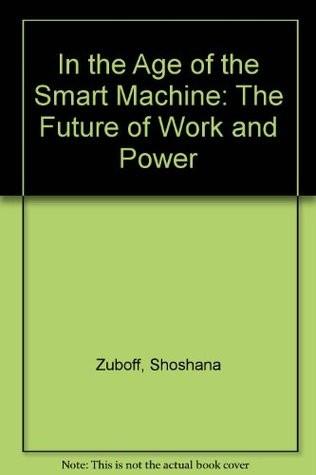
In the Age of the Smart Machine
by
Shoshana Zuboff
Published 14 Apr 1988
In America they were energized by the Calvinist notion that hard work repre- sented the holy life. . . . Traditional American ideology was thus fused with religion. It constituted a single, integrated, and synthetic body of belief. ,,3 The explicit linkage between the natural rights of ownership and divine grace had faded. Property rights began to develop their own independent validity. Thorstein Veblen described this shift in his dis- cussion of nineteenth-century business principles. In an analysis of the natural rights doctrine, he concludes that its "central tenet, that own- ership is a natural right resting on the productive work and the discre- tionary choice of the owner, gradually rises superior to criticism and gathers axiomatic certitude.
…
Max Weber, The Protestant Ethic and the Spirit of Capitalism (New York: Charles Scribner's Sons, 1958), 172. 2. John Child, British Management Thought (London: George Allen and Unwin, 1969),33. 446 Notes 3. George Cabot Lodge, The New American Ideology (New York: Alfred A. Knopf, 1975),116. 4. Thorstein Veblen, The Theory of Business Enterprise (New York: Charles Scrib- ner's Sons, 1923),73. 5. As Reinhard Bendix put it: liThe doctrine of self-help proclaimed that em- ployers and workers were alike in self-dependence, and that regardless of class each man's success was a proof of himself and a contribution to the common wealth. . . .
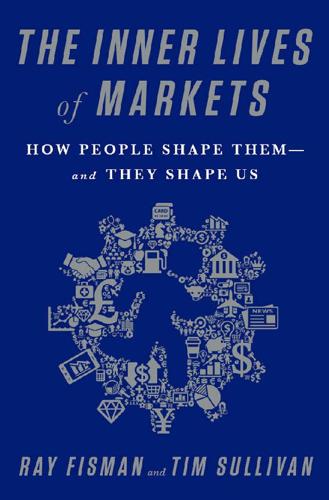
The Inner Lives of Markets: How People Shape Them—And They Shape Us
by
Tim Sullivan
Published 6 Jun 2016
These early economists aimed to tackle big questions about how the economy worked (and whether it could be made to work better), weighing in on such important matters as market function (and dysfunction), the origin of value, business cycles, and unemployment. It was set in motion by Smith and carried on for one hundred years thereafter by the classical economists—David Ricardo, Thomas Malthus, Karl Marx, Vilfredo Pareto, among others. It was continued for nearly one hundred years more by neoclassical economists like Thorstein Veblen, John Maynard Keynes, and an enduring hero of free-market proponents, Joseph Schumpeter. Pareto, who lived from 1848 until 1923, is emblematic of both the worldliness and precision of these towering figures in the history of economic thought. He was well experienced in matters of business but also well schooled in the language of math that was already deployed to describe economics and commerce.

Technological Revolutions and Financial Capital: The Dynamics of Bubbles and Golden Ages
by
Carlota Pérez
Published 1 Jan 2002
The new wealth that accumulates at one end is often more than counterbalanced by the poverty that spreads at the other end. This is in fact the period when capitalism shows its ugliest and most callous face. It is the time depicted by Charles Dickens and Upton Sinclair, by Friedrich Engels and Thorstein Veblen; the time when the rich get richer with arrogance and the poor get poorer through no fault of their own; when part of the population celebrates prosperity and the other portion (generally much larger) experiences The Turbulent Ending of the Twentieth Century 5 outright deterioration and decline.
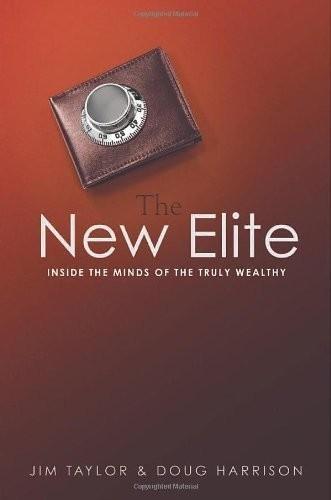
The New Elite: Inside the Minds of the Truly Wealthy
by
Dr. Jim Taylor
Published 9 Sep 2008
Today’s Wealth Explosion 3 We sought to understand how they came by their money, and how, if at all, it has changed them; whether money can buy happiness, or if it just brings a new set of challenges; whether they live loudly or quietly; whether the typical wealthy person is more like Donald Trump, Oprah Winfrey, Paris Hilton, or none of the above; indeed, whether or not there is such a thing as a ‘‘typical’’ wealthy person. As market researchers, we were, of course, particularly interested in how they save, invest, and spend their money. In where they shop, what brands they like, and what luxury means to them. And whether conspicuous consumption—a term coined by economist Thorstein Veblen over 100 years ago—is a fair characterization of how they buy and live today, or if it is an unfair generalization based on media stories about an unrepresentative few. We were, like many people, inherently curious about people who have achieved tremendous financial success, and we found their stories to be not only fascinating but also inspirational—and personally informative, as well.

What's Wrong With Economics: A Primer for the Perplexed
by
Robert Skidelsky
Published 3 Mar 2020
For most people, for most of history, absolute wants – the ‘needs of the stomach’ – have in fact been by far the most important of their wants, so economists understandably paid much less attention to the existence of relative wants – those generated by the existence of other humans. The American Thorstein Veblen (1857–1929) was the first economist to attend seriously to the primacy of relative wants in consumption patterns. No one understood better than Veblen that the insatiable wants which most economists attributed to human nature were socially constructed. He originated phrases which have become household words, such as ‘status symbols’ and ‘conspicuous consumption’.

Ellul, Jacques-The Technological Society-Vintage Books (1964)
by
Unknown
Published 7 Jun 2012
I wish belatedly to thank the Center publicly for all they did to help us with one of the most difficult editorial tasks Alfred A. Knopf, Inc., has ever undertaken. This note should have appeared in our first printing and I am sorry it did not. Forew ord l a The Technological Society, Jacques Ellul formulates a compre hensive and forceful social philosophy of our technical civilization. Less penetrating than Thorstein Veblen’s The Engineers and the Price System, it nevertheless widens the scope of inquiry into the consequences of having a society pervaded by technicians. Ellul’s book is more colorful and incisive than Oswald Spengler’s Man and Technics— which by contrast seems faded and unperceptive— and it is more analytical than Lewis Mumford’s trilogy— although Ellul handles the historical evidence much more sparingly and with less assurance than Mumford.
…
Rubinstein concludes his study by remarking that this progress is the goal of all efforts in the Soviet Union, where it is said to be possible to allow free play to technical automatism without checking it in any way. Another traditional analysis supplements Rubinstein’s. This seri ous study, carried out by Thorstein Veblen, maintains that there is a conflict between the machine and business. Financial investment, which originally accelerated invention, now prolongs technical in activity. Capitalism does not give free play to technical activity, the goal of which is that a more efficient method or a more rapidly acting machine should ipso facto and automatically replace the pre ceding method or machine.
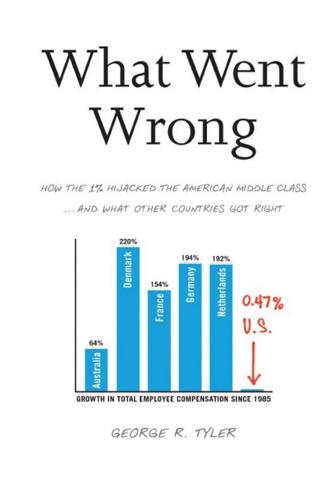
What Went Wrong: How the 1% Hijacked the American Middle Class . . . And What Other Countries Got Right
by
George R. Tyler
Published 15 Jul 2013
Referring to altruism, Rand argued, as Kim Phillips-Fein explained in the December 2009 Harper’s Magazine, that Christianity mistakenly, “had taught people to sacrifice themselves in the name of a false ideal.” As an alternative, she fabricated objectivism, a made-up ethical structure based on what she labeled rational selfishness, which exalted the selfish pursuit of individual satisfaction.54 In essence, she promoted what the early twentieth-century American sociologist Thorstein Veblen would have termed a culture of exploitation where riches are “the basis of conventional esteem.” Altruism was dismissed, replaced with the primacy of narcissism and self-absorption.55 Ayn Rand’s contribution to American economics was to mute the traditional national guilt toward greed. If the market rewarded behavior, it was morally acceptable, even if it violated community norms or one’s conscience formed by parents, biblical teachings, and society at large.
…
In 2012, the International Labor Organization statistics showed that labor income in Germany has stagnated in recent decades even as wages continued rising. This trend was a consequence of steadily rising real wages coupled with a sharp decline in hours actually being worked as employees there and elsewhere across northern Europe and increasingly affluent Australia substituted leisure for work.36 Leisure Instead of Work Thorstein Veblen argued in his 1899 classic, The Theory of the Leisure Class, that employees will work long and hard to enable status-related conspicuous consumption. The northern Europe experience is evidence that supports this theory, if we view leisure time as a variant of conspicuous consumption. A more contemporary descriptor of attitudes in other rich democracies toward work and leisure is provided by the political scientist Andrew Moravcsik.
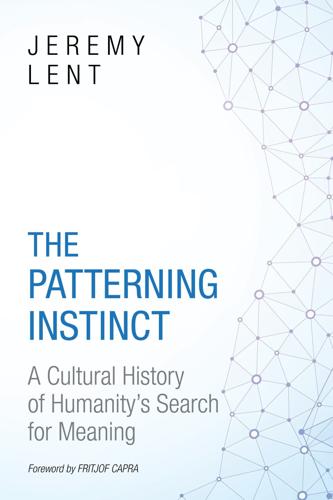
The Patterning Instinct: A Cultural History of Humanity's Search for Meaning
by
Jeremy Lent
Published 22 May 2017
In the consumer culture born in the early twentieth century in the United States, the purchase and consumption of material goods became the value that trumped all others. In contrast to the old hierarchical class systems of Europe, material consumption became a critical factor in determining one's status within society. In 1899, as this new era was unfolding, American sociologist Thorstein Veblen identified a process he called “conspicuous consumption,” by which people compete to achieve higher status through being seen to consume more expensive goods and services than their peers, a practice that continues to drive patterns of behavior in the early twenty-first century.12 A new breed of consumer marketers blazed a trail with state-of-the-art techniques to actively manage this rise in public consumption.
…
McNeill, Something New under the Sun: An Environmental History of the Twentieth-Century World (New York: Norton, 2001), Kindle edition, locations 4772–80. 11. Cited in Robbins, Culture of Capitalism, 1–2. See also Beniger, Control Revolution, locs. 5404–42. 12. Robbins, Culture of Capitalism, 2–3; Thorstein Veblen, The Theory of the Leisure Class (New York: Dover Publications, 1899/1994). 13. Cited in Al Gore, The Future: Six Drivers of Global Change (New York: Random House, 2013), iBook edition, chap. 4. 14. Report of the “Committee on Recent Economic Changes,” issued by President Herbert Hoover in 1929, cited in Gore, Future, chap. 4. 15.

The Spirit Level: Why Greater Equality Makes Societies Stronger
by
Richard Wilkinson
and
Kate Pickett
Published 1 Jan 2009
Fifty per cent of the participants thought they would trade as much as half their real income if they could live in a society in which they would be better off than others.355 This shows how much we value status and explains why (as we saw in Chapter 2) the income differences within rich societies matter so much more than the income differences between them. Once we have enough of the necessities of life, it is the relativities which matter. When Bowles and Park first demonstrated the relationship between inequality and working hours (Figure 15.3), they quoted Thorstein Veblen, who said: ‘The only practicable means of impressing one’s pecuniary ability on the unsympathetic observers of one’s everyday life is an unremitting demonstration of the ability to pay.’ Veblen’s Theory of the Leisure Class, published in 1899, was the first major work on the relationship between consumption and social stratification.
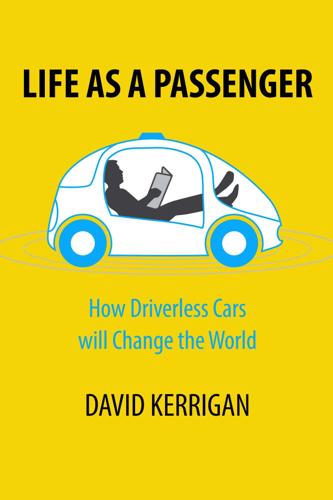
Life as a Passenger: How Driverless Cars Will Change the World
by
David Kerrigan
Published 18 Jun 2017
How will self-driving cars merge in construction zones? How will self-driving cars make left turns across oncoming traffic with solar glare?’ All of these questions must be answered, of course, but I believe it’s not too early to ask what we want of the next car.” Sociologist and economist Thorstein Veblen introduced the concept of Technological Determinism[319] in the 1920s, which proposed that a society's technology determines the development of its social structure and cultural values. There seems little doubt that the technology for driverless cars will overcome its technological challenges at some point and offer genuinely new alternatives for transport, and all that entails and affects.
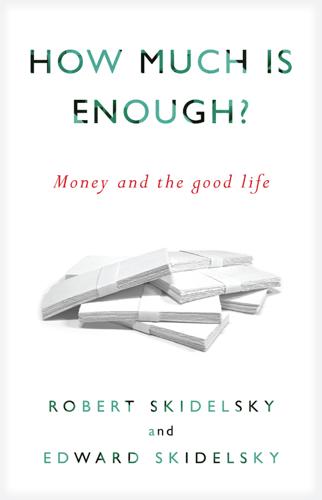
How Much Is Enough?: Money and the Good Life
by
Robert Skidelsky
and
Edward Skidelsky
Published 18 Jun 2012
Snob and bandwagon goods are not of course mutually exclusive: many snob goods mutate into bandwagon goods, leading to their abandonment by true snobs. This perpetual circle is familiar from the worlds of art and fashion. Overlapping with both snob and bandwagon goods are “Veblen goods,” so called in honor of the great American theorist of conspicuous consumption, Thorstein Veblen. Veblen goods are desired insofar as they are expensive and known to be expensive; they function, in effect, as advertisements of wealth. In the still hierarchical world of business, whether one travels first, business or economy class signals one’s rank in the company. Another Veblenesque phenomenon is the “bling effect.”
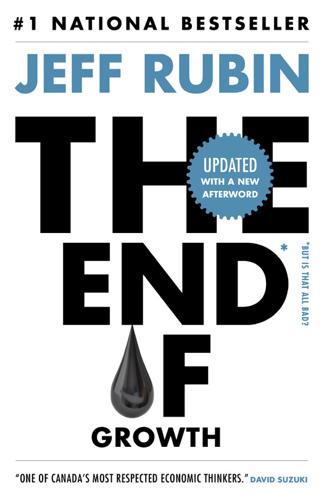
The End of Growth
by
Jeff Rubin
Published 2 Sep 2013
According to the University of Waterloo’s Canadian Index of Wellbeing, increases in GDP haven’t resulted in commensurate gains in life satisfaction. Since 1994, the sense of well-being among Canadians has only improved at about a third of the rate of the country’s economic growth. Part of the explanation for the discrepancy may be found in what Thorstein Veblen, a 19th-century economist, termed conspicuous consumption. This type of spending is driven by a need to demonstrate social status. Instead of buying stuff you really want, you buy to keep up with the Joneses. Veblen theorized that conspicuous consumption sparked by the need to bolster status doesn’t necessarily lead to increased personal satisfaction or enjoyment.

When to Rob a Bank: ...And 131 More Warped Suggestions and Well-Intended Rants
by
Steven D. Levitt
and
Stephen J. Dubner
Published 4 May 2015
But given that the documented power of veganism to directly confront global warming, and given the fact that emissions have only intensified alongside all efforts to lower them, I’d suggest McKibben, 350.org, and the environmental movement as a whole trade up their carnivorous agnosticism for a fire-and brimstone dose of vegan fundamentalism. Hey Baby, Is That a Prius You’re Driving? (SJD) Remember when keeping up with the Joneses meant buying a diamond-encrusted cigarette case? Such ostentatious displays of wealth during the Gilded Age prompted Thorstein Veblen to coin the term conspicuous consumption. Conspicuous consumption has hardly gone away—what do you think bling is?—but now it’s got a right-minded cousin: conspicuous conservation. Whereas conspicuous consumption is meant to signal how much green you’ve got, conspicuous conservation signals how green you are.
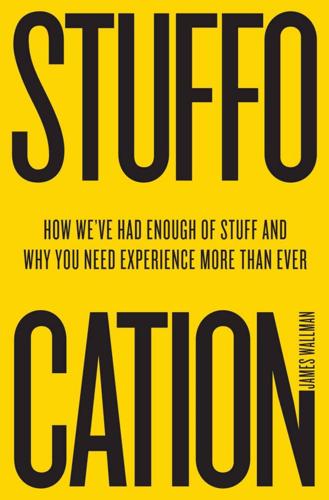
Stuffocation
by
James Wallman
Published 6 Dec 2013
Alice Marwick has now turned her PhD into a book: Alice Marwick, Status Update: Celebrity, Publicity, and Branding in the Social Media Age (Yale: Yale University Press, 2013). CHAPTER TEN Facebook Changed How We Keep up with the Joneses For the seminal work on consumption and status, read Thorstein Veblen, Theory of the Leisure Class (New York: Macmillan, 1899). If you haven’t already, watch a TED lecture at www.ted.com. “If you have high status, people laugh at your jokes more, you earn more, you get invited out to more parties. You are also more likely to live longer, feel more important and loved, and have a more attractive partner.”

Listen, Liberal: Or, What Ever Happened to the Party of the People?
by
Thomas Frank
Published 15 Mar 2016
The progressives of this period could be frankly and openly elitist on the subject: Herbert Croly, the author of the seminal work The Promise of American Life and later a founder of the New Republic, openly advocated for a sort of neo-aristocratic order led by “exceptional” citizens, and left-wing critics ranging from Thorstein Veblen to R. H. Tawney imagined capitalism tamed by professional expertise. The progressives had a point. Many of the industrial world’s problems were—and are—highly technical ones that require the attention of well-trained experts. Markets could obviously not be counted on to bring about democratic solutions to the scourge of exploitation, layoffs, and workplace injuries.
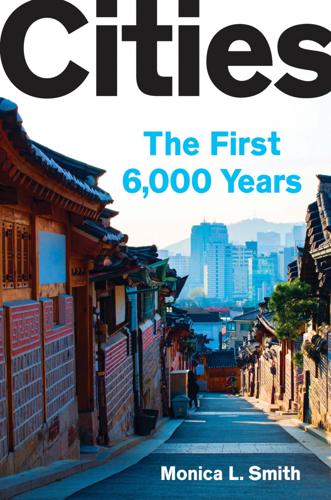
Cities: The First 6,000 Years
by
Monica L. Smith
Published 31 Mar 2019
Those constraints paradoxically increase the rate of urban flow, enabling commuters and residents to more precisely pinpoint their areas of movement through the constraints of the built environment, directing their footsteps to places that are “famous” or at least useful. Show and Tell Social scientists have not often viewed consumption in a positive light, instead approaching human-artifact interactions with a certain skepticism and disdain. Thorstein Veblen is among the most famous of the moralists who have taken a long, dim view of acquisitions. He published The Theory of the Leisure Class in 1899, a book that still has a strong hold on the economic imagination through its use of the term “conspicuous consumption” to deride the use of material objects as class signifiers.
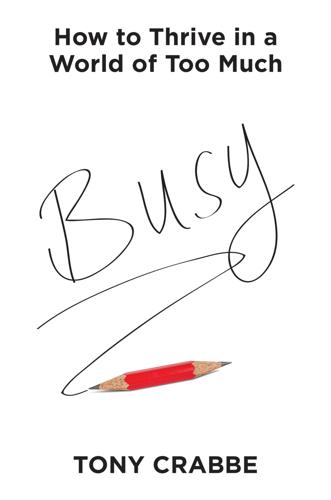
Busy
by
Tony Crabbe
Published 7 Jul 2015
More recently he said, “Once I have more money than Larry Ellison, I’ll be satisfied.”3 Ellison, the founder of the software giant Oracle, is worth $13 billion. How much is enough for you? Don’t worry about answering that question, because as soon as you get close to reaching that amount, your definition of enough will have changed. In 1899, the sociologist and economist Thorstein Veblen coined the term “conspicuous consumption” to describe a certain group of people who, during the Industrial Revolution, had become extremely rich. These people, the nouveau riche, were using money to visibly demonstrate their status and power. More than one hundred years later, we’re all at it.
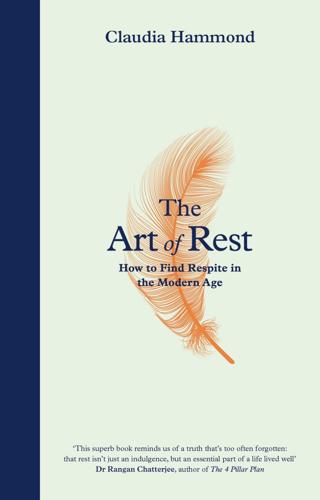
The Art of Rest: How to Find Respite in the Modern Age
by
Claudia Hammond
Published 5 Dec 2019
But we do know that work is not sheer grind all the time, that restful moments pop up in the middle of the day, just as work surfaces during leisure time (that work email that pops up and spoils your weekend). For centuries, a good proxy for a person’s wealth was the number of hours they had to work. Simply put, the fewer you did, the richer you were. The economist Thorstein Veblen coined the phrase ‘the leisure class’, a class that were noted not for conspicuous hard work but for conspicuous consumption and conspicuous leisure. Classic members of this class were wealthy industrialists and, in countries like Russia, moneyed landowners, like Oblomov. To some extent, this picture still holds true, with the cleaner in a City office block working several shifts to make enough to live on, and with no prospect of ever retiring, while the trader in the same building earns so much he (and mostly they still are hes not shes) can retire at forty to play golf.

Restarting the Future: How to Fix the Intangible Economy
by
Jonathan Haskel
and
Stian Westlake
Published 4 Apr 2022
Economist Avner Greif developed a theory of when institutions change and when they do not, pointing to several reasons why institutions persist.39 These include the difficulty of coordinating (the collective-action problem), people’s lack of attention to the changing environment, and the fact that people and society cleave to habits and routines. The idea is a familiar one in British culture, in that critics such as Thorstein Veblen and Corelli Barnett have sought to attribute various aspects of the United Kingdom’s relative economic decline to the persistence of outmoded institutions, from systems of elite education and technical training to the structure of capital markets and corporate governance. In some cases, careful scholarship casts doubt on these claims.

A Beautiful Mind
by
Sylvia Nasar
Published 11 Jun 1998
His genius also won him love. He had married a beautiful young physics student who adored him, and fathered a child. It was a brilliant strategy, this genius, this life. A seemingly perfect adaptation. Many great scientists and philosophers, among them René Descartes, Ludwig Wittgenstein, Immanuel Kant, Thorstein Veblen, Isaac Newton, and Albert Einstein, have had similarly strange and solitary personalities.20 An emotionally detached, inward-looking temperament can be especially conducive to scientific creativity, psychiatrists and biographers have long observed, just as fiery fluctuations in mood may sometimes be linked to artistic expression.
…
“Fine Hall is, I believe, the most luxurious building ever devoted to mathematics,” one European émigré wrote enviously.7 It was a gabled, Neo-Gothic red brick and slate fortress, built in a style reminiscent of the College de France in Paris and Oxford University. Its cornerstone contains a lead box with copies of works by Princeton mathematicians and the tools of the trade — two pencils, one piece of chalk, and, of course, an eraser. Designed by Oswald Veblen, a nephew of the great sociologist Thorstein Veblen, it was meant to be a sanctuary that mathematicians would be “loath to leave.”8 The dim stone corridors that circled the structure were perfect for both solitary pacing and mathematical socializing. The nine “studies” — not offices!— for senior professors had carved paneling, hidden file cabinets, blackboards that opened like altars, oriental carpets, and massive, overstuffed furniture.

Debunking Economics - Revised, Expanded and Integrated Edition: The Naked Emperor Dethroned?
by
Steve Keen
Published 21 Sep 2011
A catalogue record for this book is available from the British Library Library of Congress Cataloging in Publication Data available eISBN 9781780322209 CONTENTS Tables, figures and boxes Preface to the second edition Preface to the first edition 1 Predicting the ‘unpredictable’ 2 No more Mr Nice Guy Part 1 Foundations: the logical flaws in the key concepts of conventional economics 3 The calculus of hedonism 4 Size does matter 5 The price of everything and the value of nothing 6 To each according to his contribution Part 2 Complexities: issues omitted from standard courses that should be part of an education in economics 7 The holy war over capital 8 There is madness in their method 9 Let’s do the Time Warp again 10 Why they didn’t see it coming 11 The price is not right 12 Misunderstanding the Great Depression and the Great Recession Part 3 Alternatives: different ways to think about economics 13 Why I did see ‘It’ coming 14 A monetary model of capitalism 15 Why stock markets crash 16 Don’t shoot me, I’m only the piano 17 Nothing to lose but their minds 18 There are alternatives Bibliography Index TABLES, FIGURES AND BOXES Tables 2.1 Anticipations of the housing crisis and recession 3.1 ‘Utils’ and change in utils from consuming bananas 3.2 Utils arising from the consumption of two commodities 3.3 The commodities in Sippel’s ‘Revealed Preference’ experiment 4.1 Demand schedule for a hypothetical monopoly 4.2 Costs for a hypothetical monopoly 4.3 Sales and costs determine the level of output that maximizes profit 4.4 Cost and revenue for a ‘perfectly competitive’ industry identical in scale to hypothetical monopoly 5.1 Input and output data for a hypothetical firm 5.2 Cost drawings for the survey by Eiteman and Guthrie 5.3 Empirical research on the nature of cost curves 7.1 Sraffa’s hypothetical subsistence economy 7.2 Production with a surplus 7.3 Relationship between maximum and actual rate of profit and the wage share of surplus 7.4 The impact of the rate of profit on the measurement of capital 10.1 Anderson’s ranking of sciences 12.1 The alleged Money Multiplier process 13.1 A hypothetical example of the impact of decelerating debt on aggregate demand 13.2 The actual impact of decelerating debt on aggregate demand 14.1 A pure credit economy with paper money 14.2 The dynamics of a pure credit economy with no growth 14.3 Net incomes 14.4 A growing pure credit economy with electronic money 15.1 Von Neumann’s procedure for working out a numerical value for utility 15.2 The Allais ‘Paradox’ 15.3 The Allais ‘Paradox’ Part 2 16.1 The solvability of mathematical models 17.1 Marx’s unadjusted value creation table, with the rate of profit dependent upon the variable-to-constant ratio in each sector 17.2 Marx’s profit distribution table, with the rate of profit now uniform across sectors 17.3 Steedman’s hypothetical economy 17.4 Steedman’s physical table in Marx’s value terms 17.5 Steedman’s prices table in Marx’s terms 17.6 Profit rate and prices calculated directly from output/wage data 17.7 Marx’s example where the use-value of machinery exceeds its depreciation Figures 2.1 US inflation and unemployment from 1955 2.2 Bernanke doubles base money in five months 2.3 Private debt peaked at 1.7 times the 1930 level in 2009 3.1 Rising total utils and falling marginal utils from consuming one commodity 3.2 Total utils from the consumption of two commodities; 3.3 Total ‘utils’ represented as a ‘utility hill’ 3.4 The contours of the ‘utility hill’ 3.5 Indifference curves: the contours of the ‘utility hill’ shown in two dimensions 3.6 A rational consumer’s indifference map 3.7 Indifference curves, the budget constraint, and consumption 3.8 Deriving the demand curve 3.9 Upward-sloping demand curve 3.10 Separating out the substitution effect from the income effect 3.11 Engel curves show how spending patterns change with increases in income 3.12 A valid market demand curve 3.13 Straight-line Engel ‘curves’ 3.14 Economic theory cannot rule out the possibility that a market demand curve may have a shape like this, rather than a smooth, downward-sloping curve 4.1 Leijonhufvud’s ‘Totems’ of the Econ tribe 4.2 Stigler’s proof that the horizontal firm demand curve is a fallacy 4.3 Profit maximization for a monopolist: marginal cost equals marginal revenue, while price exceeds marginal cost 4.4 Profit maximization for a perfectly competitive firm: marginal cost equals marginal revenue, which also equals price 4.5 A supply curve can be derived for a competitive firm, but not for a monopoly 4.6 A competitive industry produces a higher output at a lower cost than a monopoly 4.7 The standard ‘supply and demand’ explanation for price determination is valid only in perfect competition 4.8 Double the size, double the costs, but four times the output 4.9 Predictions of the models and results at the market level 4.10 Output behavior of three randomly selected firms 4.11 Profit outcomes for three randomly selected firms 4.12 Output levels for between 1- and 100-firm industries 5.1 Product per additional worker falls as the number of workers hired rises 5.2 Swap the axes to graph labor input against quantity 5.3 Multiply labor input by the wage to convert Y-axis into monetary terms, and add the sales revenue 5.4 Maximum profit occurs where the gap between total cost and total revenue is at a maximum 5.5 Deriving marginal cost from total cost 5.6 The whole caboodle: average and marginal costs, and marginal revenue 5.7 The upward-sloping supply curve is derived by aggregating the marginal cost curves of numerous competitive firms 5.8 Economic theory doesn’t work if Sraffa is right 5.9 Multiple demand curves with a broad definition of an industry 5.10 A farmer who behaved as economists advise would forgo the output shown in the gap between the two curves 5.11 Capacity utilization over time in the USA 5.12 Capacity utilization and employment move together 5.13 Costs determine price and demand determines quantity 5.14 A graphical representation of Sraffa’s (1926) preferred model of the normal firm 5.15 The economic theory of income distribution argues that the wage equals the marginal product of labor 5.16 Economics has no explanation of wage determination or anything else with constant returns 5.17 Varian’s drawing of cost curves in his ‘advanced’ microeconomics textbook 6.1 The demand for labor curve is the marginal revenue product of labor 6.2 The individual’s income–leisure trade-off determines how many hours of labor he supplies 6.3 An upward-sloping individual labor supply curve 6.4 Supply and demand determine the equilibrium wage in the labor market 6.5 Minimum wage laws cause unemployment 6.6 Demand management policies can’t shift the supply of or demand for labor 6.7 Indifference curves that result in less work as the wage rises 6.8 Labor supply falls as the wage rises 6.9 An individual labor supply curve derived from extreme and midrange wage levels 6.10 An unstable labor market stabilized by minimum wage legislation 6.11 Interdependence of labor supply and demand via the income distributional effects of wage changes 7.1 The standard economic ‘circular flow’ diagram 7.2 The rate of profit equals the marginal product of capital 7.3 Supply and demand determine the rate of profit 7.4 The wage/profit frontier measured using the standard commodity 9.1 Standard neoclassical comparative statics 9.2 The time path of one variable in the Lorenz model 9.3 Structure behind the chaos 9.4 Sensitive dependence on initial conditions 9.5 Unstable equilibria 9.6 Cycles in employment and income shares 9.7 A closed loop in employment and wages share of output 9.8 Phillips’s functional flow block diagram model of the economy 9.9 The component of Phillips’s Figure 12 including the role of expectations in price setting 9.10 Phillips’s hand drawing of the output–price-change relationship 9.11 A modern flow-chart simulation program generating cycles, not equilibrium 9.12 Phillips’s empirically derived unemployment–money-wage-change relation 10.1 Hicks’s model of Keynes 10.2 Derivation of the downward-sloping IS curve 10.3 Derivation of the upward-sloping LM curve 10.4 ‘Reconciling’ Keynes with ‘the Classics’ 10.5 Unemployment–inflation data in the USA, 1960–70 10.6 Unemployment–inflation data in the USA, 1950–72 10.7 Unemployment–inflation data in the USA, 1960–80 10.8 The hog cycle 11.1 Supply and demand in the market for money 11.2 The capital market line 11.3 Investor preferences and the investment opportunity cloud 11.4 Multiple investors (with identical expectations) 11.5 Flattening the IOC 11.6 How the EMH imagines that investors behave 11.7 How speculators actually behave 12.1 Inflation and base money in the 1920s 12.2 Inflation and base money in the post-war period 12.3 Bernanke’s massive injection of base money in QE1 12.4 Change in M0 and unemployment, 1920–40 12.5 Change in M1 and unemployment, 1920–40 12.6 Change in M0 and M1, 1920–40 12.7 M0–M1 correlation during the Roaring Twenties 12.8 M0–M1 correlation during the Great Depression 12.9 Bernanke’s ‘quantitative easing’ in historical perspective 12.10 The volume of base money in Bernanke’s ‘quantitative easing’ in historical perspective 12.11 Change in M1 and inflation before and during the Great Recession 12.12 The money supply goes haywire 12.13 Lindsey, Orphanides, Rasche 2005, p. 213 12.14 The empirical ‘Money Multiplier’, 1920–40 12.15 The empirical ‘Money Multiplier’, 1960–2012 12.16 The disconnect between private and fiat money during the Great Recession 13.1 Goodwin’s growth cycle model 13.2 My 1995 Minsky model 13.3 The vortex of debt in my 1995 Minsky model 13.4 Cyclical stability with a counter-cyclical government sector 13.5 Australia’s private debt-to-GDP ratio, 1975–2005 13.6 US private debt to GDP, 1955–2005 13.7 Aggregate demand in the USA, 1965–2015 13.8 US private debt 13.9 The change in debt collapses as the Great Recession begins 13.10 The Dow Jones nosedives 13.11 The correlation of debt-financed demand and unemployment 13.12 The housing bubble bursts 13.13 The Credit Impulse and change in employment 13.14 Correlation of Credit Impulse and change in employment and GDP 13.15 Relatively constant growth in debt 13.16 The biggest collapse in the Credit Impulse ever recorded 13.17 Growing level of debt-financed demand as debt grew faster than GDP 13.18 The two great debt bubbles 13.19 Change in nominal GDP growth then and now 13.20 Real GDP growth then and now 13.21 Inflation then and now 13.22 Unemployment then and now 13.23 Nominal private debt then and now 13.24 Real debt then and now 13.25 Debt to GDP then and now 13.26 Real debt growth then and now 13.27 The collapse of debt-financed demand then and now 13.28 Debt by sector – business debt then, household debt now 13.29 The Credit Impulse then and now 13.30 Debt-financed demand and unemployment, 1920–40 13.31 Debt-financed demand and unemployment, 1990–2011 13.32 Credit Impulse and change in unemployment, 1920–40 13.33 Credit Impulse and change in unemployment, 1990–2010 13.34 The Credit Impulse leads change in unemployment 14.1 The neoclassical model of exchange as barter 14.2 The nature of exchange in the real world 14.3 A nineteenth-century private banknote 14.4 Bank accounts 14.5 A credit crunch causes a fall in deposits and a rise in reserves in the bank’s vault 14.6 A bank bailout’s impact on loans 14.7 A bank bailout’s impact on incomes 14.8 A bank bailout’s impact on bank income 14.9 Bank income grows if debt grows more rapidly 14.10 Unemployment is better with a debtor bailout 14.11 Loans grow more with a debtor bailout 14.12 Profits do better with a debtor bailout 14.13 Bank income does better with a bank bailout 14.14 Modeling the Great Moderation and the Great Recession – inflation, unemployment and debt 14.15 The Great Moderation and the Great Recession – actual inflation, unemployment and debt 14.16 Modeling the Great Moderation and the Great Recession – output 14.17 Income distribution – workers pay for the debt 14.18 Actual income distribution matches the model 14.19 Debt and GDP in the model 14.20 Debt and GDP during the Great Depression 15.1 Lemming population as a constant subject to exogenous shocks 15.2 Lemming population as a variable with unstable dynamics 17.1 A graphical representation of Marx’s dialectics Boxes 10.1 The Taylor Rule 13.1 Definitions of unemployment PREFACE TO THE SECOND EDITION Debunking Economics was far from the first book to argue that neoclassical economics was fundamentally unsound. If cogent criticism alone could have brought this pseudo-science down, it would have fallen as long ago as 1898, when Thorstein Veblen penned ‘Why is economics not an evolutionary science?’ (Veblen 1898). Yet in 1999, when I began writing Debunking Economics, neoclassical economics was more dominant than it had ever been. My reason for adding to this litany of thus far unsuccessful attempts to cause a long-overdue scientific revolution in economics was the belief that a prerequisite for success was just around the corner.
…
Strengths It is undeniable that the economy is an evolutionary system – with the one embellishment that change in economics is often purposeful, as opposed to the random nature of variation in the environment (though of course, purposive change can fail to achieve its intended ends).3 This self-evident fact was the basis for Thorstein Veblen’s query, over a century ago, of ‘Why is economics not an evolutionary science?’ Manifestly it should be, and this alone should be a major factor in the rise of evolutionary thinking in economics. Weaknesses One problem with evolutionary systems is that, effectively, everything can change.
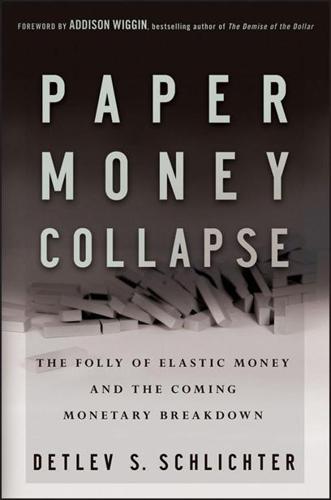
Paper Money Collapse: The Folly of Elastic Money and the Coming Monetary Breakdown
by
Detlev S. Schlichter
Published 21 Sep 2011
They therefore believe that these symptoms of the crisis are also the root causes of the crisis. If everybody simply went back to previous levels of spending, would the economy not be in better shape? Many economists over the past 250 years have proposed various “underconsumption” theories to explain business cycles, among them Robert Malthus, James Mill, Thorstein Veblen, Waddill Catchings, and William Trufant Foster.16 Marxism has at its core its own underconsumption theory. Karl Marx’s projection of the inevitable death of capitalism was based on his conclusion that an impoverished class of workers would be unable to purchase the growing output of the efficient capitalist economy.

The Impulse Society: America in the Age of Instant Gratification
by
Paul Roberts
Published 1 Sep 2014
(As Harley Earl, Sloan’s chief car “stylist,” told an interviewer, “I try to design a car so that every time you get in it, it’s a relief—you have a little vacation for a while.”6) Sloan was hardly the first to target these softer appetites. For centuries, the wealthy had been purchasing status and other preferred emotional states via “conspicuous consumption,” in Thorstein Veblen’s famous term. But with mass production, annual design changes, and easy financing, Sloan gave the average consumer the same capacity for self-gratification. Now nearly anyone could upgrade to a higher level of emotional fulfillment—and do so more quickly and efficiently than had been possible under the old producer economy, when moments of intense satisfaction were less frequent and more likely to require some serious effort or discipline.
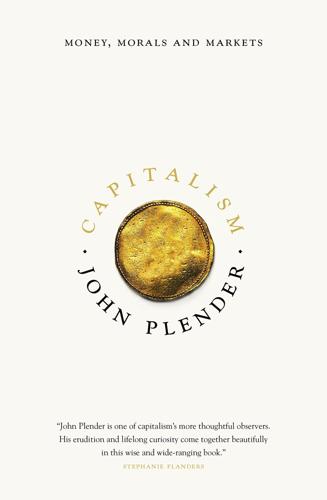
Capitalism: Money, Morals and Markets
by
John Plender
Published 27 Jul 2015
No doubt the same logic applies to today’s hedge fund managers, who pay vast sums for the work of Jeff Koons, Damien Hirst or, in the case of Steven Cohen of SAC Capital, an astonishing $155 million for Picasso’s painting of his mistress, Le Rêve. In a caustic but perceptive jibe, the Norwegian-born economist Thorstein Veblen, best known for his critique of conspicuous consumption, remarked that ‘beauty is commonly a gratification of our sense of costliness masquerading under the name of beauty’. Hence, the coinage in economics of the term ‘Veblen goods’, which refers to commodities of which people will buy more when the price goes up because this confers increased status, whereas higher prices more normally choke off demand.
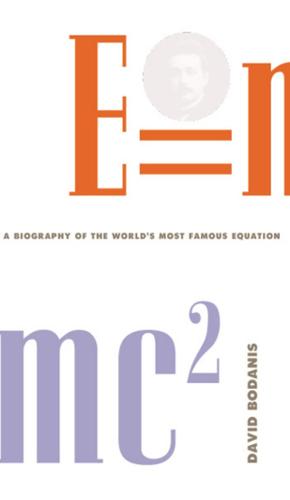
E=mc2: A Biography of the World's Most Famous Equation
by
David Bodanis
Published 25 May 2009
Poincaré got closer than almost anyone else, but when it came to breaking our usual assumptions about time’s flow or the nature of simultaneity, he backed off, unable to consider the consequences of such a new view. Why was Einstein so much more successful? It’s tempting to say it was just a matter of being brighter than everyone else. But several of Einstein’s Bern friends were highly intelligent, while someone like Poincaré would have been off the scale on any IQ test. Thorstein Veblen once wrote a curious little essay that I think gets at a deeper reason. Suppose, Veblen began, a young boy learns that everything in the Bible is true. He then goes to a secular high school, or university, and is told that’s wrong. “What you learned at your mother’s knee is entirely false. What we teach you here, however, will 85 the early years be entirely true.”
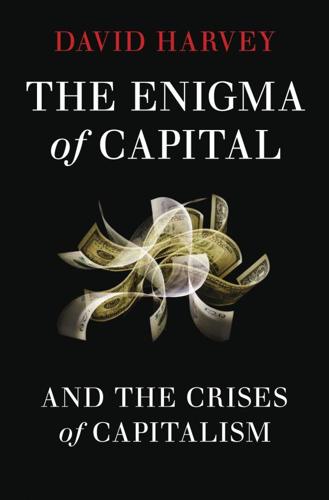
The Enigma of Capital: And the Crises of Capitalism
by
David Harvey
Published 1 Jan 2010
A greased slope can result in downward slippage just as easily as it can facilitate upward momentum. The money that can be made (and sometimes lost) out of creating new geographies and new space relations is too often ignored as a fundamental aspect of the reproduction of capitalism. The social critic Thorstein Veblen, writing in the early years of the twentieth century, surmised that the wealth of the ‘leisure class’ (as he called them) in the United States derived as much from speculations associated with land and urban development as it did from the more frequently touted sphere of industrial production.

The Age of Stagnation: Why Perpetual Growth Is Unattainable and the Global Economy Is in Peril
by
Satyajit Das
Published 9 Feb 2016
Theologians, like Reinhold Niebuhr, saw society as enslaved to its productive process, reversing the normal process of producing to satisfy consumption needs. Economists dismiss the notion of overproduction, arguing that supply creates its own demand (known as Say's law). They view consumer needs as essentially unlimited, with people wanting more and better goods. Building on Thorstein Veblen's idea of conspicuous consumption, American journalist Vance Packard showed how people's desire for goods was cultivated through advertising. His 1957 book The Hidden Persuaders detailed the use of (often subliminal) psychological techniques, especially hedonism, fashion, status, and fear of its loss, to manipulate expectations and induce desire for products.

No Such Thing as a Free Gift: The Gates Foundation and the Price of Philanthropy
by
Linsey McGoey
Published 14 Apr 2015
He proposed the idea of a ‘single land tax’ on any community resources rooted in nature, including the physical land increasingly dominated by long swaths of rail track; he thought this would help to tame rentier profits: the tendency for owners to benefit from increases in the value of a commodity regardless of any specific investment by the owner. His stance, detailed in his masterpiece Progress and Poverty, won him legions of influential followers: As the economist Michael Hudson writes, Thorstein Veblen did his best to impress the importance of George’s work on his fellow economists. But by Veblen’s time, the discipline of ‘economics was in the throes of a counter-revolution sponsored by large landholders, bankers, and monopolists … The new post-classical mainstream accepted existing property rights and privileges as a “given.”’6 Will later historians and economists look back at public education and see its privatization as a ‘given’?
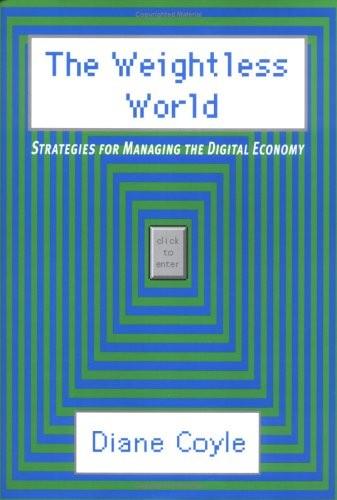
The Weightless World: Strategies for Managing the Digital Economy
by
Diane Coyle
Published 29 Oct 1998
Gillian Tindall (1995) Celestine, Sinclair-Stevenson, London. Robert Tressell (1986; first published 1955) The Ragged Trousered Philanthropists, Grafton Books, London. William Turner (1992) Riot! The Story of the East Lancashire Loom Breakers in 1826, Lancashire The Weightless World 242 County Books, Preston. Thorstein Veblen (first published 1899) The Theory of the Leisure Class. Sallie Westwood & John Williams (1997) Imagining Cities, Routledge, London. Jeffrey Williamson (March 1996) ‘Globalization and inequality then and now’, National Bureau of Economic and Social Research Working Paper no. 5491, National Bureau of Economic and Social Research, Cambridge, MA.

Labyrinths
by
Jorge Luis Borges
,
Donald A. Yates
,
James E. Irby
,
William Gibson
and
André Maurois
Published 1 Jan 1962
I believe we can answer this question easily and that there is no problem here. I believe our tradition is all of Western culture, and I also believe we have a right to this tradition, greater than that which the inhabitants of one or another Western nation might have. I recall here an essay of Thorstein Veblen, the North American sociologist, on the pre-eminence of Jews in Western culture. He asks if this pre-eminence allows us to conjecture about the innate superiority of the Jews, and answers in the negative; he says that they are outstanding in Western culture because they act within that culture and, at the same time, do not feel tied to it by any special devotion; “for that reason,” he says, “a Jew will always find it easier than a non-Jew to make innovations in Western culture”; and we can say the same of the Irish in English culture.
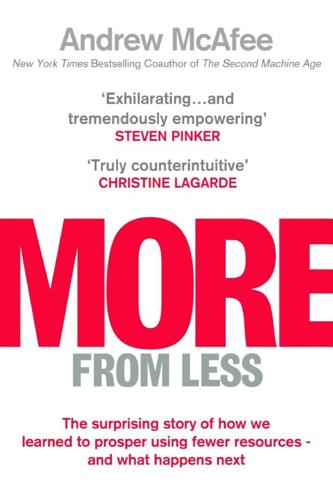
More From Less: The Surprising Story of How We Learned to Prosper Using Fewer Resources – and What Happens Next
by
Andrew McAfee
Published 30 Sep 2019
Fighting Our Animal Urges The other reason high prices might not rescue animals is that we humans sometimes like high prices. With most products, demand goes down when prices go up, all other things being equal. But with “Veblen goods,” something very different happens: higher prices cause demand to go up. Such products are named for Thorstein Veblen, the American economist and sociologist who coined the phrase conspicuous consumption. Veblen goods such as luxury cars, designer clothes, and fine art are valued in large part because they’re expensive. They signal the affluence and high status of their owners. Some animal products are Veblen goods, which is bad news for the animals.
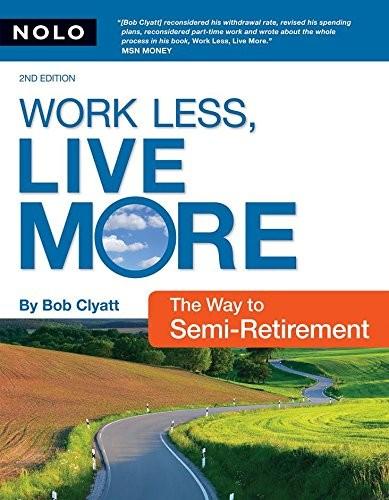
Work Less, Live More: The Way to Semi-Retirement
by
Robert Clyatt
Published 28 Sep 2007
The Industrial Revolution Sociologist Juliet Schor, a seminal researcher in the field of work and leisure, makes clear that the awful work conditions normally associated with the past began only in the mid 1800s with the Industrial Revo lution, when workers were coerced or forced into working long hours. 48 | Work Less, Live More Even at the height of the Industrial Revolution, when Americans were bent on building railroads, factories, and the infrastructure of an industrial economy, they were also busy building strong communities and a better society around new universities, libraries, museums, parks, and other institutions. From the archetypal semi-retiree Ben Franklin in the 1700s to Andrew Carnegie 100 years later, along with millions of unheralded folks, Americans have been actively engaged in building a vibrant public life outside the sphere of paid work and business. Gentlemen of Leisure In 1899, Thorstein Veblen wrote the delightful The Theory of the Leisure Class, which attempted to catalogue a sociology of wealth, consumption, and leisure back to the cave dwellers. He documents well the Gentlemen of Leisure living off inherited wealth and their tragicomic need for conspicuous consumption of goods to maintain social standing.

Servant Economy: Where America's Elite Is Sending the Middle Class
by
Jeff Faux
Published 16 May 2012
Moreover, understanding it required tools beyond the economists’ training: engineering, psychology, politics, management, marketing, labor relations, law, and, most of all, the study of how complex institutions behave and change over time. This broader, more eclectic “institutionalist” approach to economics has a distinguished U.S. intellectual tradition reaching back to figures such as Thorstein Veblen, John R. Commons, and Adolph Berle. But by the late 1970s, their work was largely swept outside the economic policy mainstream—as were prominent contemporary economists who pushed at the narrow boundaries of the profession. These included John Kenneth Galbraith, whose widely read books dissecting the behavior of the modern corporation were deemed by the synthesis majority as insufficiently mathematical; Nobel Prize winner Wassily Leontief, whose very mathematical “input output” methodology analyzing the flow of resources to and from economic sectors made him seem too friendly toward planning; and the younger Lester Thurow of the Massachusetts Institute of Technology, who seemed too interested in studying the way businesspeople actually behaved and the effect of their behavior on the distribution of income and wealth.
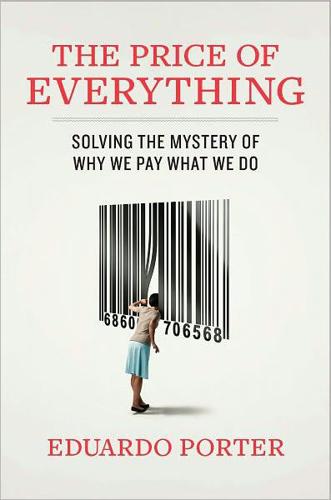
The Price of Everything: And the Hidden Logic of Value
by
Eduardo Porter
Published 4 Jan 2011
But it is hard to argue that the number alone merits a premium of $13,999,905 over the standard fee for a regular license plate. This behavior is surprisingly common, however. Paying high prices for pointless trinkets is just an expensive way to show off. In his famous Theory of the Leisure Class, the nineteenth-century American social theorist Thorstein Veblen argued that the rich engaged in what he dubbed “conspicuous consumption” to signal their power and superiority to those around them. In the 1970s, the French sociologist Pierre Bourdieu wrote that aesthetic choices served as social markers for those in power to signal their superiority and set themselves apart from inferior groups.

The New New Thing: A Silicon Valley Story
by
Michael Lewis
Published 29 Sep 1999
An hour after Clark phoned, he picked me up in one of his designer sports cars. He wore dark sunglasses and the pained expression of a man enduring the aftershocks of two bottles of fine Burgundy. I lobbed into the haze a series of conversation starters before he took a swing at one of them: a book I had first mentioned a few weeks before, Thorstein Veblen's The Engineers and the Price System. Veblen was a quixotic social theorist with an unfortunate taste for the wives of his colleagues in the Stanford economics department. Between trysts he coined many poignant phrases, among them "leisure class" and "conspicuous con- Page 30 sumption." Back in 1921 Veblen had predicted that engineers would one day rule the U.S. economy.
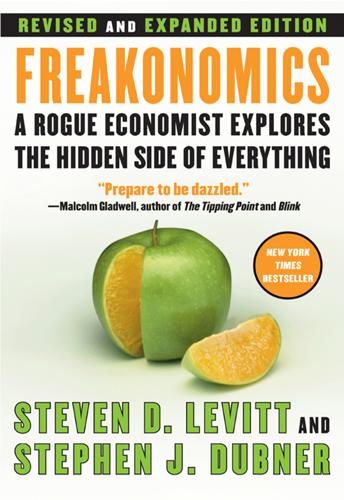
Freakonomics: A Rogue Economist Explores the Hidden Side of Everything
by
Steven D. Levitt
and
Stephen J. Dubner
Published 11 Apr 2005
Wall Street Journal, March 16, 2004, which cites an Institute of Medicine report concluding that “there is no scientific basis for the recommendation [of eight glasses of water a day] and that most people get enough water through normal consumption of foods and beverages.” ADAM SMITH is still well worth reading, of course (especially if you have infinite patience); so too is Robert Heilbroner’s The Worldly Philosophers (New York: Simon & Schuster, 1953), which contains memorable profiles of Smith, Karl Marx, Thorstein Veblen, John Maynard Keynes, Joseph Schumpeter, and other giants of economics. 1. WHAT DO SCHOOLTEACHERS AND SUMO WRESTLERS HAVE IN COMMON? THE ISRAELI DAY-CARE STUDY: See Uri Gneezy and Aldo Rustichini, “A Fine Is a Price,” Journal of Legal Studies 29, no. 1 (January 2000), pp. 1–17; and Uri Gneezy, “The ‘W’ Effect of Incentives,” University of Chicago working paper.
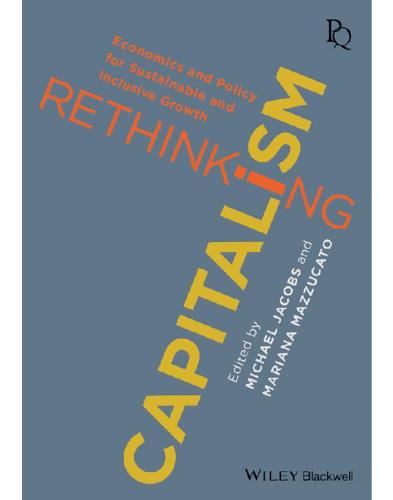
Rethinking Capitalism: Economics and Policy for Sustainable and Inclusive Growth
by
Michael Jacobs
and
Mariana Mazzucato
Published 31 Jul 2016
And when that historical reality is of an innovative economy, it will by definition be a reality that is always in the process of change. Notes 1 See W. Lazonick, ‘The theory of the market economy and the social foundations of innovative enterprise’, Economic and Industrial Democracy, vol. 24, no. 1, 2003, pp. 9–44. 2 E. Wais, ‘Trained incapacity: Thorstein Veblen and Kenneth Burke’, The Journal of the Kenneth Burke Society, vol. 2, no. 1, 2005, http://kbjournal.org/wais (accessed 28 March 2016). 3 On the methodologies of Marx and Schumpeter, see W. Lazonick, Competitive Advantage on the Shop Floor, Cambridge MA, Harvard University Press, 1990, chs. 1 and 2; ‘The integration of theory and history: methodology and ideology in Schumpeter’s economics’, in L.
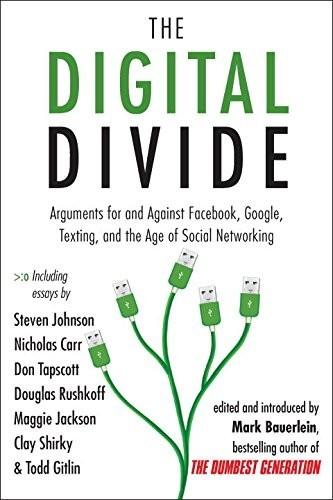
The Digital Divide: Arguments for and Against Facebook, Google, Texting, and the Age of Social Netwo Rking
by
Mark Bauerlein
Published 7 Sep 2011
Like Toffler and Gladwell, Battelle is all for bringing leisure time into the marketplace:On the Internet, it can be argued, all intent is commercial in one way or another, for your very attention is valuable to someone, even if you’re simply researching your grandmother’s genealogy, or reading up on a rare species of dolphin. Chances are you’ll see plenty of advertisements along the way, and those links are the gold from which search companies spin their fabled profits. Battelle wants to press home the importance of multiple searches to advertisers. He uses the following quotation to make his point:Thorstein Veblen, the early-twentieth-century thinker who coined the term “conspicuous consumption,” once quipped, “The outcome of any serious research can only be to make two questions grow where only one grew before” . . . In fact, Pew research shows that the average number of searches per visit to an engine [that is, a search engine, like Google] is nearly five . . .

The Corruption of Capitalism: Why Rentiers Thrive and Work Does Not Pay
by
Guy Standing
Published 13 Jul 2016
Early in the twentieth century, financiers in industrialised countries sowed the seeds for debt deflation by channelling funds into imperialistic ventures, drawn by promises of spectacular riches in exotic places. This led to what the British economist John Hobson depicted as systemic underconsumption at home. In the USA, critics such as Thorstein Veblen saw finance distorting production and, in Germany as early as 1910, Rudolf Hilferding warned against financial capitalism for similar reasons. Finance fuelled the imperialistic rivalries that contributed to the First World War. Once an exhausted peace had been restored, Europe was afflicted by debt deflation, partly due to US demands for payment for armaments it had supplied to the UK and France.
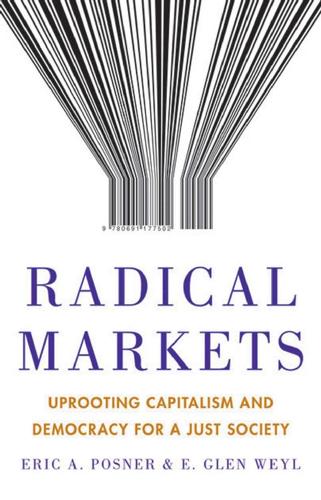
Radical Markets: Uprooting Capitalism and Democracy for a Just Society
by
Eric Posner
and
E. Weyl
Published 14 May 2018
Common intuition and psychological research tell us that the accumulation of goods beyond a basic threshold does not lead to a happier life and that experiences are more fulfilling than possessions.68 Even economists have gotten into the act. And not just Karl Marx, who railed against “commodity fetishism.” Since Thorstein Veblen’s 1899 Theory of the Leisure Class—which argued that people often buy goods for “conspicuous consumption” (to show that they are wealthier than other people), and not because these goods directly contribute to their well-being—a dissident strain of economics has emphasized the pathologies of private property in the market system.69 A COST would also encourage attachment to communities and civic engagement, which have sometimes been damaged by capitalism.
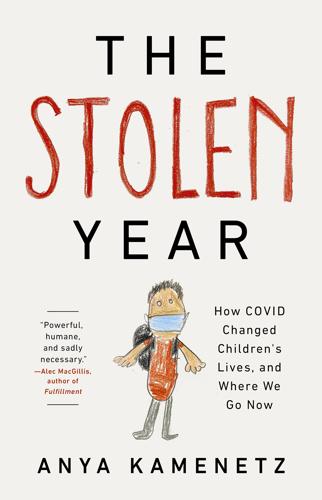
The Stolen Year
by
Anya Kamenetz
Published 23 Aug 2022
This goes back to the assumption that mothers should not work, mothers should be at home taking care of their children.” Eligibility for day nurseries followed the four Ds: they were open to women whose husbands were disabled, drunkards, had deserted them, or died. Wealthy, usually white women ran these programs as personal crusades. Michel quotes the sociologist Thorstein Veblen, arguing that Victorian women’s philanthropy of this kind was a socially acceptable means of displaying their husbands’ wealth. These women were at the top of the social hierarchy, and their children were cared for at home by domestic servants. The problem was, the day nursery benefactors had a profound ambivalence about what they were doing, because they sentimentally preferred mother care.
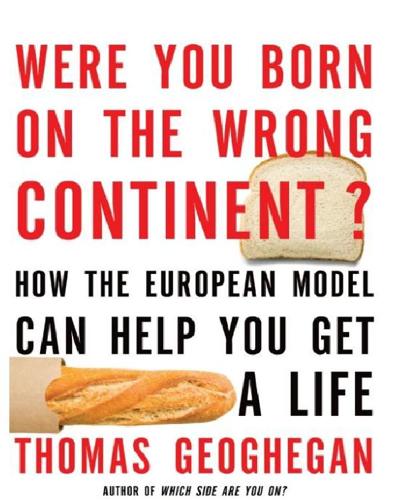
Were You Born on the Wrong Continent?
by
Thomas Geoghegan
Published 20 Sep 2011
That’s the first thing that could explain it: the rich can’t blow the same amount of money as our rich do on what they get back as public goods. That’s the whole point of the chapter about Barbara and Isabel. The second big reason is the chilling effect that even an unequal social democracy has on “flaunting it,” because at least people pay lip service to equality. After all, Thorstein Veblen wrote The Theory of the Leisure Class in what was the Gilded Age, not in the more egalitarian post–New Deal 1950s, when our savings rate was high. (While Galbraith may have scoffed at our private consumption, people were not drowning in private consumer debt.) It’s not just equality but the spirit of equality that has held down Veblen-like conspicuous consumption: perhaps an uneasiness around working people who have real political power at the firms where they work.

All Your Base Are Belong to Us: How Fifty Years of Video Games Conquered Pop Culture
by
Harold Goldberg
Published 5 Apr 2011
In the coming years, Hawkins had everyone from racing ace Richard Petty to baseball coaching legend Earl Weaver appear in sports games. Yet Madden was the franchise that made history, earning more than $3 billion since it was first released. Much of that success was due to a new marketing plan for games, a kind of preplanned obsolescence and keep-up-with-the-Joneses business ethic that would have given social economist Thorstein Veblen pause: If you didn’t have the new Madden, packed with this year’s players, this year’s stats, and this year’s plays, you weren’t up to date. You weren’t as cool as your game-playing neighbor who procured the newest version. Fans bought the hype of videogame-style conspicuous consumption then, and they buy it to this day.
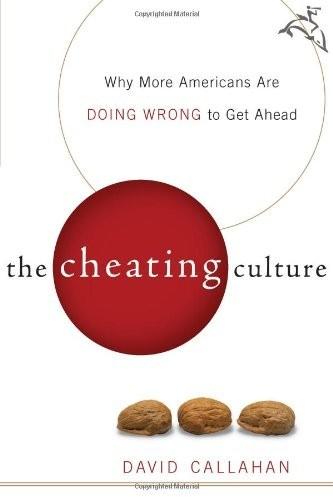
The Cheating Culture: Why More Americans Are Doing Wrong to Get Ahead
by
David Callahan
Published 1 Jan 2004
He's more likely to look up than down—comparing himself to the multimillionaire celebrities he works with every day. As he does, he may not feel so lucky. He might even feel poor. The reason for this is that most human beings think about their well-being in terms relative to those who share their immediate community, as Thorstein Veblen pointed out a century ago in The Theory of the Leisure Class and as Robert Frank has discussed in some detail in his book Luxury Fever. Absolute well-being doesn't matter as much as it should. Most of us would rather earn $100,000 a year in an organization where nobody makes more than $90,000 than make $110,000 at a job where all our colleagues are paid $200,000.

Phishing for Phools: The Economics of Manipulation and Deception
by
George A. Akerlof
,
Robert J. Shiller
and
Stanley B Resor Professor Of Economics Robert J Shiller
Published 21 Sep 2015
Lawrence Lessig, Republic Lost: How Money Corrupts Congress—And a Plan to Stop It (New York: Hachette Book Group, 2011), p. 266. 39. Ibid., p. 268. Afterword: The Significance of Phishing Equilibrium 1. Of course there are also quite a few who have not accepted this “conventional wisdom.” In this regard, two great classics are Thorstein Veblen, The Theory of the Leisure Class: An Economic Study of the Evolution of Institutions (New York: Macmillan, 1899), and John Kenneth Galbraith, The Affluent Society (Boston: Houghton Mifflin, 1958). Much more recently, in two companion articles, Jon Hanson and Douglas Kysar have documented how departures from economic rationality (especially as depicted in behavioral economics) are an invitation to “manipulation.”
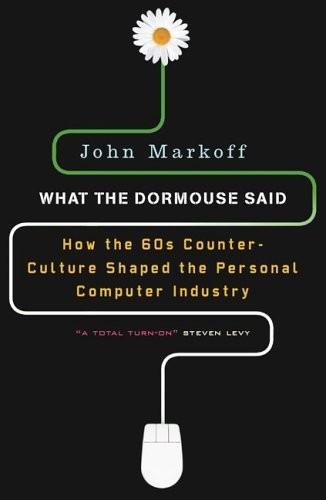
What the Dormouse Said: How the Sixties Counterculture Shaped the Personal Computer Industry
by
John Markoff
Published 1 Jan 2005
Although it was partially torn down in 1963 by developers, it was for many years the center of the Midpeninsula intellectual underground in the fifties, home to an eclectic group of artists, authors, communists, and other ne’er-do-wells. The Lane and the surrounding neighborhood had once been known as “Sin Hollow,” and the community traced its roots all the way back to the early days of Stanford itself.22 Perry Lane’s alumni included Thorstein Veblen, a radical economist and author of The Theory of the Leisure Class, a biting indictment of the upper crust of American society. Veblen taught at Stanford for only three years at the turn of the century, but he left a lasting impression. The economist arrived at one faculty tea with a young woman who was warily introduced by his host as Professor Veblen’s “daughter.”

This Will Make You Smarter: 150 New Scientific Concepts to Improve Your Thinking
by
John Brockman
Published 14 Feb 2012
Hence, the peahen can know that the individual displaying the huge tail is a strong one or else it could not have survived with that extreme tail. Among humans, you have what economists call costly signals, ways to show that you have something of value. The phenomenon of conspicuous consumption was observed by sociologist Thorstein Veblen in 1899: If you want to prove you have a lot of money, you have to waste it—that is, use it in a way that is absurd and idiotic, because only the rich can do so. But do it conspicuously, so that other people will know. Waste is a costly signal of the depth of a pile of money. Handicaps, costly signals, intense eye contact, and rhetorical gestures are all about proving that what seems so simple really has a lot of depth.
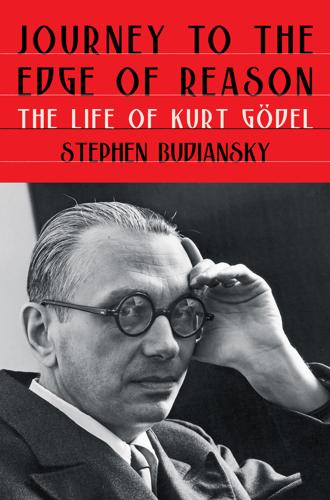
Journey to the Edge of Reason: The Life of Kurt Gödel
by
Stephen Budiansky
Published 10 May 2021
Moreover, no elaborate labs or facilities would need to be constructed: “It requires little—a few men, a few students, a few rooms, books, blackboard, chalk, paper, and pencils.”13 Admitting that “mathematicians, like cows in the dark, all look alike to me,” Flexner tasked Veblen with the job of assembling his blue-ribbon herd.14 Veblen had long had his own dream of building in Princeton a mathematical utopia. Like Flexner he also had a considerable talent for lavishly spending other people’s money in the cause of intellectual endeavor. A nephew of the famous sociologist Thorstein Veblen, he was the grandson of Norwegian immigrants who had cleared the land and built a house and barns with their own hands on a series of homesteads in the upper Midwest, and then sent all nine of their children to college. At the University of Iowa Oswald Veblen had won two prizes: one in mathematics, the other in sharpshooting.

Markets, State, and People: Economics for Public Policy
by
Diane Coyle
Published 14 Jan 2020
The remainder of this chapter discusses some significant external effects in consumption, or to put it another way, social influences on individuals’ preferences (assumption A2 fails—see box 1.4). One of the earliest and best-known examples of social influence is the concept of conspicuous consumption, a term coined by Thorstein Veblen. Veblen saw consumption as a signal of status, rather than its conventional interpretation in economics as the satisfaction of wants or preferences enabled by high income. The idle rich would spend on increasingly lavish signs of their social status and wealth, Veblen said. A similar concept, due to Fred Hirsch, is the idea of positional goods.
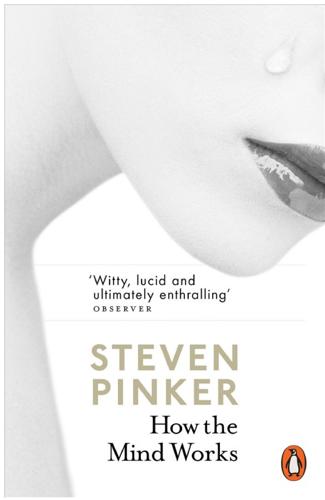
How the Mind Works
by
Steven Pinker
Published 1 Jan 1997
RIVALS People everywhere strive for a ghostly substance called authority, cachet, dignity, dominance, eminence, esteem, face, position, preeminence, prestige, rank, regard, repute, respect, standing, stature, or status. People go hungry, risk their lives, and exhaust their wealth in pursuit of bits of ribbon and metal. The economist Thorstein Veblen noticed that people sacrificed so many necessities of life to impress one another that they appear to be responding to a “higher, spiritual need.” Status and virtue are close in people’s minds, as we see in words like chivalrous, classy, courtly, gentlemanly, honorable, noble, and princely, and their opposites ill-bred, low-class, low-rent, mean, nasty, rude, shabby, and shoddy.
…
The very uselessness of art that makes it so incomprehensible to evolutionary biology makes it all too comprehensible to economics and social psychology. What better proof that you have money to spare than your being able to spend it on doodads arid stunts that don’t fill the belly or keep the rain out but that require precious materials, years of practice, a command of obscure texts, or intimacy with the elite? Thorstein Veblen’s and Quentin Bell’s analyses of taste and fashion, in which an elite’s conspicuous displays of consumption, leisure, and outrage are emulated by the rabble, sending the elite off in search of new inimitable displays, nicely explain the otherwise inexplicable oddities of the arts. The grand styles of one century become tacky in the next, as we see in words that are both period labels and terms of abuse (gothic, mannerist, baroque, rococo).
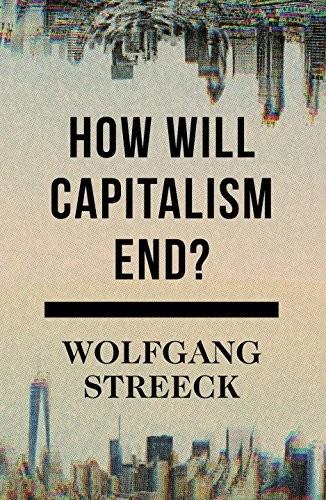
How Will Capitalism End?
by
Wolfgang Streeck
Published 8 Nov 2016
That the building of authoritative regulatory institutions under capitalism tends to lag behind the dynamic growth of voluntary trading relations should not come as a surprise to students of contemporary capitalism or regulatory policy and should in fact be assumed to be in the nature of the beast. 20Polanyi, The Great Transformation. 21Hall and Soskice, ‘An Introduction to Varieties of Capitalism’. 22Polanyi, The Great Transformation, pp. 68–77. 23This was different before sociology and economics parted company. See, for example, Thorstein Veblen (The Theory of the Leisure Class, New York: Penguin 1994 [1899]) and his theory of conspicuous consumption. 24The present section is inspired by a number of recent papers by Jens Beckert. See Jens Beckert, Imagined Futures: Fictionality in Economic Action, MPIfG Discussion Paper 11/8, Cologne: Max Planck Institute for the Study of Societies 2011; Jens Beckert, ‘The Transcending Power of Goods: Imaginative Value in the Economy’.

Uneasy Street: The Anxieties of Affluence
by
Rachel Sherman
Published 21 Aug 2017
In contrast to the worthy middle, both the rich and the poor are often represented as lacking the basic values of hard work and prudence. Poor people have often been portrayed as lazy spendthrifts, typically in racially coded images such as that of the “welfare queen” of the 1980s, and therefore as “undeserving.”18 Wealthy people have likewise been cast as both lazy and profligate, at least since 1899, when critical economist Thorstein Veblen wrote The Theory of the Leisure Class, the book that introduced the concept of “conspicuous consumption.” In Veblen’s theory, highly visible consumption primarily functions as a mechanism of status competition among men. Veblen also paints the wealthy as uninterested in work—indeed, one of the functions of conspicuous consumption (and the complementary concept of “conspicuous leisure”) is to demonstrate publicly the wealthy man’s distance from productive labor.19 The theme of wealthy people as conspicuous consumers remains a mainstay of American culture, especially in moments of greater inequality.
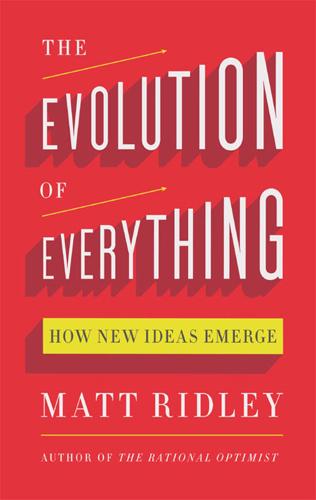
The Evolution of Everything: How New Ideas Emerge
by
Matt Ridley
As the nineteenth century ended robber-baron industrialists were only too eager to rush off to form cartels, or welcome government regulations, the better to extinguish wasteful competition. Yet instead of earning the ridicule of the economics profession for this cronyism – as they had done from Adam Smith – they were now applauded. Thought leaders of the left, like Edward Bellamy and Thorstein Veblen, demanded an end to duplication and fragmentation in business. There must be a plan, a planner and a single structure, they agreed. Bellamy’s vision of the future, in his immensely influential and bestselling novel Looking Backward, has everybody in the future working for a Great Trust and shopping at identical, government-owned stores for identical goods.

Prosperity Without Growth: Foundations for the Economy of Tomorrow
by
Tim Jackson
Published 8 Dec 2016
This kind of materialism, flawed though it may be, even offers some kind of substitute for religious consolation. In a secular world, having something to hope for is particularly important when things are going badly. Retail therapy works for a reason.27 Novelty plays an absolutely central role in all this. In the first place, of course, novelty has always carried information about social status. As Thorstein Veblen pointed out over a century ago, ‘conspicuous consumption’ proceeds through novelty. Many of the latest consumer appliances and fashions are accessible at first only to the rich. New products are inherently expensive, because they are produced on a small scale. They may even be launched at premium prices deliberately to attract those who can afford to pay for social distinction.28 After distinction comes emulation.
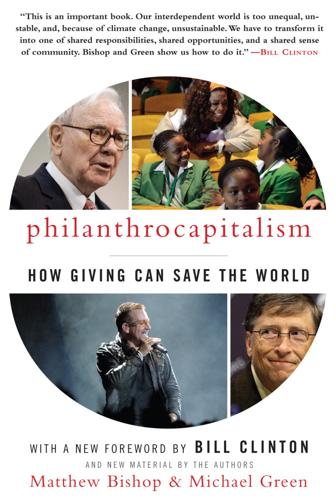
Philanthrocapitalism
by
Matthew Bishop
,
Michael Green
and
Bill Clinton
Published 29 Sep 2008
Nearly always, giving is a selfish pleasure.” The self-made billionaire is used to being an alpha-type personality, but how best to prove his superiority? Perhaps, by giving, he can assert his dominance—not just to the recipient of his gift but also to the whole world. A century ago, economist Thorstein Veblen argued that the wealthy used conspicuous consumption to establish their social status; does philanthropy take that to the next level, as conspicuous nonconsumption? “Wealthy donors were generally more focused on their peers, rather than those outside their class, as the audience for their philanthropy,” concludes Ostrower in her study of philanthropists.

Transaction Man: The Rise of the Deal and the Decline of the American Dream
by
Nicholas Lemann
Published 9 Sep 2019
In 1932, when Berle was thirty-seven, the study was published: The Modern Corporation and Private Property, which became a classic almost instantly and still stands as the main intellectual achievement of Berle’s life. Other intellectuals besides Berle had noticed how trusts and robber barons had been succeeded by corporations that operated on an even grander scale and that aspired to permanence. The final book by the radical economist Thorstein Veblen, Absentee Ownership: Business Enterprise in Recent Times (1923), was mainly about corporations. So was Main Street and Wall Street (1927), by William Z. Ripley, a professor at Harvard Business School who was a mentor of Berle’s. Both of these books were essentially hostile to corporations, focusing on the shenanigans—or, to use Ripley’s memorable language, “prestidigitation, double shuffling, honey-fugling, hornswaggling, and skullduggery”—that they used to disadvantage their investors.

Head, Hand, Heart: Why Intelligence Is Over-Rewarded, Manual Workers Matter, and Caregivers Deserve More Respect
by
David Goodhart
Published 7 Sep 2020
Arlie Russell Hochschild, in her book Strangers in Their Own Land: Anger and Mourning on the American Right, ventured into the heart of red state America in Louisiana and over the course of five years befriended pipefitters, plant operators, truck drivers, telephone repairmen, postal workers, and so on, most of whom could no longer take pride in their work.27 She talked to one man who said that the more you stand on your own two feet and the less you depend on the government, the higher your status, echoing the observation of nineteenth-century sociologist Thorstein Veblen, who observed (in her words) that our distance from necessity tends to confer honor. Hochschild writes: “You are a stranger in your own land. You do not recognize yourself in how others see you. It is a struggle to feel seen and honored… [T]hrough no fault of your own, and in ways that are hidden, you are slipping backward. “… Most people I talked to loved the South, loved Louisiana, loved their town or bayou.
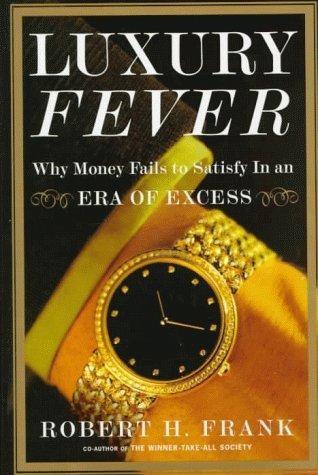
Luxury Fever: Why Money Fails to Satisfy in an Era of Excess
by
Robert H. Frank
Published 15 Jan 1999
By a simple and easily achieved rearrangement of our current consumption incentives, we can effectively enrich ourselves by literally trillions of dollars a year. Seldom in our history have our moral imperatives and our naked self-interest been so closely aligned. CHAPTER 2 THE LUXURY SPENDING BOOM The economist Thorstein Veblen’s term conspicuous consumption was inspired by the spectacular excesses of America’s Gilded Age—roughly, from 1890 until the beginning of World War I. Among the most visible players of that era were the high-living descendants of railroad tycoon Commodore Cornelius Vanderbilt. By 1900, the clan had constructed eight lavish mansions between 51st and 59th Streets in Manhattan—including One 57th Street, whose 137 rooms made it the largest house ever built in an American city.1 The Vanderbilts also built 10 major summer estates, including Newport, Rhode Island’s Marble House, an $11 million birthday present from Cornelius Vanderbilt II to his wife Alva in 1892.2 (During the 1890s, a construction foreman earned about $1.25 a day and a common laborer could be hired for as little as 2 cents an hour.)3 To this day, George Vanderbilt’s Biltmore Estate in Asheville, North Carolina, a 250-room Renaissance-style chateau completed in 1895, remains the largest private house ever built in America.4 Of these grandiose expenditures by the superrich, Veblen wrote that “since the consumption of these … excellent goods is an evidence of wealth, it becomes honorific; and conversely, the failure to consume in due quantity and quality becomes a mark of inferiority and demerit.”5 It was Veblen’s view, in other words, that the rich often spent lavishly merely to demonstrate to others that they could afford to do so.
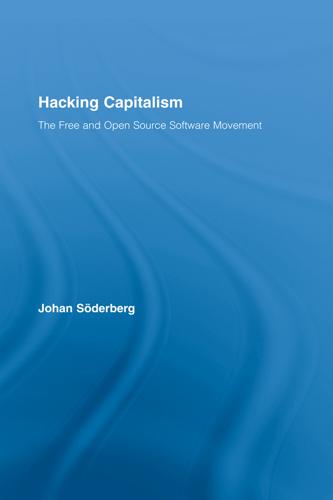
Hacking Capitalism
by
Söderberg, Johan; Söderberg, Johan;
Already in 1899, Torsten Veblen wrote his famous remarks on the conspicuous consumption of the upper classes: “If, as is sometimes assumed, the incentive to accumulation were the want of subsistence or of physical comfort, then the aggregate economic wants of a community might conceivably be satisfied at some point in the advance of industrial efficiency; but since the struggle is substantially a race for reputability on the basis of an invidious comparison, no approach to a definitive attainment is possible.” Thorstein Veblen, The Theory of the Leisure Class (London: Compton Printing, 1970), 39. 8. Guy Debord, The Society of the Spectacle (New York: Zone books, 1994). 9. In Economies of Signs & Space, a standard reference in discussions about the aesthetisation of the economy, Scott Lash and John Urry skips over the concept of use value in two sentences and with a reference to Jean Baudrillard.

Democracy Incorporated
by
Sheldon S. Wolin
Published 7 Apr 2008
Among the influential studies are James Burnham, The Managerial Revolution (New York: John Day, 1941); Peter Drucker, The Practice of Management (London: Heinemann, 1956); and Chandler and Daems, Managerial Hierarchies; and, more critically, Herman, Corporate Control, Corporate Power. The great forerunner of these studies was Thorstein Veblen. See his The Theory of Business Enterprise (New York: Mentor, 1904, 1932) and The Engineers and the Price System (New York: Harcourt, 1921), 1963. 18. On the opposition between reason and passion, see The Federalist, No. 49, p. 343; No. 50, p. 346; No. 58, p. 396. On passion and interest, see No. 10, p. 61; on passion as strong, irregular, and selfish, see No. 6, p. 29; No. 20, p. 128; No. 41, pp. 264, 275; No. 42, p. 283; No. 63, pp. 423, 425. 19.

Dawn of the New Everything: Encounters With Reality and Virtual Reality
by
Jaron Lanier
Published 21 Nov 2017
I was astounded by how steamy green the terrain became as we raced eastward. When Manhattan came into view, I became so excited that it was like a seizure. We didn’t stop there, but went on to the little upstate campus. I was absolutely unprepared for the snobbery. Almost all the kids were from wealthy families. I had read Thorstein Veblen, a favorite of my father’s, and he wrote the script these kids lived by. Every expression was a complaint. “Born too late,” went a student-penned folk song. Poor us, we missed the sixties. There was spectacular, showy waste. Esoteric shiny sports cars wantonly junked up in purposeful accidents on a Friday night.

Machines of Loving Grace: The Quest for Common Ground Between Humans and Robots
by
John Markoff
Published 24 Aug 2015
That lesson carries forward in the differing approaches of the software engineers, AI researchers, roboticists, and hackers who are the designers of these future systems. It should be obvious that Bill Joy’s warning that “the future doesn’t need us” is just one possible outcome. It is equally apparent that the world transformed by these technologies doesn’t have to play out catastrophically. A little over a century ago, Thorstein Veblen wrote an influential critique of the turn-of-the-century industrial world, The Engineers and the Price System. He argued that, because of the power and influence of industrial technology, political power would flow to engineers, who could parlay their deep knowledge of technology into control of the emerging industrial economy.

Capital Ideas: The Improbable Origins of Modern Wall Street
by
Peter L. Bernstein
Published 19 Jun 2005
He had earned his doctorate at the New School for Social Research in New York in 1941, supporting himself by selling Italian books for his father-in-law, who had been a distributor of books and newspapers in prewar Italy and was now living in the United States. Modigliani spent his days selling books, his evenings taking courses at the New School, and his nights studying. Modigliani speaks enthusiastically about the education he received at the New School. The New School had been founded in 1919 by the economists Thorstein Veblen and Wesley Mitchell and the historians Charles Beard and James Harvey Robinson as a free-form institution of higher learning for adults; over the years it had attracted many outstanding and controversial teachers. In 1933, shortly after Hitler seized power, Alvin Johnson, then president of the New School, saw a unique opportunity to bring some of Europe’s most distinguished scholars to the school.

What to Think About Machines That Think: Today's Leading Thinkers on the Age of Machine Intelligence
by
John Brockman
Published 5 Oct 2015
These might be little things, like what’s the best nearby place for Korean barbecue, based on the Internet’s increasingly complete understanding of your individual wants and needs, or big things, like an Internet service arranging your marriage. Not just the food, gifts, and flowers but your partner too. The lesson is that the software engineers, AI researchers, roboticists, and hackers who design these future systems have the power to reshape society. Nearly a century ago, Thorstein Veblen wrote an influential critique of the early twentieth-century industrial world, The Engineers and the Price System. Because of the power and influence of industrial technology, he believed that political power would flow to engineers, whose deep knowledge of technology would be transformed into control of the emerging industrial economy.
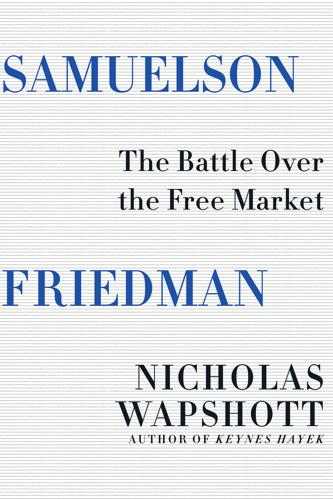
Samuelson Friedman: The Battle Over the Free Market
by
Nicholas Wapshott
Published 2 Aug 2021
Just as we can cancel two from the ratio of even numbers, so one could use Occam’s Razor to cut utility completely from the argument, ending one up with the fatuity: people do what they do. And it was largely to Americans that he directed his final remark, which reflected on his lifelong contest with Friedman over the future of economics. He quoted the American economist and archcritic of capitalism Thorstein Veblen:21 “There is no reason why theoretical economics should be a monopoly of the reactionaries.” “All my life I have tried to take this warning to heart,” Samuelson said, “and I dare call it to your favorable attention.” Four years after Samuelson’s Nobel in 1970, Friedrich Hayek was awarded the seventh Nobel Prize for economics, but his nomination was considered so controversial he was obliged to share the award with Gunnar Myrdal, a left-leaning Swedish economist and sociologist known for his work on exposing racial problems in America.
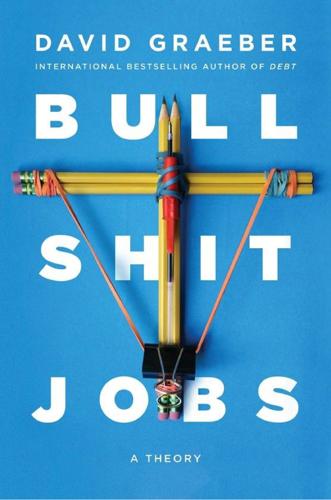
Bullshit Jobs: A Theory
by
David Graeber
Published 14 May 2018
In the latter case, most of the time, what the customer is paying for anyway is mainly just the ability to say she paid $1,500 for a haircut, or perhaps that he got his hair done by the same stylist as Kim Kardashian or Tom Cruise. We are speaking of overt displays of wastefulness and extravagance. Now, one could certainly make the argument that there’s a deep structural affinity between wasteful extravagance and bullshit, and theorists of economic psychology from Thorstein Veblen, to Sigmund Freud, to Georges Bataille have pointed out that at the very pinnacle of the wealth pyramid—think here of Donald Trump’s gilded elevators—there is a very thin line between extreme luxury and total crap. (There’s a reason why in dreams, gold is often symbolized by excrement, and vice versa.)
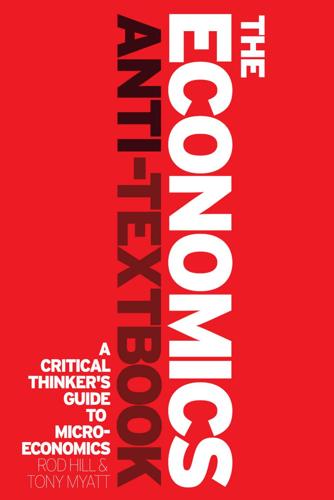
The Economics Anti-Textbook: A Critical Thinker's Guide to Microeconomics
by
Rod Hill
and
Anthony Myatt
Published 15 Mar 2010
This touches on virtually every aspect of public affairs, including foreign and military policy, international trade policy, tax policy, environmental regulation, laws about intellectual property (such as patents and copyrights), transportation policy, subsidies to business, unemployment insurance, pensions and other social income supports, and product safety regulation. More than a century ago, Thorstein Veblen (1965 [1904]: 286) wrote: ‘Representative government means, chiefly, representation of business interests. The government commonly works in the interest of the business men with a fairly consistent singleness of purpose.’ This retains more than a grain of truth today. ‘Think tanks’ funded by corporations and foundations established by the very wealthy churn out policy papers guaranteed to reach the desired conclusions; they provide talking heads for television and op-eds for the newspapers.10 Capital cities swarm with business lobbyists.

When Einstein Walked With Gödel: Excursions to the Edge of Thought
by
Jim Holt
Published 14 May 2018
Although some thought was given to making the new institute a center for economics, the founders decided to start with mathematics, because of both its universal relevance and its minimal material requirements: “a few rooms, books, blackboard chalk, paper, and pencils,” as one of the founders put it. The first appointee was Oswald Veblen (Thorstein Veblen’s nephew) in 1932, followed by Albert Einstein—who, on his arrival in 1933, found Princeton to be “a quaint and ceremonious little village of puny demigods on stilts” (or so at least he told the queen of Belgium). That same year, the institute hired John von Neumann, a Hungarian-born mathematician who had just turned twenty-nine.
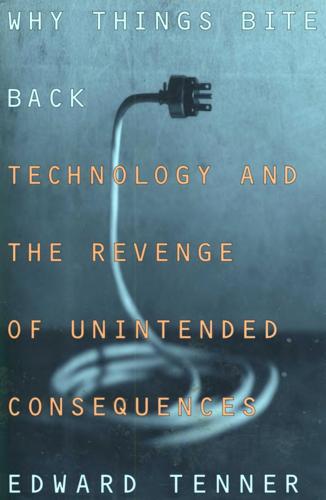
Why Things Bite Back: Technology and the Revenge of Unintended Consequences
by
Edward Tenner
Published 1 Sep 1997
Electrification of industry helped create what the historian and critic Lewis Mumford was to call a "neotechnic" era of power grids in place of steam engines and new alloys and materials alongside steel and other conventional ones. Mumford urged a new political and social order to decentralize work from grimy urban factories to smaller, electrically powered workshops dotting the countryside. The era's most celebrated social critics faulted not technology but entrenched finance and management; Thorstein Veblen urged a national industrial "network" of mechanical processes, overseen not by industrialists and bankers but by councils of engineers.26 The Apex of Optimism Americans from 188o to 1929 were probably more optimistic about the electrical, mechanical, and chemical transformation of society than any other people has ever been.
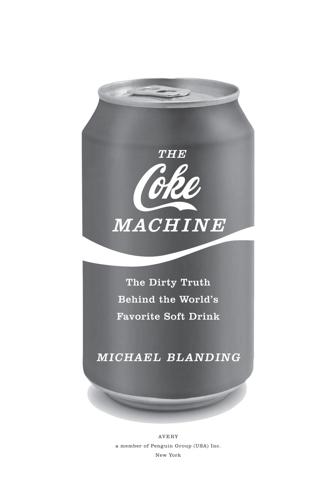
The Coke Machine: The Dirty Truth Behind the World's Favorite Soft Drink
by
Michael Blanding
Published 14 Jun 2010
Kemble and especially Samuel Hopkins Adams: Young, 215–217. Page 40 procession of smiling, fancily dressed Victorian women: Dietz, 50; Goodrum, 90. Page 40 convulsive demographic changes: Mady Schutzman, The Real Thing: Performance, Hysteria, & Advertising (Hanover, NH, and London: Wesleyan University Press, 1999), 36. Page 40 “evidence of leisure”: Thorstein Veblen, The Theory of the Leisure Class (Amherst, NY: Prometheus, 1998 [orig. pub. 1899]), 265, 171; see also Rob Walker, Buying In: The Secret NOTES 303 Dialogue Between What We Buy and Who We Are, (New York: Random House, 2008), 64–65. Page 40 “The President drinks Coke”: Paul Richard, “Andy Warhol, the Ghostly Icon: At the N.Y.

Culture and Prosperity: The Truth About Markets - Why Some Nations Are Rich but Most Remain Poor
by
John Kay
Published 24 May 2004
A discussion of the various meanings of Austrian economics, with a judicious summary-"economists (and other intellectuals in Austria today) are cognizant of-and proud of-the earlier Austrian school ... but see themselves today simply as a part of the general community of professional economists" (p. 149)-is found in Kirzner's essay in the New Palgrave. 7. Although Thorstein Veblen, whose trenchant criticism of the consumption of the rich is still readable today (Veblen [1899]), was a faculty member. However, Veblen's personal habits were as uncongenial as his views and he was asked to leave. 8. There is a-possibly intentional-trap in this quotation. At a quick reading, it seems to describe self-interested behavior.
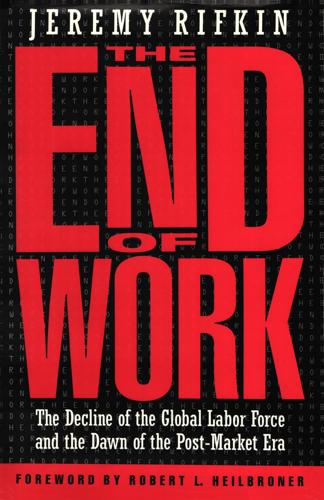
The End of Work
by
Jeremy Rifkin
Published 28 Dec 1994
So effective was the mass conversion to the new engineering values that even when the depression hit in 1929, Americans continued to defend the technological vision. They chose instead to vent their anger and fear against greedy businessmen who, in their mind, had undermined and thwarted the lofty aims and goals of the nation's new heroes-the engineers. Quite a few Americans agreed with the earlier criticism of economist and social theorist Thorstein Veblen, who, in 1921, penned a caustic frontal attack on the nation's businessmen. Veblen contended that commercial avarice and the irrationality of the marketplace were undermining the technological imperative and creating waste and inefficiencies on a monumental scale. He argued that only by entrusting the nation's economy to the professional engineers-whose noble standards stood above pecuniary and parochial concerns-could the economy be saved and the country transformed into a new Eden.
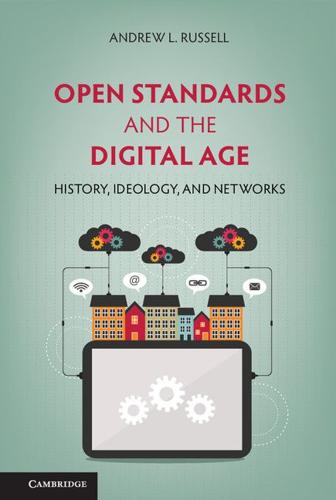
Open Standards and the Digital Age: History, Ideology, and Networks (Cambridge Studies in the Emergence of Global Enterprise)
by
Andrew L. Russell
Published 27 Apr 2014
Hoover was, in the pre-Depression era, a living and breathing icon of the triumph of rationality, organization, and the progressive spirit of the engineering profession – the “engineering method personified” in the words of one admiring colleague.2 Several of Hoover’s contemporaries – such as the social theorist Thorstein Veblen and the radical engineers Howard Scott and Morris Cooke – believed that technical expertise could reform society and engineer a new age of efficiency and abundance. But the meeting at the Department of Commerce was not some sort of revolutionary “Soviet of Technicians.” Instead, it was a meeting of the leaders of the American Engineering Standards Committee (AESC), a private group of engineers who had a more modest and pragmatic goal: to order the inconsistent patchwork of codes, tests, and standards used in American industrial practice.

If You're So Smart, Why Aren't You Happy?
by
Raj Raghunathan
Published 25 Apr 2016
Findings from studies that my coauthors (Sean Jang and Robin Soster) and I have conducted suggest that people think they are better than average in terms of positive traits (like kindness) while, at the same time, harboring negative thoughts and feelings (such as anxiety and stress) about the ability to deal and cope with everyday problems and challenges. proxy measures for . . . wealth, power, and fame: The idea that consumption behavior could be used to signal status has been around for a while and was perhaps first systematically studied by Thorstein Veblen. More recently, Robert Frank, the economist from Cornell, and others (e.g., Berger and Ward) have also explored the phenomenon. Sources: J. Berger and M. Ward, “Subtle Signals of Inconspicuous Consumption,” Journal of Consumer Research 37(4) (2010): 555–69; Frank, Luxury Fever; T. Veblen, The Theory of the Leisure Class (Oxford, UK: Oxford University Press, 2007).

Whole Earth: The Many Lives of Stewart Brand
by
John Markoff
Published 22 Mar 2022
In justifying his proposal, he noted that in 1982 he had decided that the world headed where the rich led it, and if they failed to lead, it went nowhere. In response he had run several seminars on Creative Philanthropy, trying to help a group—described as “Doughnuts”—of largely unhappy heirs to do something useful with their fortunes. It is true that many people in America do admire the wealthy, but Brand’s proposal was tone-deaf to what Thorstein Veblen had described as “conspicuous consumption”—witness pronouncements such as, “Managing luxury is a huge and tricky issue, worth a couple of chapters, ranging from the burden of multiple houses to the lethality of helicopters.” In particular, the generation who venerated Brand generally didn’t share his access to or adulation of great wealth, and it is likely that the book, had it been published, would have tarnished his reputation.
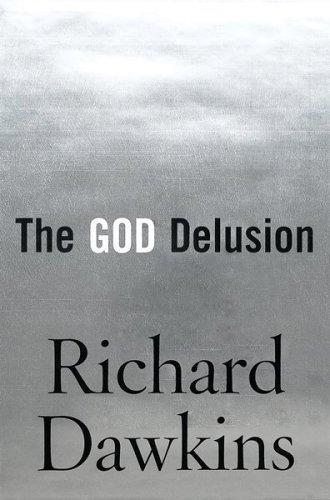
The God Delusion
by
Richard Dawkins
Published 12 Sep 2006
Reputation is important, and biologists can acknowledge a Darwinian survival value in not just being a good reciprocator but fostering a reputation as a good reciprocator too. Matt Ridley’s The Origins of Virtue, as well as being a lucid account of the whole field of Darwinian morality, is especially good on reputation.* The Norwegian-American economist Thorstein Veblen and, in a rather different way, the Israeli zoologist Amotz Zahavi have added a further fascinating idea. Altruistic giving may be an advertisement of dominance or superiority. Anthropologists know it as the Potlatch Effect, named after the custom whereby rival chieftains of Pacific north-west tribes vie with each other in duels of ruinously generous feasts.
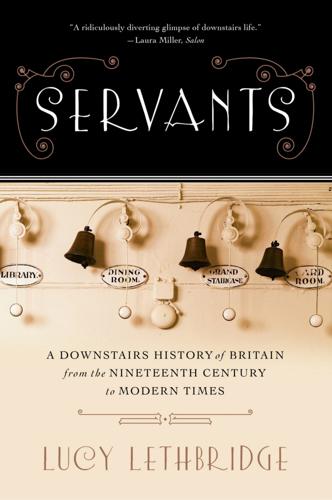
Servants: A Downstairs History of Britain From the Nineteenth Century to Modern Times
by
Lucy Lethbridge
Published 18 Nov 2013
As a domestic light in the fullest sense of the word, it was almost as sure a sign of respectability as the keeping of a gig.’13 In grand houses, gas lamps were generally confined to the servants’ hall, where they enabled the staff to work till late at night; gas was considered too smelly and too damaging to antique furniture to be used in other parts of the house. The inimitable patina of age became central to the national idea of Englishness, and to this idea, new technology was often considered positively threatening. The American economist Thorstein Veblen noted in 1892 how the attraction of old-fashioned beeswax candles to illuminate evening dinner parties was suddenly revealed when gas and electric lighting became widely available to the middle classes. The reason was said to be the flattering rosy glow that candles cast, but behind it lay a snobbery about industrial mass production.
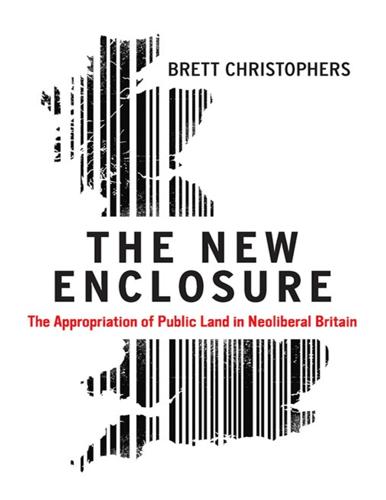
The New Enclosure: The Appropriation of Public Land in Neoliberal Britain
by
Brett Christophers
Published 6 Nov 2018
Another, associated, departure was market rule, the endeavour – no less contradictory than under neoliberalism – to ‘allow the market mechanism to be sole director of the fate of human beings and their natural environment’.1 Meanwhile, to appreciate just how central financial institutions, practices and modes of accumulation were in the same period, one need only read Giovanni Arrighi, or Georg Simmel, or Thorstein Veblen, or John Maynard Keynes.2 The last of these, for example, decried the fact that late-nineteenth-century society ‘carried to extravagant lengths the criterion of what one can call for short “the financial results”’, such that the ‘whole conduct of life was made into a sort of parody of an accountant’s nightmare … The same rule of self-destructive financial calculation governs every walk of life’ – life, in short, had been ‘financialized’.3 Finally, on the immense concentration of class power at the fin de siècle, the literature is vast.
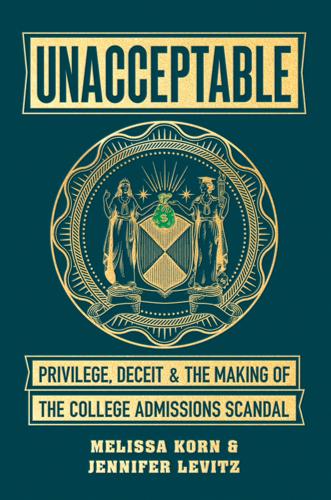
Unacceptable: Privilege, Deceit & the Making of the College Admissions Scandal
by
Melissa Korn
and
Jennifer Levitz
Published 20 Jul 2020
Woodlock was sentencing Jeffrey Bizzack, a California surfing executive who admitted to paying $250,000 to have Singer get his son into USC as a false volleyball recruit. Woodlock, a soft-spoken, erudite Reagan appointee, launched into his many questions about the case. He referenced the Greek mythological figure Procrustes, a 1930s New Yorker cartoon, and the economist and sociologist Thorstein Veblen. The sentencing went three hours and six minutes and for a while didn’t appear to be going the government’s way. But when a prosecutor argued why probation wouldn’t be appropriate, Woodlock waved his hand to cut her short. “It’s a jail case for me,” he assured her. “This is a rich person’s crime, that’s what it is.”
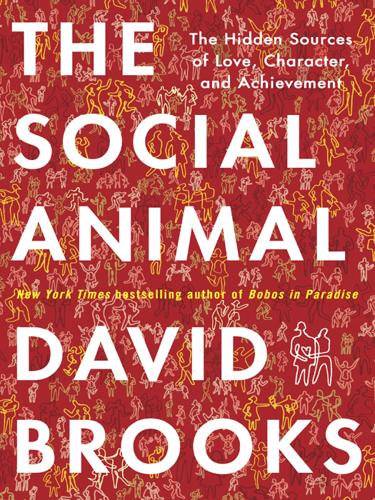
The Social Animal: The Hidden Sources of Love, Character, and Achievement
by
David Brooks
Published 8 Mar 2011
This scientism has expressed itself most powerfully, over the last fifty years, in the field of economics. Economics did not start out as a purely rationalist enterprise. Adam Smith believed that human beings are driven by moral sentiments and their desire to seek and be worthy of the admiration of others. Thorstein Veblen, Joseph Schumpeter, and Friedrich Hayek expressed themselves through words not formulas. They stressed that economic activity was conducted amidst pervasive uncertainty. Actions are guided by imagination as well as reason. People can experience discontinuous paradigm shifts, suddenly seeing the same situation in radically different ways.
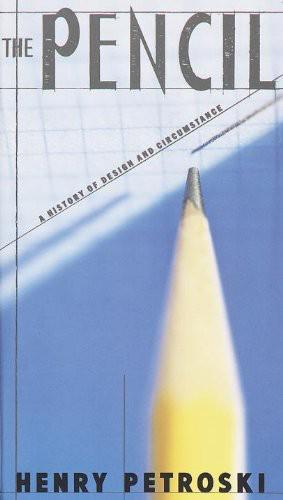
The Pencil: A History of Design and Circumstance
by
Henry Petroski
Published 2 Jan 1990
Edwin Layton has put it succinctly: The engineer is both a scientist and a businessman. Engineering is a scientific profession, yet the test of the engineer’s work lies not in the laboratory, but in the marketplace. The claims of science and business have pulled the engineer, at times, in opposing directions. Indeed, one observer, Thorstein Veblen, assumed that an irrepressible conflict between science and business would thrust the engineer into the role of social revolutionary. While Henry David Thoreau seems never to have aspired to being for very long a professional anything, let alone a professional engineer, he does seem to have had a social conscience that asserted individual rights above all.

Civilization: The West and the Rest
by
Niall Ferguson
Published 28 Feb 2011
Each organic being … has to struggle for life … As natural selection acts solely by accumulating slight, successive, favourable variations, it can produce no great or sudden modification … 26 In that sense, it might make more sense for historians to talk about an Industrial Evolution, in Darwin’s sense of the word. As the economists Thorstein Veblen and Joseph Schumpeter would later remark, nineteenth-century capitalism was an authentically Darwinian system, characterized by seemingly random mutation, occasional speciation and differential survival or, to use Schumpeter’s memorable phrase, ‘creative destruction’.27 Yet precisely the volatility of the more or less unregulated markets created by the Industrial Revolution caused consternation among many contemporaries.
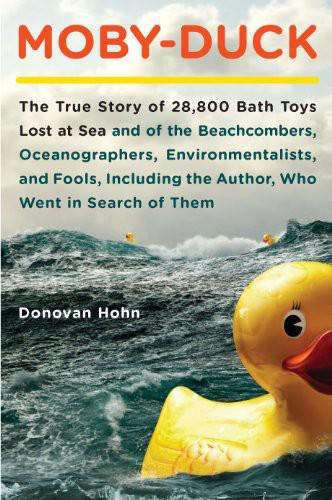
Moby-Duck: The True Story of 28,800 Bath Toys Lost at Sea and of the Beachcombers, Oceanographers, Environmentalists, and Fools, Including the Author, Who Went in Search of Them
by
Donovan Hohn
Published 1 Jan 2010
When he laughs he opens his mouth just a little, once again bringing to mind a tortoise, and makes a coughing sound, as if trying to clear his throat: heh. Giving me a tour of the Alguita, he delivered a kind of extemporaneous sermon that ranged widely, from the chemistry of polybrominated diphenyl ethers to the social critic Thorstein Veblen to Rell Sunn, the deceased Hawaiian high priestess of surfing. Moore sounded at times brilliant, a font of facts and expertise (“our research indicates that 2.3 billion pieces of plastic go down the L.A. Basin in three days”), and at times like a half-cocked conspiracy theorist (“in our economy a series of short-lived and sickly generations is more profitable than a series of long-lived and healthy ones”).
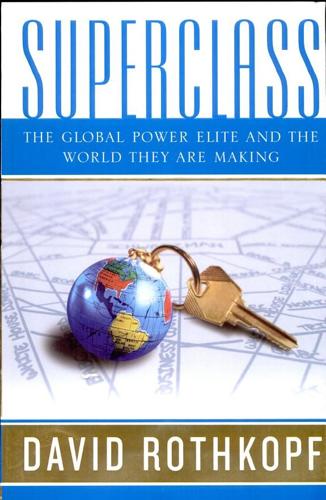
Superclass: The Global Power Elite and the World They Are Making
by
David Rothkopf
Published 18 Mar 2008
It could be related to the business cycle: Aging Internet and hedge fund millionaires and billionaires, for example, seek to be more generous in hopes of leaving a legacy. It could also be associated with the cyclical rise and fall of elites: Elites of an age known for breathtaking growth in inequity might seek to do damage control before the inevitable backlash comes. The late-nineteenth-century American social critic Thorstein Veblen would have recognized the development. The man who coined the term “conspicuous consumption” to explain what the rich spend their money on—ostentations—would probably simply see at least an element of this as a piece of the same cloth. He would probably observe that for all the very considerable good that is done by CGI and at Davos, the spirit of the times or at least of the events also leads at least some of the world’s elites to wear “conspicuous conscience” as they might a new Rolex.

The Rational Optimist: How Prosperity Evolves
by
Matt Ridley
Published 17 May 2010
Shakespeare could not bring himself to make the persecuted Shylock a hero. Of 1900, Brink Lindsey writes: ‘Many of the brightest minds of the age mistook the engine of eventual mass deliverance – the competitive market system – for the chief bulwark of domination and oppression.’ Economists like Thorstein Veblen longed to replace the profit motive with a combination of public-spiritedness and centralised government decision-taking. In the 1880s Arnold Toynbee, lecturing working men on the English industrial revolution which had so enriched them, castigated free enterprise capitalism as a ‘world of gold-seeking animals, stripped of every human affection’ and ‘less real than the island of Lilliput’.

Fighting Traffic: The Dawn of the Motor Age in the American City
by
Peter D. Norton
Published 15 Jan 2008
Yet when Charles Francis Adams took charge of Massachusetts’ railroad commission in 1869, he had already developed a thesis that in railroading competition cannot succeed, and ought not to be attempted, since on the rails “competition and the cheapest possible transportation are wholly incompatible.”87 Popular intellectuals in America, including Henry Demarest Lloyd, Henry George, and Edward Bellamy, offered explanations of and prescriptions for the spread of monopolies. But these widely influential amateurs could not shape opinion in professional circles. Though Lloyd and others criticized public utilities, popular writers failed to confront the problem of the natural monopoly. Yet at least two writers, Thorstein Veblen and Richard Ely, united professional authority and popular influence in economics, and of these it was Ely who brought the idea of natural monopoly to the notice of the American public. Ely’s Problems of To-day, first published in 1888, soon became a standard textbook in economics.88 Ely was less a developer of the natural monopoly theory than a publicist for it, both to professional economists and to a more general educated audience.

Why We Can't Afford the Rich
by
Andrew Sayer
Published 6 Nov 2014
A 5-year-old second-hand car may be half the price of a new one, but, if well maintained, the difference in its performance, comfort and reliability is minimal. Yet many are willing to pay the extra for a new one just for the recognition it brings among others for whom such things matter. In his celebrated book, The Theory of the Leisure Class, Thorstein Veblen claimed that the rich consume not merely to meet their needs but to make a statement – a ‘provocative distinction’ that sets them apart from others.11 Hence the childish competition over who has the biggest yacht, the most expensive watches, the most palatial houses, the biggest private jet(s) – or, at the bottom of the hierarchy, the most expensive trainers.

Lila: An Inquiry Into Morals
by
Robert M. Pirsig
Published 1 Jan 1991
These new Brahmins felt they could look down on them and, through the political control of the Democratic Party, push them around. Social snobbery was being replaced with intellectual snobbery. Brain trusts, think tanks, academic foundations were taking over the whole country. It was joked that Thorstein Veblen’s famous intellectual attack on Victorian society, The Theory of The Leisure Class, should be updated with a new one called The Leisure of The Theory Class. A new social class had arrived: the theory class, which had clearly put itself above the social castes that dominated before its time. Intellectualism, which had been a respected servant of the Victorian society, had become society’s master, and the intellectuals involved made it clear they felt that this new order was best for the country.

Multitude: War and Democracy in the Age of Empire
by
Michael Hardt
and
Antonio Negri
Published 1 Jan 2004
Immeasurable quantities, imperfections and distortions of information, cruel and barbaric forms of exploitation, legislative and institutional changes, in addition to social and political revolutions—in short, all that catastrophic phenomena that can be grouped under the title of crisis—demonstrate that the theory of equilibrium cannot serve as the general schema of economics, but rather it is a matter of ruling over disequilibria. Revolutionaries have proclaimed this fact. In the academic context, Thorstein Veblen suspected it. The doubt, which became a certainty, was that measure and equilibrium does not exist in nature at all! In the twentieth century, along with tragic wars and other cataclysms, came the era of reconstruction, the glory years of political economy. With the recognition of the collapse of natural measures, reconstruction involved political tactics of adjustment aimed at restoring the traditional equilibria of economics.

More: The 10,000-Year Rise of the World Economy
by
Philip Coggan
Published 6 Feb 2020
Adam Smith had argued that consumption was the “sole end and purpose of all production” and, as noted before, the idea that people were motivated to work longer in order to afford new goods like tea or crockery was a perceived driver of the “industrious revolution” in the 17th and 18th centuries. But not everyone approved of this materialism. In 1899 Thorstein Veblen published The Theory of the Leisure Class, in which he coined the term “conspicuous consumption”.110 Consumers bought goods to demonstrate their wealth and status, rather as a bower bird decorates its nest to attract a mate. The result is that some products are only worth having because of their exclusiveness.
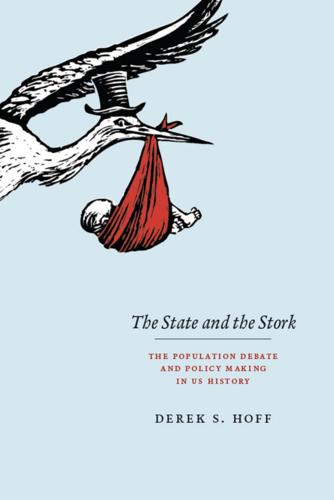
The State and the Stork: The Population Debate and Policy Making in US History
by
Derek S. Hoff
Published 30 May 2012
Clark, Philosophy of Wealth, 99. See also “Memorial to John Bates Clark, 1847–1938,” American Economic Review 28 (June 1938): 427–29. 56. Clark, Philosophy of Wealth, 100 and 102–3. Also see John Bates Clark, Essentials of Economic Theory (New York: Macmillan, 1907), chap. 19. 57. Quoted in Joseph Dorfman, Thorstein Veblen and his America (1934; reprint, New York: Augustus M. Kelley, 1972), 62. 58. Amasa Walker, The Science of Wealth, 4th ed. (Philadelphia: J. B. Lippincott and Co., 1872), 430. 59. Francis A. Walker, Political Economy, 3d rev. ed. (New York: Henry Holt, 1888), 310. 60. Ross, Origins of American Social Science, notes Walker’s “expansive version of American political economy” was tempered by recognition that the conditions necessary to lock the Malthusian devil in its chains were tenuous in modern industrial society (83–84).
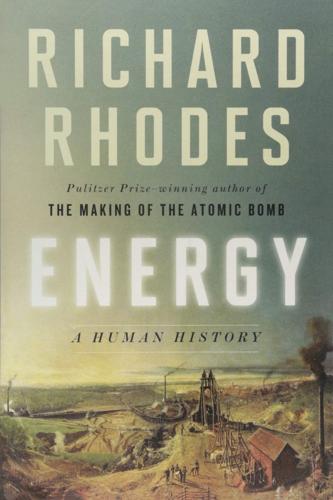
Energy: A Human History
by
Richard Rhodes
Published 28 May 2018
Kettering in particular had pushed for smaller, higher-compression engines operating on gas fortified with alcohol. Midgley, in his 1925 defense of tetraethyl lead, listed “conservation of petroleum” first among his reasons for having developed it.IV But their ideals, if such they were, conflicted with a larger movement in American life toward what Thorstein Veblen in 1899 had called “conspicuous consumption.” With knocking no longer a problem, the internal combustion engine essentially perfected, General Motors could build more-efficient, higher-mileage cars or it could build larger, more-powerful cars. In its struggle for dominance over Ford, the proponent of efficiency, it chose power.

Behemoth: A History of the Factory and the Making of the Modern World
by
Joshua B. Freeman
Published 27 Feb 2018
A booklet about Magnitogorsk, with an image of a blast furnace embossed in copper on its cover, was sold at the Soviet pavilion at the New York World’s Fair.66 Many American journalists, economists, and academic experts on the Soviet Union also were swept up by what one of the best known of their number, George Frost Kennan, called “the romance of economic development.” Foreign correspondents like Walter Duranty and William Henry Chamberlin from the Christian Science Monitor regularly filed stories about industrial projects and wrote about them in books. Economists and social critics influenced by Thorstein Veblen’s technocratic outlook, like Stuart Chase and George Soule, were particularly enthusiastic. Sharing the equation of progress with economic growth and industrialization, they admired the Soviet embrace of large-scale planning and thought the United States could learn much from it. Though the journalists and academics were well aware of the great sacrifices that were being made by the Soviet people to finance the crash industrial drive, most thought it was a price worth paying.

Capitalism in America: A History
by
Adrian Wooldridge
and
Alan Greenspan
Published 15 Oct 2018
Between 1898 and 1900, there were as many Americans killed by trains as there were British soldiers killed by the Boers.19 Growing speed was purchased at the expense of thousands of lives.20 Finally, great corporations also produced great concentrations of wealth that tested America’s belief in equality of opportunity. America’s new plutocrats were increasingly keen on flaunting their wealth as Schumpeter’s spirit of creative destruction gave rise to Thorstein Veblen’s disease of conspicuous consumption. They were also increasingly keen on adopting European airs and graces. They competed to get themselves admitted into the Social Register (first issued in 1888). They joined gentlemen’s clubs and country clubs (and, in once-egalitarian Philadelphia, even joined cricket clubs).

Model Thinker: What You Need to Know to Make Data Work for You
by
Scott E. Page
Published 27 Nov 2018
These models identify conditions under which people send costly signals to reveal information or their type. A person might signal wealth by purchasing an expensive piece of art, physical stamina by climbing a mountain, or empathy by posting support for causes on social media. Signaling to reveal status has always been a part of human nature. In the nineteenth century, Thorstein Veblen refined our understanding of signaling with his development of the concept of conspicuous consumption: he observed that rather than buy goods that bring direct enjoyment or practical utility, people often make choices to signal their social status. Veblen would take delight in our modern icons of conspicuous consumption, such as the Maybach Landaulet, an automobile that retailed for nearly $1.5 million, ten-year-old bottles of Cristal that sell for over $1,500 a bottle, and Leica cameras that sell for tens of thousands of dollars.

The Relentless Revolution: A History of Capitalism
by
Joyce Appleby
Published 22 Dec 2009
Timor Kuran, “Explaining the Economic Trajectories of Civilizations: The Systemic Approach,” Journal of Economic Behavior and Organization (2009). 34. Caroline Fohlin, Finance Capitalism and Germany’s Rise to Industrial Power (New York, 2007), 65–69. 35. Charles P. Kindleberger, A Financial History of Western Europe, 2nd ed. (Oxford, 1993 [1984]), 102–10. 36. Thorstein Veblen, Capitalism, Socialism and Democracy, 3rd ed. (New York, 1950), 83. 37. Trebilcock, Industrialization of Continental Powers, 40; Fohlin, Finance Capitalism and Germany’s Rise to Industrial Power, 220–21. 38. Margaret C. Jacob, Strangers Nowhere in the World: The Rise of Cosmopolitanism in Early Modern Europe (Philadelphia, 2006), 76–77; Thomas K.
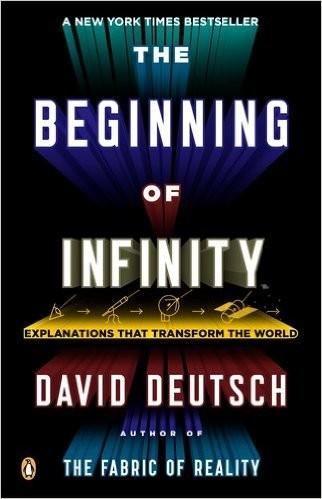
The Beginning of Infinity: Explanations That Transform the World
by
David Deutsch
Published 30 Jun 2011
A few years later, a graduate student in the then new subject of environmental science explained to me that colour television was a sign of the imminent collapse of our ‘consumer society’. Why? Because, first of all, he said, it served no useful purpose. All the useful functions of television could be performed just as well in monochrome. Adding colour, at several times the cost, was merely ‘conspicuous consumption’. That term had been coined by the economist Thorstein Veblen in 1902, a couple of decades before even monochrome television was invented; it meant wanting new possessions in order to show off to the neighbours. That we had now reached the physical limit of conspicuous consumption could be proved, said my colleague, by analysing the resource constraints scientifically.
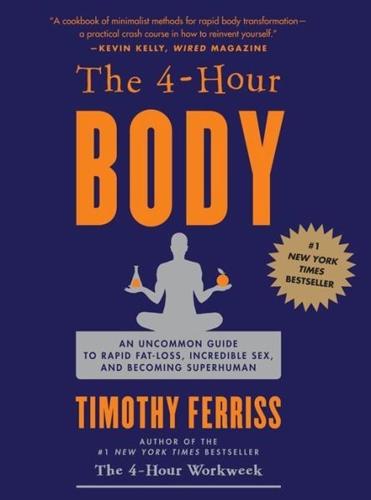
The 4-Hour Body: An Uncommon Guide to Rapid Fat-Loss, Incredible Sex, and Becoming Superhuman
by
Timothy Ferriss
Published 1 Dec 2010
When they have a choice, they try to enhance or protect their status. Some sorts of research have more status than others. Large grants have more status than small grants, so professional scientists prefer expensive research to cheap research. High-tech has more status than low-tech, so they prefer high-tech. As Thorstein Veblen emphasized in The Theory of the Leisure Class (1899), useless research has higher status than useful research. Doing useless work, Veblen said, shows that you are higher-status than those who must do useful work. So researchers prefer useless research, thus the term “ivory tower.” Fear of loss of job, grant, or status also makes it hard for professional scientists to propose radical new ideas.

Not Working: Where Have All the Good Jobs Gone?
by
David G. Blanchflower
Published 12 Apr 2021
The lies need to stop.44 The guilty plea of Michael Cohen where he implicated the president in campaign finance illegalities and the conviction of Paul Manafort on the same day, August 21, 2018, look like important turning points. The Democrats have gained chairmanships of vital House committees and consequently subpoena power. It doesn’t look, from thirty thousand feet, that peace and harmony are about to break out. Green Eggs and Ham: Pitchforks to the Ready Thorstein Veblen in his 1899 book The Theory of the Leisure Class made it very clear that the rich care about what he called conspicuous consumption. Conspicuous consumption means spending money on luxury goods and services to display economic power. The poor notice. Sir Philip Green bought British Home Stores (BHS), which I remember from my childhood as a rather rundown department store, in 2000 for £200 million.

The Climate Book: The Facts and the Solutions
by
Greta Thunberg
Published 14 Feb 2023
Indeed, research has shown again and again that once a family has reached a certain middle-class status, spending on things does not bolster its self-reported well-being, though spending money on experiences does. That is perhaps because, as families become richer, they spend more money on ‘positional’ goods, ones that fulfil no basic need but instead situate a family among its peers and broadcast its wealth and taste. (Thorstein Veblen, of course, recognized this dynamic more than a century ago.) One way or another, consumerism is harming a planet already under extraordinary strain. Consider the contemporary obsession with the SUV. The gas-guzzlers’ share of the vehicle market has doubled in the past decade, for no other reason than consumer preference.

Adaptive Markets: Financial Evolution at the Speed of Thought
by
Andrew W. Lo
Published 3 Apr 2017
As an Anglican clergyman, he framed his arguments in moralistic terms, but his reasoning can easily be restated in terms familiar to today’s economists. After the death of Charles Darwin, evolutionary theory languished, remaining undeveloped for decades, a crude version of it (“social Darwinism”) used to justify inhumane government policies. As a result, it tended to attract outsiders. A case in point is Thorstein Veblen. When you use the phrase “conspicuous consumption” to describe an especially ostentatious display of wealth, you’re using one of Veblen’s concepts. Today, Veblen is viewed as one of the great sociologists of the twentieth century, but during his life, he was considered something of a renegade economist.
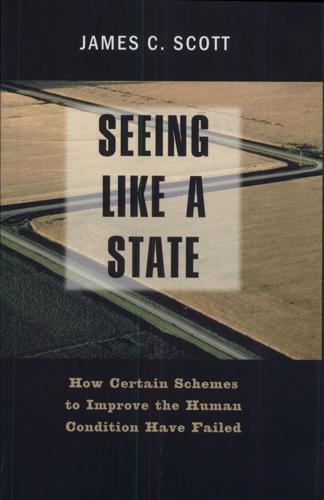
Seeing Like a State: How Certain Schemes to Improve the Human Condition Have Failed
by
James C. Scott
Published 8 Feb 1999
Rabinbach, The Human Motor, p. 272. Rabinbach is here paraphrasing the conclusions of a seminal article by Charles S. Maier, "Between Taylorism and Technocracy: European Ideologies and the Vision of Industrial Productivity in the 1920s," Journal of Contemporary History 5, no. 2 (1970): 27-63. 42. Thorstein Veblen was the best-known social scientist expounding this view in the United States. Literary versions of this ideology are apparent in Sinclair Lewis's Arrotvsmith and Ayn Rand's Fountainhead, works from very different quadrants of the political spectrum. 43. Rabinbach, The Human Motor, p. 452. For Rathenau's writings, see, for example, Von kommenden Dingen (Things to come) and Die Neue Wirtschaft (The new economy), the latter written after the war. 44.
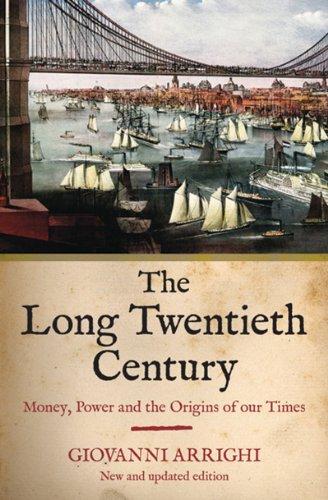
The Long Twentieth Century: Money, Power, and the Origins of Our Times
by
Giovanni Arrighi
Published 15 Mar 2010
In doing so, the leaders and governors of financial expansions tended to give temporary relief to the competitive pressures that depressed returns to capital, and thereby contributed to the transformation of the end of the material expansion into a “wonderful moment” for a wider circle of capitalist accumulators. “Depression”, wrote Thorstein Veblen (1978: 241) shortly after the end of the Great Depression of 1873-96, “is primarily a malady of the affections of the business men. That is the seat of the difficulty. The stagnation of industry and the hardship suffered by the workmen and other classes are of the nature of symptoms and secondary effects.”
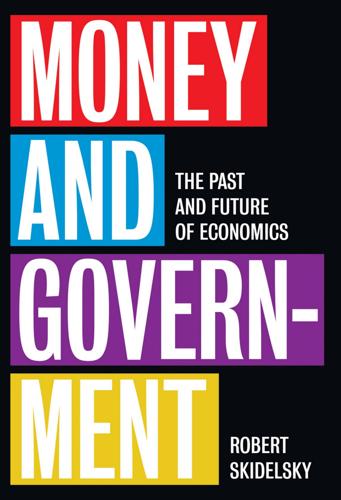
Money and Government: The Past and Future of Economics
by
Robert Skidelsky
Published 13 Nov 2018
Earlier in its history, all these subjects formed part of the broad church of political economy. They contain rich insights into the working of economies which should be an integral part of public policy discussion. If they are to help us through the next century, economics students should take as exemplars thinkers like Adam Smith, Karl Marx, John Stuart Mill, Thorstein Veblen, Karl Polanyi, Friedrich Hayek, Joseph Schumpeter and John Maynard Keynes, whose greatness, for all their differences, lay in the fact that they were more than economists. Otherwise economics will simply die, and people will turn elsewhere for intellectual nourishment and practical guidance. 390 Notes I n t roduc t ion 1.

The Stuff of Thought: Language as a Window Into Human Nature
by
Steven Pinker
Published 10 Sep 2007
Many fashions—skirt lengths, lapel widths, tail fins, facial hair, and of course baby names—undergo smooth waves of swelling and subsidence, rather than a sudden jump from one level to another or the spiky chaos of the stock market. It’s tempting to invoke a physical metaphor like momentum or pendular motion, but we’d still need an explanation of why the metaphor would be apt. The economist Thorstein Veblen and the art critic Quentin Bell noted that cycles of fashion could be explained by the psychology of status.46 The elite want to differentiate themselves from the rabble in their visible accoutrements, but then the folks in the next stratum down will copy them, and then those in the stratum below that, until the style has trickled down to the hoi polloi.

Ayn Rand and the World She Made
by
Anne C. Heller
Published 27 Oct 2009
“In my campaign for the House [of Representatives in 1960],” he grumbled, “she was the one writer people knew and talked about.” The Wall Street Journal echoed the alarm, warning upper-crust parents and corporate executives that their sons and daughters were sitting around “in booths in college-town snack shops” arguing about her work with the same seriousness that earlier generations had brought to discussions of Thorstein Veblen and Karl Marx. Unfortunately, Rand did read Sidney Hook’s review of For the New Intellectual in The New York Times Book Review on April 9, 1961, and for a number of reasons it provoked a weeks-long fit of rage. One was Professor Hook’s allegation that she had misread Aristotle. The distinguished philosopher and historian at NYU was making a point that Isabel Paterson had tried to make years earlier: “A is A” implies nothing, he wrote, other than a logical method to test the consistency of philosophical observations and ideas and cannot be used as the basis for a code of ethics.
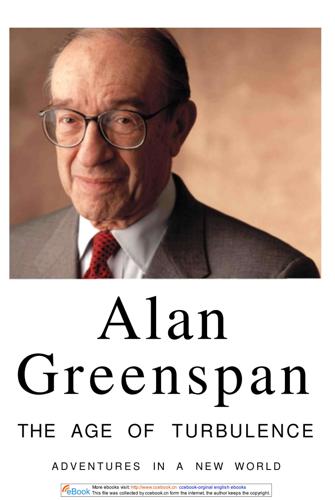
The Age of Turbulence: Adventures in a New World (Hardback) - Common
by
Alan Greenspan
Published 14 Jun 2007
The data made clear that how much people spent or saved was determined not by the level of their real purchasing power, but by their pecking order on the income scale, their income relative to that of others. + What is all the more remarkable about this finding is that it held even in the latter part of the nineteenth century, when households spent much more of their income on food than they did in 2004.* None of this would have surprised Thorstein Veblen, the American economist who in his book The Theory of the Leisure Class, written in 1899, famously gave the world the expression "conspicuous consumption." He noted that an individual's purchase of goods and services is tied to what used to be called "keeping up with the Joneses." If Katie had an iPod, Lisa had to have one too.
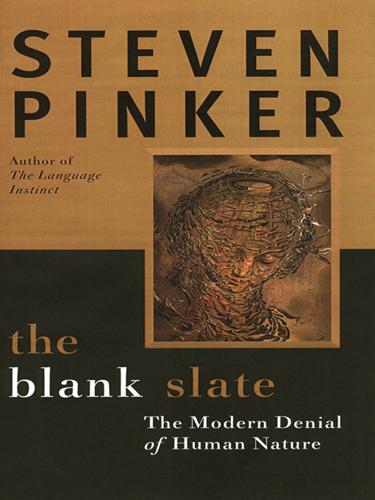
The Blank Slate: The Modern Denial of Human Nature
by
Steven Pinker
Published 1 Jan 2002
Dissanayake emphasizes this spiritual part of the art experience, which she calls “making special.”36 A final bit of psychology engaged by the arts is the drive for status. One of the items on Dutton’s list of the universal signatures of art is impracticality. But useless things, paradoxically, can be highly useful for a certain purpose: appraising the assets of the bearer. Thorstein Veblen first made the point in his theory of social status.37 Since we cannot easily peer into the bank books or Palm Pilots of our neighbors, a good way to size up their means is to see whether they can afford to waste them on luxuries and leisure. Veblen wrote that the psychology of taste is driven by three “pecuniary canons”: conspicuous consumption, conspicuous leisure, and conspicuous waste.
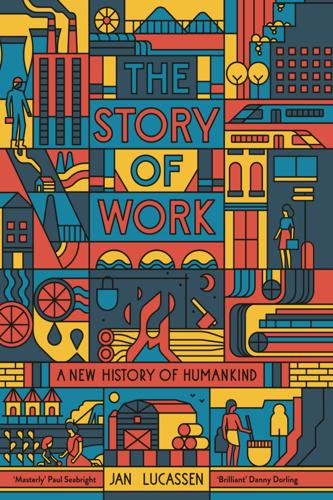
The Story of Work: A New History of Humankind
by
Jan Lucassen
Published 26 Jul 2021
This makes the achievements of Karl Bücher, like Marx and Weber a great German thinker, all the more remarkable. Already more than a century ago, Bücher’s intellectual breadth (as well as being an economist, he founded journalism as an academic discipline) was instrumental.17 Among the many earlier scholars who have inspired me are the influential authors Thorstein Veblen and Hannah Arendt, both of whom thought deeply about the theme of work.18 In recent decades, much new and high-quality research has been done, and with a sensible spread over time and space, making it possible to forge a new path.19 As I see it, all this research has yielded four key results for our view of the development of labour relations.20 Firstly, I distinguish two important alternatives for market economies: reciprocal relations, dominant among hunter-gatherers but still vibrant today within households everywhere, and tributary redistribution societies.
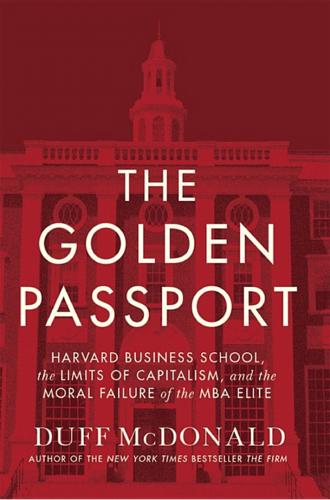
The Golden Passport: Harvard Business School, the Limits of Capitalism, and the Moral Failure of the MBA Elite
by
Duff McDonald
Published 24 Apr 2017
The School went so far as to claim that working for the School after graduation offered the same advantage over working for someone else as going to the School did in the first place—an accelerated climb up the learning curve. In other words, anything HBS-related was superior to any alternative. There were dissenting opinions, of course. In The Higher Learning in America, Thorstein Veblen ventured the opinion that the speed of one’s climb was irrelevant, because the learning curve was actually a road to nowhere: “No gain comes to the community at large from increasing the business proficiency of any number of its young men. There are already much too many of these businessmen, much too astute and proficient in their calling, for the common good.

Capital in the Twenty-First Century
by
Thomas Piketty
Published 10 Mar 2014
Despite many ups and downs, this handful of very high salaries persisted in France until World War I (and thus to the fall of the rentier). On these evolutions, see the online technical appendix. 47. See Piketty, Les hauts revenus en France, 530. 48. This argument sets aside the logic of need in favor of a logic of disproportion and conspicuous consumption. Thorstein Veblen said much the same thing in The Theory of the Leisure Class (New York: Macmillan, 1899): the egalitarian US dream was already a distant memory. 49. Michèle Lamont, Money, Morals and Manners: The Culture of the French and the American Upper-Middle Class (Chicago: University of Chicago Press, 1992).

Palo Alto: A History of California, Capitalism, and the World
by
Malcolm Harris
Published 14 Feb 2023
Though Stanford was a young institution, Jordan was a powerful man for a scholar to have in his corner, especially after he seized control of the university. Jordan encouraged the immigrant Ichihashi to pursue an academic career in the United States. After graduation, a rejection from Columbia kept him at Stanford, where he received his master’s in economics, studying with (among others) Thorstein Veblen. The economics faculty gave him work after graduation, conducting interviews with Japanese immigrants in California for a congressional study. His interaction with fishermen, sugar beet farmers, and asparagus pickers doesn’t seem to have inculcated much sympathy for the working class in the self-important young man, whose identity was based in large part on his separation from such people.

Nature's Metropolis: Chicago and the Great West
by
William Cronon
Published 2 Nov 2009
Hayes of Detroit, “goes back into the interior cities and towns until the local rate into Chicago and the expense from there added equal the ‘all rail’ from the interior to the seaboard.” J. D. Hayes, “Statement in Regard to the Development of Manufacturing Industries in Western Towns and Cities,” ibid. (1881), appendix no. 8, p. 178. Thorstein Veblen dated the onset of serious lake-rail competition in the eastward movement of grain from Chicago to 1873–74, but the cycle of railroad rates was already in place by then; see Thorstein B. Veblen, “The Price of Wheat since 1867,” J. Pol. Econ. 1 (1892–93): 88. 127.Like railroads everywhere, the eastern roads tried to solve their competitive problems by price-fixing and were aided in so doing by the eventual development of government regulation.